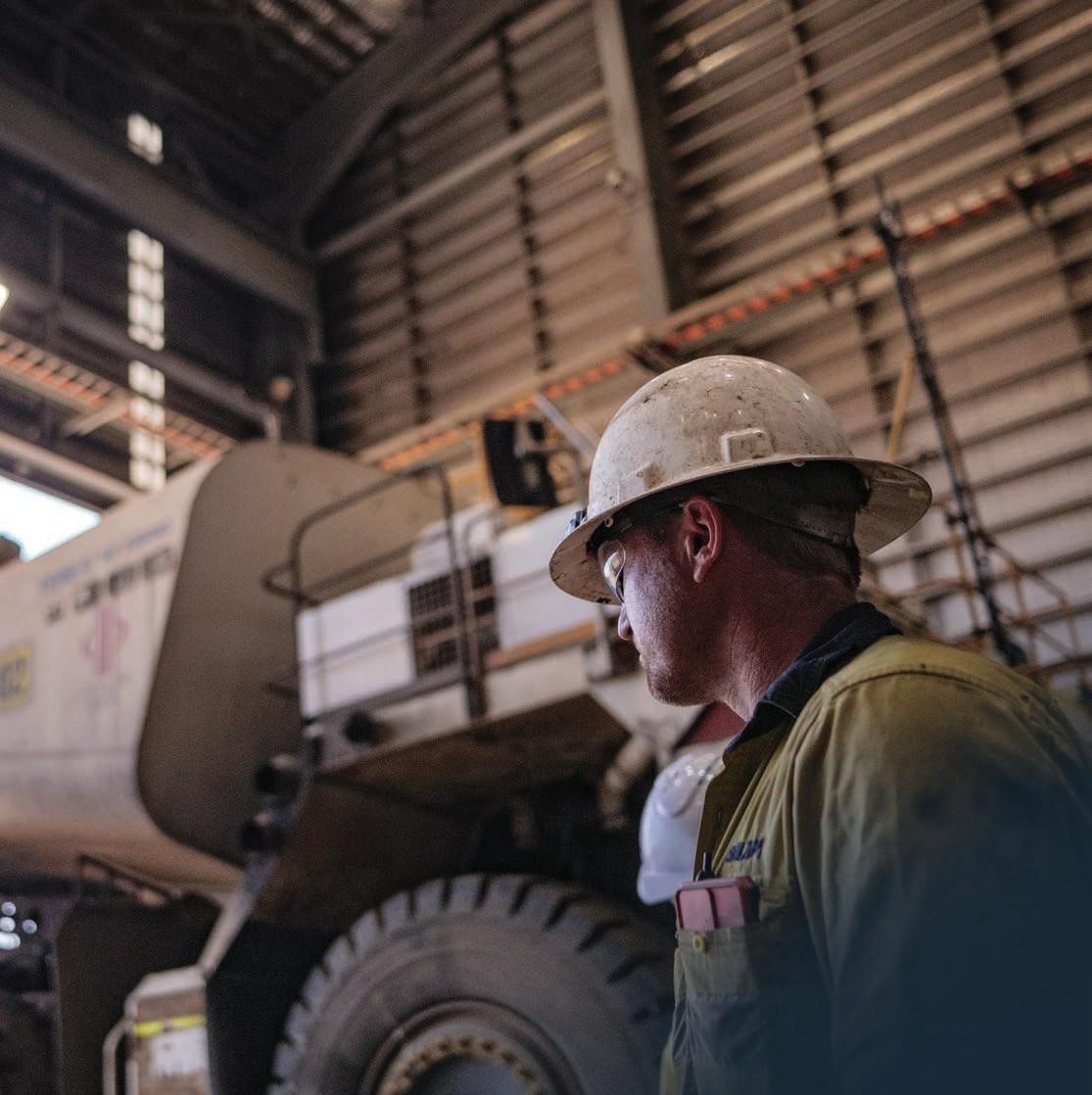VOLUME 117/11 | DECEMBER 2025
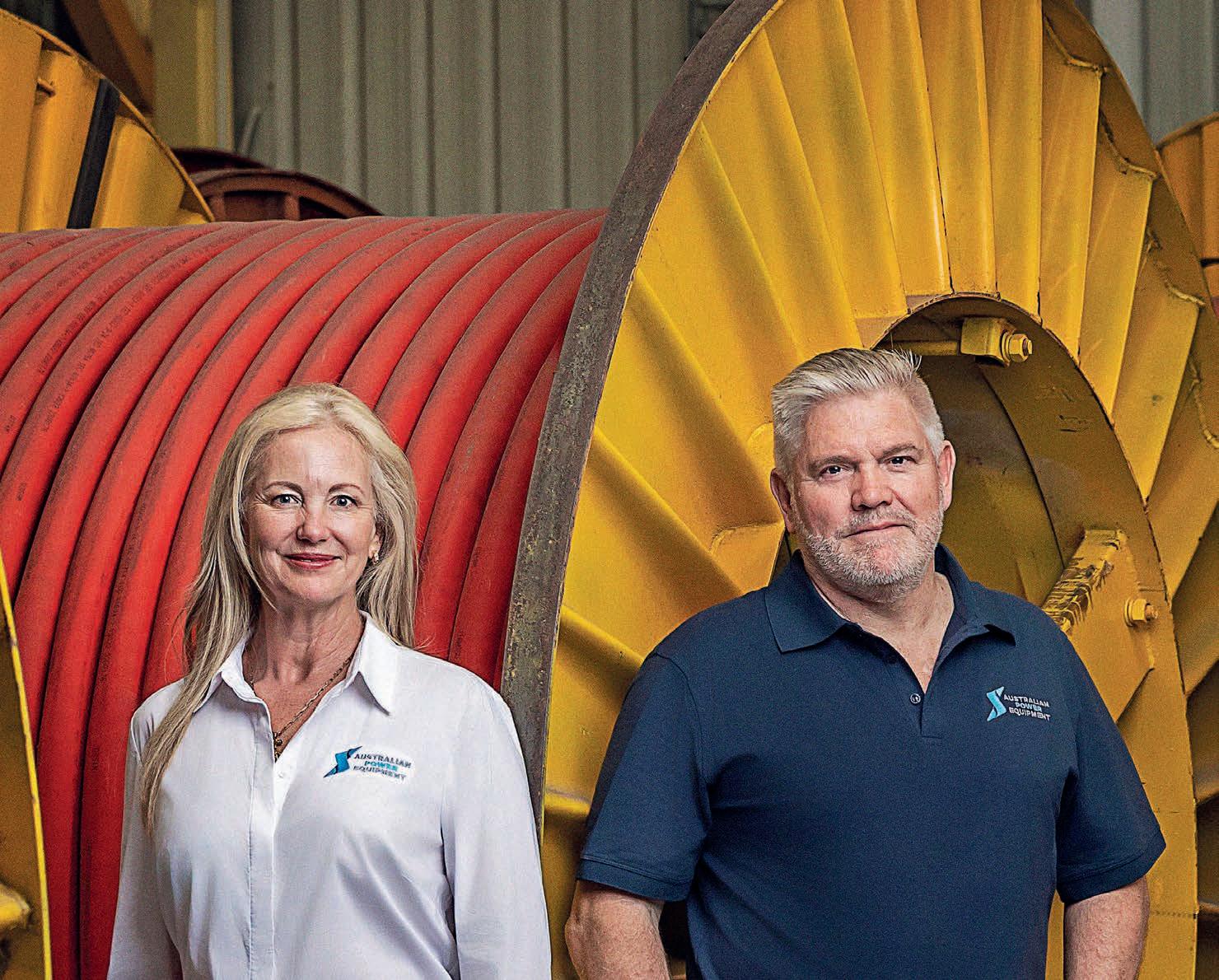


INDUSTRY INSIGHT
PROSPECT AWARDS



AUSTRALIAN POWER EQUIPMENT LEADS THE CHARGE IN MINING ELECTRIFICATION










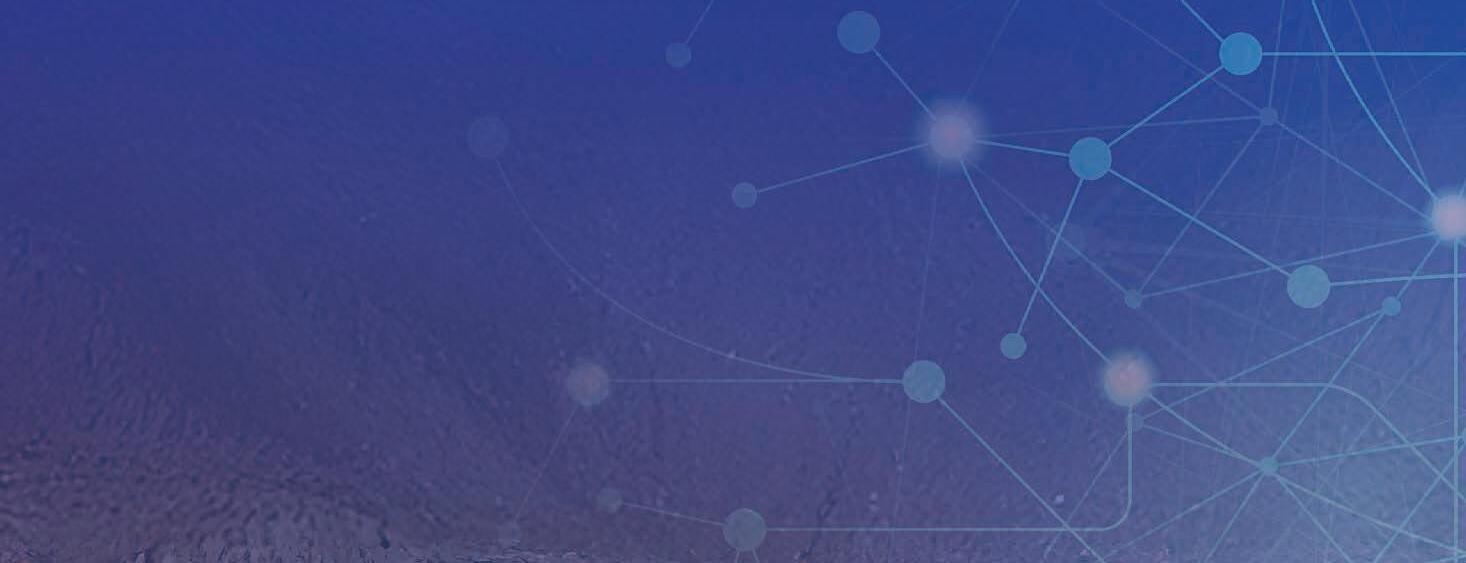



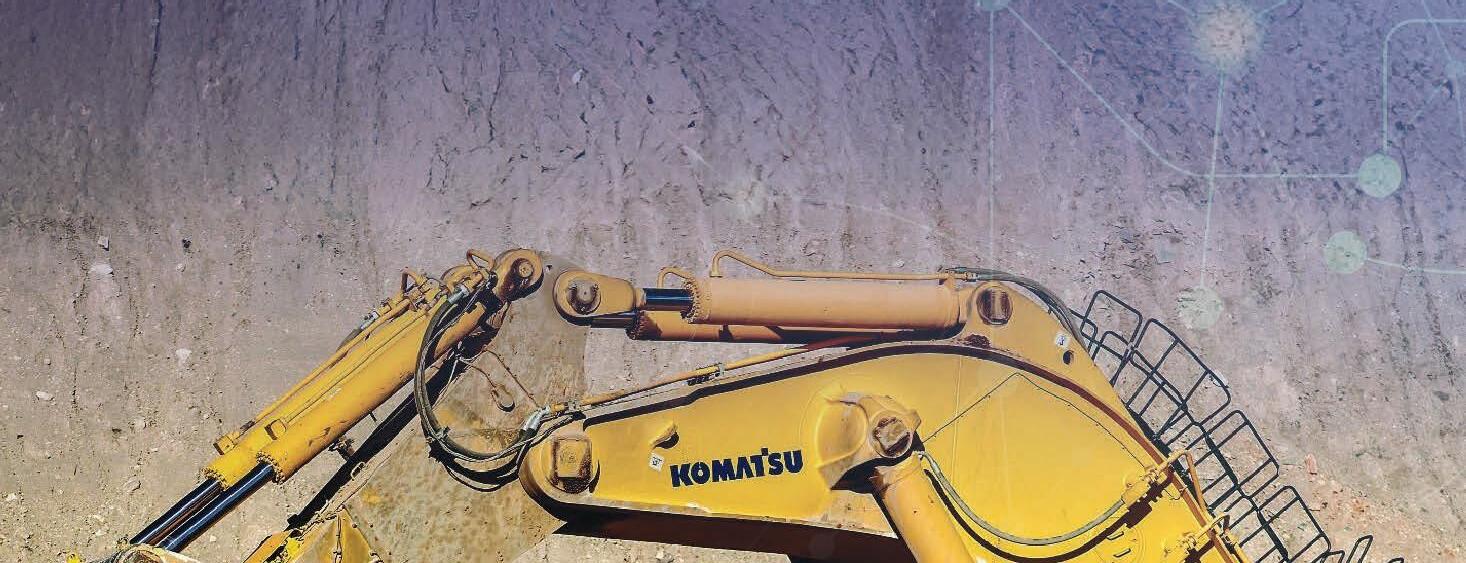
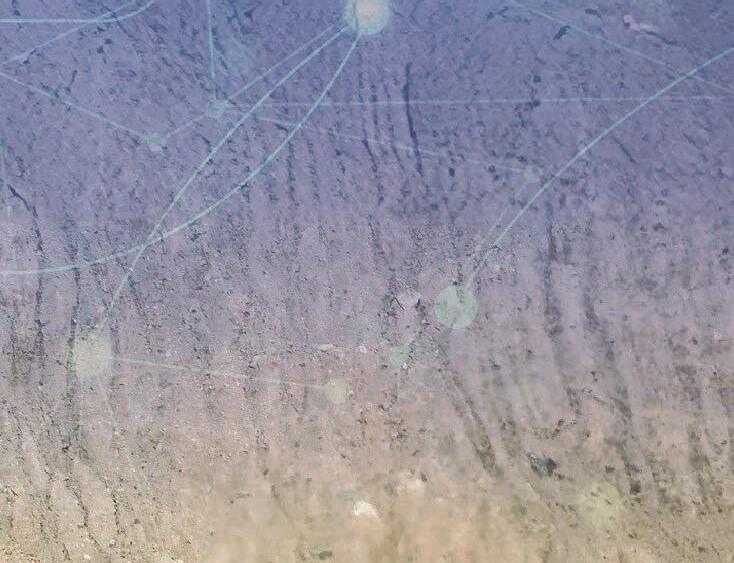



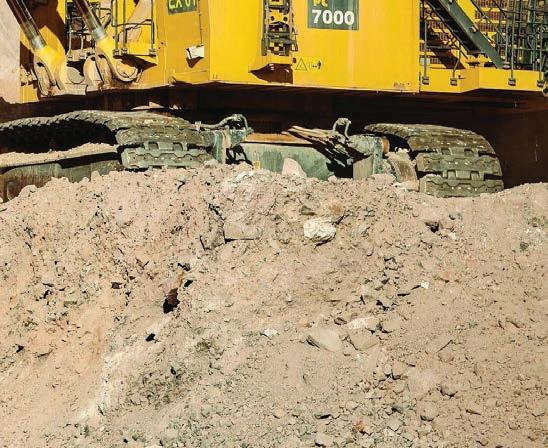

PAUL HAYES paul.hayes@primecreative.com.au


VOLUME 117/11 | DECEMBER 2025



INDUSTRY INSIGHT
PROSPECT AWARDS



AUSTRALIAN POWER EQUIPMENT LEADS THE CHARGE IN MINING ELECTRIFICATION





















PAUL HAYES paul.hayes@primecreative.com.au

As Australia’s mining sector continues to evolve, electrification is becoming one of the most significant forces shaping the industry’s present and future.
Mining operations have long relied on diesel-driven trucks, high-heat processing plants, and remote infrastructure to extract and process critical resources. Today, however, a new generation of battery-electric vehicles, electric motors and integrated energy systems is transforming the way mines operate, making them cleaner, safer and more efficient.
As companies seek to decarbonise, the transition to electric power is a business move as much as a sustainability one. Mines that adopt electrified equipment can reduce operational emissions, lower noise and particulate pollution, and improve on-site working conditions, all while maintaining or improving productivity.
The combination of electrification and renewable energy systems, particularly solar and wind in remote regions, offers not only emissions reductions but potential operational cost savings and greater energy independence.
The benefits extend beyond environmental. Electrified machinery has fewer moving parts, which can reduce maintenance requirements and increase equipment availability. Energy management systems and microgrids paired with battery storage are allowing mining operations to optimise loads, reduce fuel logistics, and improve resilience against supply disruptions..
But the transition is not without challenges. High upfront capital costs, the need for charging infrastructure, and grid limitations in remote areas require careful planning. Yet collaboration across the mining and equipment technology sectors is helping to overcome these barriers.
CHAIRMAN JOHN MURPHY
CHIEF EXECUTIVE OFFICER CHRISTINE CLANCY
MANAGING EDITOR PAUL HAYES
Email: paul.hayes@primecreative.com.au
ASSISTANT EDITOR
ENGEL SCHMIDL
Email: engelbert.schmidl@primecreative.com.au
COVER IMAGE: Australian Power Equipment
Industry groups and consortia are sharing best practices, developing interoperability standards, and scaling up solutions that make electrification both practical and sustainable.
Viewed through a straightforward lens, electrification presents a strategic opportunity for Australia. Global buyers and investors increasingly prioritise low-carbon supply chains, giving mines that adopt electrification a competitive advantage in securing offtake agreements and investment. Moreover, as mining operations electrify, the local mining equipment, technology and services (METS) sector grows in importance, creating opportunities for Australian companies to supply the technology and expertise needed to support the global energy transition.
The momentum behind electrification signals a broader transformation in how Australian mines operate. By integrating battery-electric vehicles, electric motors and advanced energy systems, operations are becoming cleaner, more efficient and better able to manage energy use. This shift is helping miners reduce emissions, optimise costs and improve resilience, benefits that extend from remote outback operations to major processing hubs.
Electrification is becoming a core component of modern mining strategy. Mines that adopt these technologies are positioning themselves for long-term competitiveness in the global market. The choices made today will shape operational efficiency and Australia’s ability to supply the minerals critical to a decarbonised world.

Paul Hayes Managing Editor
BUSINESS DEVELOPMENT MANAGERS

by industry veterans who bring deep roots in power generation, utilities, resources and infrastructure, APE delivers tailored, safe and cost-effective equipment and engineering solutions across Australia. It combines technical know-how with pragmatic service: whether sourcing critical transformers, switchgear or energy systems, its aim is to get a job done on time and on budget, with safety and reliability front of mind. At the heart of APE is its commitment to innovation, sustainability and community. The company believes every project is an opportunity to do things better, reducing environmental impact, supporting regional capability and lift local communities.
Cover image: Australian Power Equipment
JOURNALISTS
DYLAN BROWN
Email: dylan.brown@primecreative.com.au
PAUL HOWELL
Email: paul.howell@primecreative.com.au
BEN CARTWRIGHT
Email: ben.cartwright@primecreative.com.au
ETHAN BENEDICTO
Email: ethan.benedicto@primecreative.com.au
CLIENT SUCCESS MANAGER
JANINE CLEMENTS
Tel: (02) 9439 7227
Email: janine.clements@primecreative.com.au
SALES MANAGER
JONATHAN DUCKETT
Mob: 0498 091 027
Email: jonathan.duckett@primecreative.com.au
JAMES PHIPPS
Mob: 0466 005 715
Email: james.phipps@primecreative.com.au
ROB O’BRYAN
Mob: 0411 067 795
Email: robert.obryan@primecreative.com.au
ART DIRECTOR MICHELLE WESTON michelle.weston@primecreative.com.au
SUBSCRIPTION

















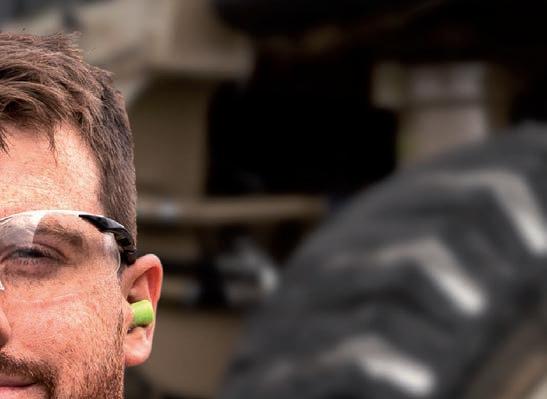

At Hastings Deering, businesses working within the mining industry can now take advantage of a new industry leading warranty with every Cat® Certi ed Rebuild. Get ‘as-new’ performance and bene t from the multiple lives designed into Cat machines, at a fraction of the cost of buying new.





8 INDUSTRY INSIGHT
From coal to critical minerals
A new chapter is unfolding in the Latrobe Valley, where Latrobe Magnesium’s new technology has propelled the region from a coal-fired past to a critical minerals future.
10 ELECTRIFICATION
Mining’s electric revolution
From battery-powered haul trucks to all-electric underground fleets, electrification is rapidly reshaping the way Australia mines.
12 ELECTRIFICATION
Powering the future of mining
With deep technical expertise and a sustainability-driven approach, Australian Power Equipment is redefining how mines harness electricity for safer, cleaner, more efficient operations.
24 DECARBONISATION
Partnerships power Real Zero push When it comes to climate commitments, Fortescue is showing that heavy industry can decarbonise profitably and rapidly.

56 INDUSTRY EVENTS
Ambition and action
26 INDUSTRY INSIGHT
Ore and order Australian Mining spoke to an economist to examine the nature of recent iron ore negotiations between BHP and China.
36 CRITICAL MINERALS
From ore to opportunity
Metso’s David Tulloch, Duncan Wyatt and Guillaume Lambert discuss the company’s innovations and the buzz around critical minerals.

The recent WA Mining 2025 showed technology’s time has well and truly arrived.
68MACHINERY
Mastering industrial gear service
SEW-EURODRIVE is redefining what longterm support looks like for industrial gear systems across Australia.
70 PROSPECT AWARDS
Ushering in a new era
The mining sector is no stranger to accolades, but the 2025 Australian Mining Prospect Awards carry a significance beyond celebration.
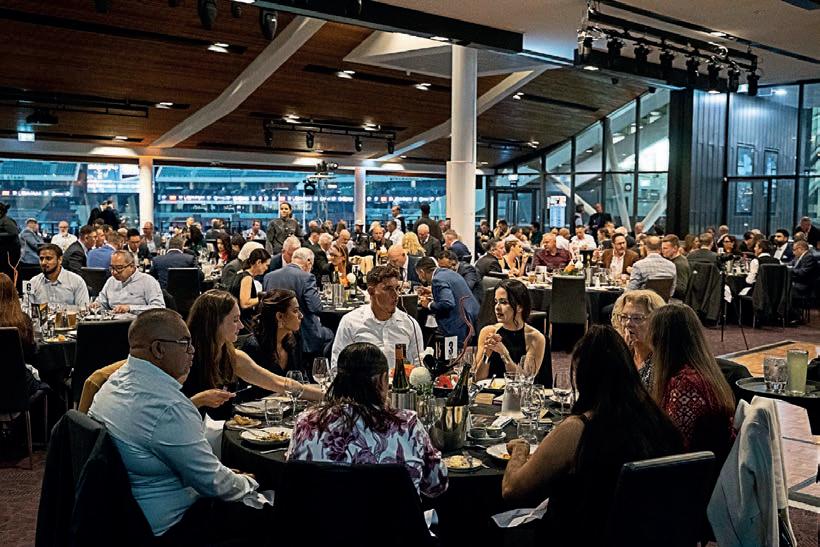


SACOME’S CEO NICOLA MCFARLANE SAT DOWN WITH AUSTRALIAN MINING TO DISCUSS HOW SOUTH AUSTRALIA’S MINING SECTOR IS UNIQUELY POSITIONED IN THE GLOBAL ENERGY TRANSITION.



With the mining sector looking to a more sustainable future, South Australia sits at the forefront of a rapidly developing industry.
Described by the State Government as at the “vanguard of the global energy transition”, SA has lifted its net electricity generation from renewable energy from one per cent to 74 per cent in just over 16 years.
This is just one of the reasons, according to one of the state’s leading industry bodies, SA’s infrastructure is “ready for the charge”.
“This is a huge opportunity for the state to benefit from what is specific in the ecosystem and environment here,” South Australian Chamber of Mines and Energy (SACOME) chief executive officer (CEO) Nicola McFarlane told Australian Mining
“We have all the puzzle pieces lining up – wind, solar, natural resources –and it’s allowed us to move quickly to providing renewable support.
“We have world-class copper and iron ore resources, including magnetite, to support the transition to green iron. The state is not only endowed with copper and magnetite but is rich in uranium, silver, gold and other critical minerals needed for the transition.

“We already have the key elements to enable a resilient resources sector to underpin South Australia’s longterm prosperity.”
McFarlane was appointed interim CEO of SACOME in August, having spent two decades leading highimpact projects and organisations in the global energy transition in Australia and the UK.
These include managing largescale hydrogen and decarbonisation efforts as the chief operating officer of the Office of Hydrogen Power in South Australia and as the Director for
McFarlane’s career began in oil and gas, where she provided safety and risk management advisory. The diversity of opportunities, she said, is what drew her to a career path in engineering and ultimately led her to become a leader in the global energy transition, working to support heavy industry.
“My background made it easy to transition to support the decarbonisation of the mining and energy sector. Here in South Australia, we are at the forefront of renewable energy generation and maximising the benefit of our natural and mineral resources to help decarbonise the planet.” McFarlane said.
“South Australia’s potential aligns with my purpose and drive to
support the realisation of the energy transition and achieving net-zero emissions globally.”
The ResourcefulSA campaign, in market since early 2024, is intended to educate and inspire the SA public about the fundamental role mining plays in everyday life.
The campaign also demonstrates how the resources sector is needed to support decarbonisation, whether it is copper for electric vehicles or silver for solar and iron for green steel production.
“It is important for the community to understand the role the resources sector plays in enabling us to prosper in a decarbonised economy,” McFarlane said.

This, McFarlane said, is just the start of the journey for SA, with SACOME’s priorities extending beyond the facilitation of the energy transition to focus on the future prosperity of the state.
“The focus for the sector is still on the enablers of energy security, infrastructure, regulation, community trust and workforce development,” she said.
“There is no doubt that resilient and focused collaboration not only within the sector but between the resources sector and government has the potential to drive progress, unlock new value, and shape the future of sustainable practices for the advancement of the sector.”





















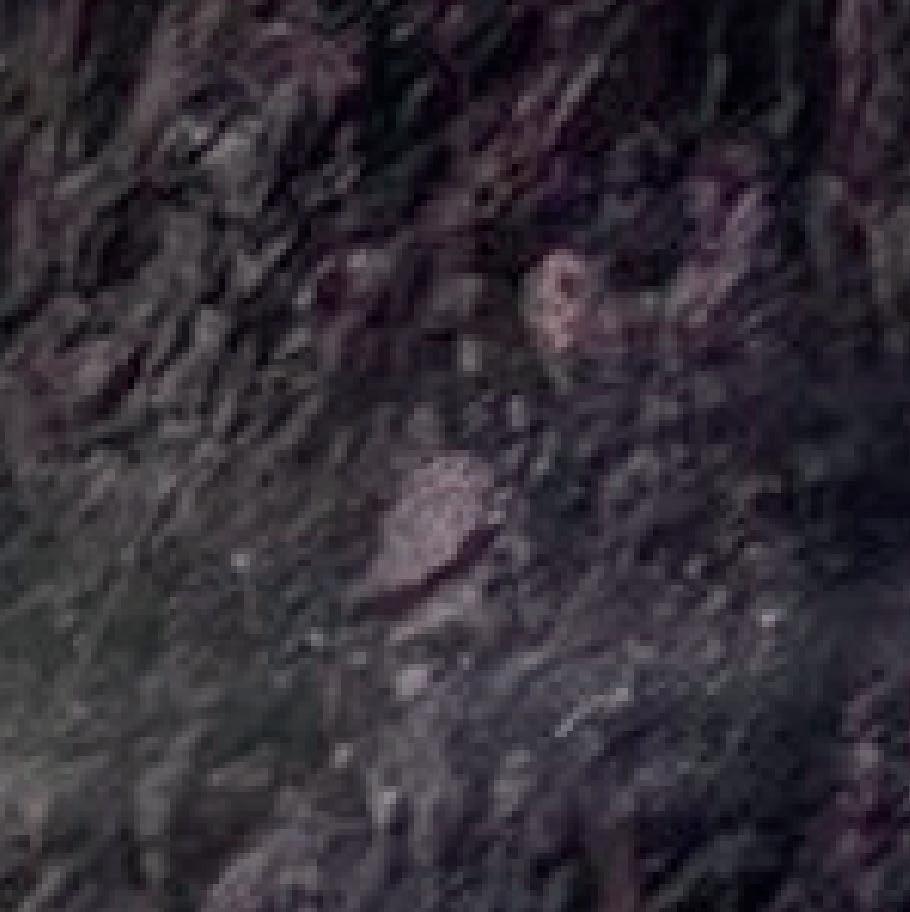


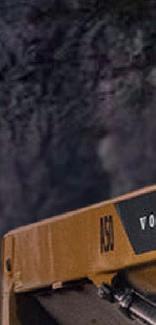




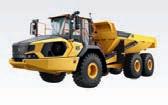



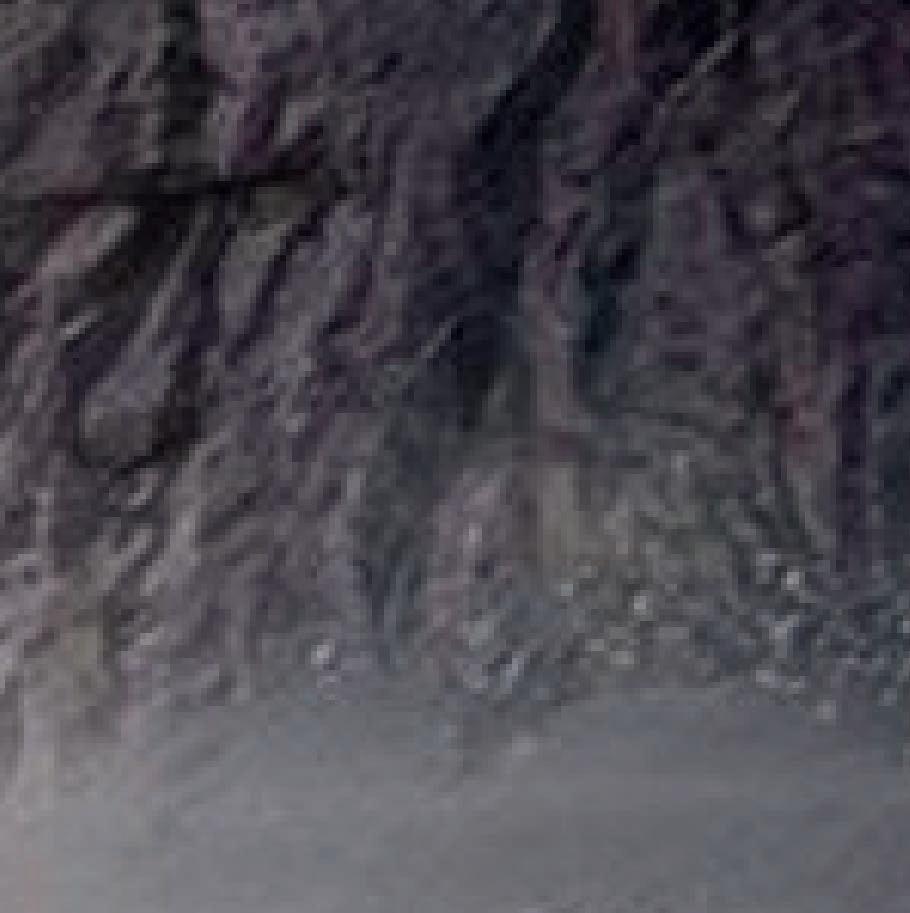







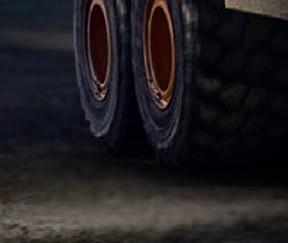

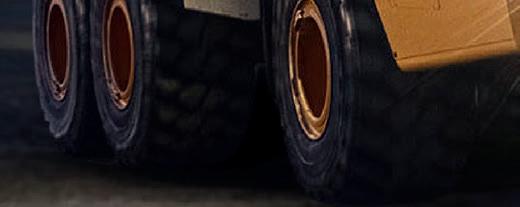































A NEW CHAPTER IS UNFOLDING IN THE LATROBE VALLEY, WHERE LATROBE MAGNESIUM’S NEW TECHNOLOGY HAS PROPELLED THE REGION FROM A COAL-FIRED PAST TO A CRITICAL MINERALS FUTURE.
It’s a long way from Victoria’s Latrobe Valley to Washington, D.C. – both geographically and industrially.
Not far from the site of the former Hazelwood Power Station, Latrobe Magnesium (LMG)
24/7 OPERATION
energy transition.
But in October, the Latrobe Valley and Washington, D.C. crossed paths in a moment that could reshape a region and a resource.
From the historic Lafayette Building, just around the corner from the White
landmark US–Australia critical minerals framework agreement.
The LOIs were extended to seven Australian companies: Arafura Rare Earths, Northern Minerals, Graphinex, VHM, RZ Resources, Sunrise Energy Metals, and LMG.

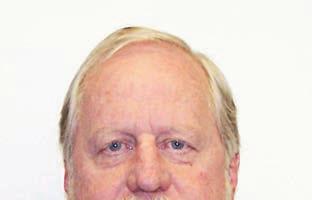


work we’ve put in,” Paterson told Australian Mining. “We were there [in Washington] alongside the big companies like Alcoa, Nyrstar and Iluka. I think the smaller companies like ours got picked on the back of what they produce and how they produce it.”
The recognition underscores the strategic importance of magnesium, and the unique position LMG occupies within that market. China currently produces about 90 per cent of global magnesium. Russia contributes another six per cent, with the balance coming from smaller, less reliable sources.
With magnesium crucial to lightweight alloys, green manufacturing and defence applications, the US has every reason to diversify supply. The metal was added to the US critical minerals list in 2018 and remains there today.
Australia currently imports all 8000 tonnes of the magnesium it consumes each year. The country’s Critical Minerals Strategy 2019 did not initially include magnesium, but the 2023 update identified it as an emerging mineral of interest.
Paterson said interest in LMG stems from three key factors: magnesium’s importance to advanced manufacturing; China’s dominance of the market; and the scarcity of reliable Western producers. That interest, however, would count for little if LMG was not delivering results. The company has spent years on research and development, refining its processes and progressing to the point where it can now reliably produce a commercially viable product.
“Firstly, it’s a good product,” Paterson said. “We’re using a completely new process; no one anywhere else in the world is close to what we’re doing.”
LMG’s patented hydrometallurgical

extraction and thermal reduction process extracts magnesium metal from fly ash generated by brown-coal-fired power stations, including the nearby Yallourn power station, which has enough fly ash to supply LMG for up to 50 years of operation.
The low-emission process converts almost 100 per cent of the ash into saleable materials, producing valuable by-products such as supplementary cementitious material (SCM), silica and iron oxide. In simplified terms, the process involves dissolving magnesium, iron and calcium minerals from fly ash using acid, removing impurities, and converting the resulting magnesium solution into magnesium oxide (MgO). The acid is recovered and reused, creating a circular system.
In 2024, LMG produced its first MgO from brown-coal fly ash at its 1000-tonnes-per-annum (tpa) demonstration plant in Hazelwood North, a landmark that validated the hydromet process and confirmed its potential to reduce production costs and emissions by up to 60 per cent.
Paterson recounted the whirlwind year that brought LMG to the attention of Washington.
“We put in a [US] Department of Defense whitepaper back in June, and we spoke to probably 50 Pentagon people in one sitting,” he said.
“Then there were more meetings with the Department of Commerce.”
That exposure ultimately opened doors to some of the world’s largest industrial manufacturers.
“We spoke to all the majors when we were there: Lockheed Martin, Boeing, GE, Raytheon, and others,” Paterson said. “After I spoke, they all just came and grabbed me and asked when they could come down to see our plant.”
As one of the only new Western producers of magnesium, LMG’s progress carries global weight.
“There’s a small producer in Israel with pollution problems, and another in Turkey but they’re not expanding and it’s done in a very archaic way,” Paterson said.
LMG’s next step is to build a 10,000tpa commercial plant in the Latrobe Valley, leveraging its breakthrough technology and materialhandling systems to achieve globally competitive costs and low emissions.
In the longer term, the company has partnered with Bechtel to plan a 100,000tpa international magnesium mega-plant using ferronickel slag feedstock, with Malaysia emerging as a likely location. The favoured site – Samalaju Industrial Park in Sarawak – offers access to hydroelectric power, potentially enabling fully renewable operations.
LMG has already completed the first phase of a pre-feasibility study for this project and signed a binding memorandum of understanding with Société Le Nickel (SLN) to supply 450,000 tonnes of slag per year over
20 years. The company is now seeking joint-venture partners to bring the project to fruition within five years.
The EXIM LOI has significantly raised LMG’s profile, as well as its credibility among institutional investors looking for sustainable producers in high-growth markets.
On the back of that support, the company can now accelerate its expansion plans, a welcome development for the company and a region preparing for the closure of the Yallourn power station in 2028 and Loy Yang in 2032.
Paterson said construction of the demonstration plant employed about 100 locals, directly and through contractors, and he hopes LMG’s next stages can deepen that impact.
“We want to make sure it stays as local as we can,” he said. “We’re very mindful of locals and our place in the region, and we’ve talked directly to green groups in the Valley. We discussed emissions and everything else. We had no objections at the EPA and none locally, which is amazing for any project of our size and what we do.”
Forecasts for sustained demand for magnesium are consistent across analysts. IndustryARC projects the global magnesium metal market will reach $US9.12 billion by 2030, growing at around 6.7 per cent annually. Coherent Market Insights forecasts almost $US10 billion by 2030, tracking almost 10 per cent annual growth.
SUSTAINABLE

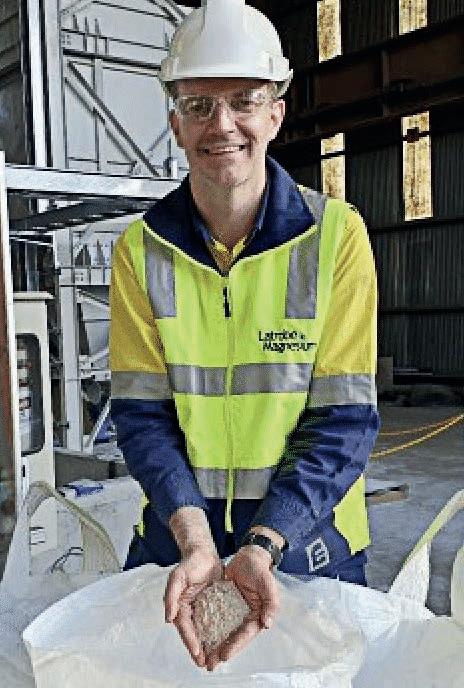
None of these projections come as a surprise to Paterson.
The tight-knit LMG team set out on this path almost two decades ago and has faced more than a few setbacks along the way. But through it all, the company maintained faith in its technology and in the future of magnesium.
“We’re very much long-term focused, and that’s why we’ve taken it slow,” Paterson said.
Following the announcement in Washington, momentum is building for LMG as it prepares for what looks to be an accelerated phase of growth, and a new chapter for the Latrobe Valley. AM
ELECTRIC MACHINES CAN RESULT IN COSTS SAVINGS, AS WELL AS REDUCTIONS IN EMISSIONS.

FROM BATTERY-POWERED HAUL TRUCKS TO ALL-ELECTRIC UNDERGROUND FLEETS, ELECTRIFICATION IS RAPIDLY RESHAPING THE INDUSTRY.
The mining industry is entering an era of transformation. For Australia’s resource sector, which has long been defined by diesel-driven trucks, high-heat processing plants and remote operations, electrification offers a platform for growth, efficiency and reduced carbon emissions.
Turning that opportunity into reality means embracing a new generation of equipment, systems and energy-management strategies. The result is mines that are cleaner, safer and more productive.
Electrification matters because mining remains a source of direct emissions in Australia.
Skills, systems and infrastructure built on decades of operation now face a new imperative to reduce emissions while maintaining output. As mines look to decarbonise fleets,
processing circuits and energy systems, electrification becomes a sustainability statement and a business differentiator.
By swapping diesel haul trucks for battery-electric alternatives, replacing engine-driven hydraulic plants with electric motors and integrating renewables with on-site batteries, mining companies are positioning themselves for a low-carbon future.
One of the values of electrification is that the technology has matured enough to shift from pilot to deployment.
For example, at the Yandi mine in Western Australia, BHP deployed an electric excavator in 2024 to test the viability of replacing diesel machinery in its iron-ore operations.
The R 9400 E Liebherr electric excavator, wired to a trailing cable and deployed at Yandi, reflects BHP’s strategy to decarbonise equipment and diesel use at its WA Iron Ore operations.
That deployment is part of a broader trend. Joint studies such as the partnership between IGO, Perenti and ABB have confirmed the technical feasibility of an all-electric underground fleet in Australia, showing that batteryelectric vehicles can match diesel equipment productivity at cost levels that are not prohibitive.
“We believe in a cleaner energy future, and that extends to our underground mining operations, where the electrification of our fleets will create a safer, greener and more productive operation,” IGO head of technical services Chris Carr said.
These kinds of statements help to highlight the fact the industry understands that, beyond reducing emissions, electrification is about safety, productivity and economic resilience.
Electrification at Yandi is moving from concept to commercial pilot. The operation’s shift to its first
electric excavator was accompanied by infrastructure upgrades and a focus on data and systems that support electrified equipment in remote environments. The aim is to displace diesel use, improve safety underground or in isolated locations, and develop the learning curve across heavy-duty equipment.
This example shows is how a large miner uses electrification strategically, as part of a broader conversion of systems, power supply, energy management and operational planning. With diesel the biggest remaining source of operational emissions, BHP is treating electrification as a necessary innovation for their future.
The pilot at Yandi allows the company to de-risk new technology, build workforce capability and create a roadmap for deeper electrification across its portfolio.
While reducing emissions is often the headline, and with good reason, parallel benefits flow from electrification.
Battery-electric vehicles and electric motors produce lower noise, fewer particulate emissions and less on-site heat, all of which helps to improve working conditions. Maintenance regimes are simplified, mechanical complexity falls and downtime linked to traditional powertrains tends to decline.
For remote operations, which are often reliant on diesel logistics and expensive fuel delivery, electrified systems offer cost resilience and supplychain independence.
Australia’s abundant renewable resources add further upside. Mines located in remote zones benefit from high solar and wind potential, enabling hybrid or micro-grid solutions that pair renewables with battery storage and electrified mobile fleets. Converting a diesel haul truck to electric in the Australian context can not only lower emissions but create better cost outcomes. That combination of economics and sustainability is proving especially compelling.
Of course, the full transition is not without hurdles. The upfront capital cost of electrified machines and charging infrastructure remains higher than legacy equipment, and access is absent or expensive in many remote locations grid. Battery lifecycle management, infrastructure for fast charging and second-life use remain nascent.
Operationally, mines must rethink fleet scheduling to consider charging times, thermal management, availability and integration with production plans.
However, industry players are forming collaborations to accelerate progress. The Electric Mine Consortium, formed by major mining and equipment companies in Australia, promotes a shared approach to electrification, interoperability of systems, and scaling of fleet conversions. These partnerships help spread risk, accelerate learning and align standards for emerging technology. That common approach is critical when comparisons between diesel and battery systems still dominate decision-making.
Viewed through a national lens, electrification presents Australia’s resource sector with a powerful lever for competitiveness.
Global buyers and investors increasingly evaluate the carbon intensity of supply chains, preferring raw materials that align with decarbonisation pathways. Mines that can demonstrate lower emissions can potentially access better offtake terms, preferential finance and stronger reputational standing.
Electrification can also go a long way in strengthening the domestic value chain. As more mines adopt electric equipment, the local mining equipment, technology and services (METS) sector grows in significance.
Australian firms designing chargers, battery systems, vehicle conversions and
energy-management software are well placed to export expertise and to build an industrial capability aligned with the global clean-energy transition.
Electrification also supports regional jobs, upskilling and a diversification of mining roles. Where dieselmachinery mechanics once dominated, electric-power systems technicians, battery-maintenance specialists and digital-control operators now emerge. That shift helps to ensure that mining continues to contribute to regional resilience and skill development, not just commodity extraction.
Electrification will not be uniform across all operations: geography, commodity type, power infrastructure, site layout and mine lifespan will shape the speed and sequence of adoption.
Some sites might begin with underground light-vehicle conversions or ancillary equipment; others may tackle haulage trucks or processing circuits. What matters is that the direction is clear.
For Australia’s mining industry, the next few years will be pivotal. With pilot phases reaching maturity, standards being set and investment flowing, the sector is entering a moment where electrification becomes scaled and mainstream, not experimental. Mines that act early are more likely to embed cost savings, build workforce capability and position themselves as low-carbon suppliers in a changing global market.

Electrification is more than an environmental statement; it is a strategic advantage. For Australia’s miners, the transition to electric power is unlocking safer workplaces, leaner operations and greater export relevance.
The future of mining is not just about is dug out of the ground. It is also about how the industry powers the machines that extract it and the systems that refine it. Australia is beginning to write that future now. AM
STUDIES HAVE CONFIRMED THE TECHNICAL FEASIBILITY OF AN ALL-ELECTRIC UNDERGROUND FLEET IN AUSTRALIA.
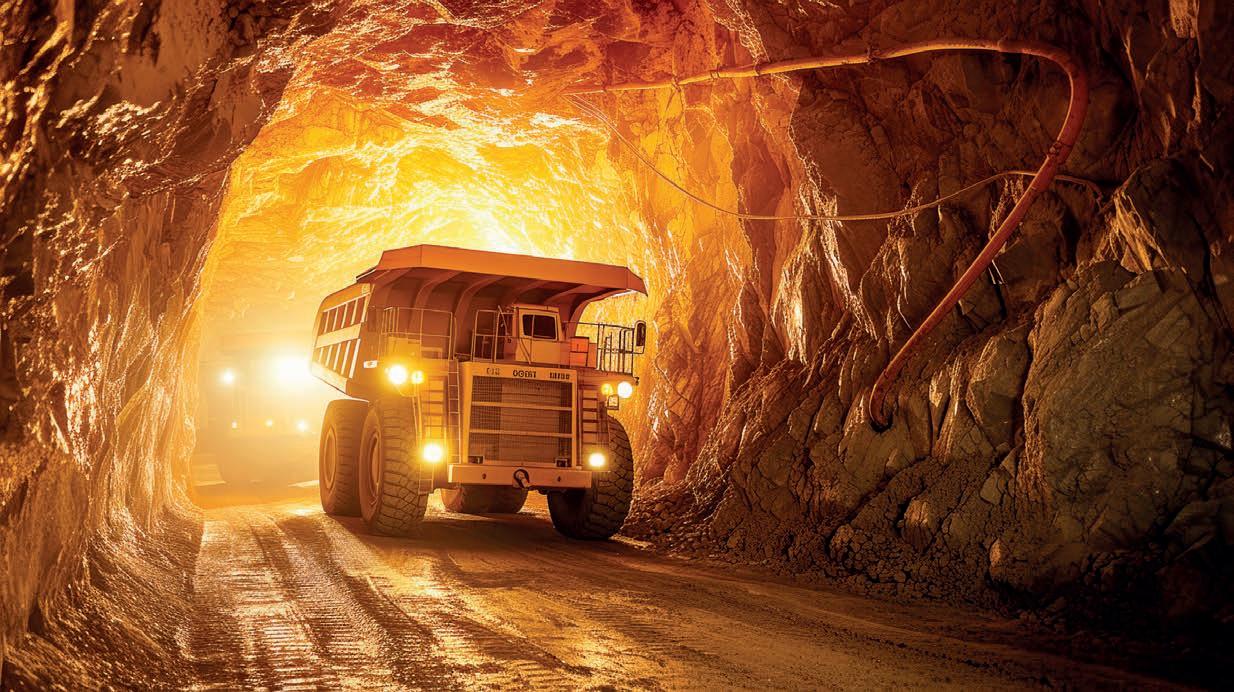
As the mining industry accelerates towards a low-emissions future, electrification has become the cornerstone of operational transformation, delivering cleaner, safer and more efficient power to some of the world’s toughest environments.
At the forefront of this shift is Australian Power Equipment (APE), a trusted national supplier delivering the electrical backbone that powers open-cut and underground operations.
Founded by co-directors Abby Crawford and Andrew Cockbain, APE has rapidly grown to become one of Australia’s most recognised suppliers of high-voltage power equipment and infrastructure solutions. The business has earned national recognition, including being ranked 45th in the 2024 AFR Top 100 Fast Starters, by combining deep technical
expertise with a sustainability-led approach to equipment supply and lifecycle management.
From its base in Newcastle, APE provides transformers, switchgear, substations and high-voltage cable systems to clients across mining, tunnelling, renewables, agribusiness and defence sectors throughout Australia and around the world.
What sets APE apart is its dual capability to supply new and refurbished power equipment, enabling rapid response to critical site needs while advancing circular economy goals that reduce waste and extend asset life.
“Our business was built on reliability and responsiveness,” Cockbain said. “In mining, downtime costs are immense. Our job is to keep operations powered safely and continuously, whether that’s through fast-tracked sub-stations, reengineered transformers or complete cable reticulation systems.”

ELECTRIFICATION … MEANS BUILDING A COMPLETELY NEW ELECTRICAL ECOSYSTEM, ONE THAT’S ROBUST, SAFE, EFFICIENT AND ENGINEERED TO HANDLE THE UNIQUE CHALLENGES OF REMOTE AND HARSH MINING ENVIRONMENTS.”
Powering the next frontier
With Western Australia leading the global charge towards mine electrification, APE’s expertise in surface electrical systems that power underground networks has become increasingly vital.
The company’s cable reticulation systems form the arterial network that distributes energy from sub-stations to electric machinery operating kilometres below the surface, a critical link in achieving emissions reduction without compromising productivity.
“Electrification doesn’t just mean swapping out diesel machines for electric ones,” Crawford said.
“It means building a completely new electrical ecosystem, one that’s robust, safe, efficient and engineered to handle the unique challenges of remote and harsh mining environments.”
APE’s expertise has been forged through decades of hands-on experience
across Australia, Asia Pacific, the UK and Sub-Saharan Africa.
The company’s leadership team has played an instrumental role in the electrification of large-scale operations across the southern African mining belt, developing, specifying and supplying electrical infrastructure for both electric rope shovels and electric hydraulic excavators.
This international background underpins APE’s approach to today’s mining projects, ensuring the systems designed for WA’s electrification drive are informed by proven field performance under extreme conditions.
Key achievements by APE’s team and leadership include specification development for sub-stations, switching stations and cable systems suited to tropical and remote environments; supply of high-capacity sub-stations (including dual 10–1MVA 33/6.6kV units) for electric shovel and mine




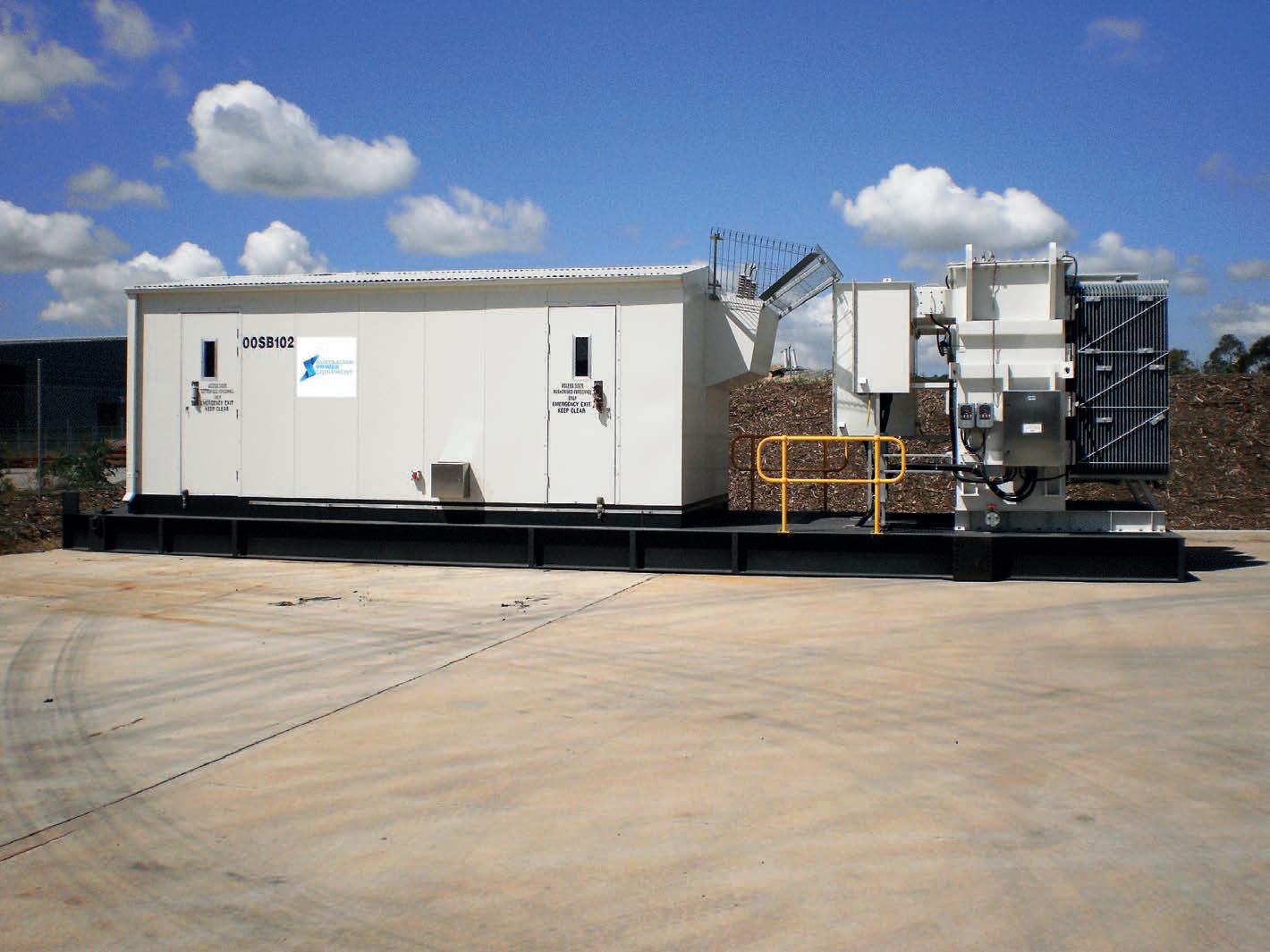
power distribution; development of medium- and high-voltage cable systems to enhance operational flexibility and equipment availability; training frameworks and operational systems to increase cable life, improve safety and optimise machine uptime; and cable selection, handling and management procedures that reduce risk and extend asset reliability.
These initiatives have laid the foundation for APE’s leadership in modern mining electrification projects, helping Australian operations adopt the next generation of electric mining fleets with confidence.
APE’s cable management philosophy is underpinned by one principle: sustained performance relies on intelligent design and disciplined practice. The development of correct cable selection, handling and management systems, as well as the development of integrated electrical protection and relay systems, is not merely an operational detail, but rather the backbone of mine safety, availability and energy efficiency.
As mines scale up electrification, the demand for higher voltage distribution and longer feeder runs introduces complex challenges in thermal loading, protection coordination and mobility.
APE works closely with engineering partners, original equipment manufacturers (OEMs), and site maintenance teams to deliver fully integrated solutions that encompass substation design, switching infrastructure,


reticulation layouts, and custom cable systems, all built to withstand Australia’s most demanding conditions.
“Electrification will reshape the way mines think about energy,” Cockbain said. “It requires the same engineering precision as the machines it powers. Every cable run, sub-station and connection must work seamlessly to deliver reliable energy underground.”
Beyond engineering excellence, APE continues to drive sustainability through
initiatives such as APE LOOP, a circular economy framework that promotes refurbishment, repurposing, and recycling of high-voltage equipment.
The company also supports wildlife conservation programs with Aussie Ark and Taronga Conservation Society, reflecting a belief that industry progress and environmental protection can, and must, coexist.
“Our commitment to sustainability isn’t just about compliance,” Crawford said. “It’s about leadership, proving that the electrification of mining can
reduce emissions, extend asset life, and contribute to a more sustainable energy future.”
From surface sub-stations to underground reticulation systems, APE is helping mines across Australia and beyond navigate the path to full electrification safely, sustainably and intelligently.
As the industry redefines what it means to be powered by electricity, APE stands ready to deliver the systems, expertise and vision that keep the future of mining switched on. AM
THE MINING INDUSTRY’S JOURNEY TO ACHIEVE NET-ZERO IS UNDOUBTEDLY A CHALLENGE, BUT IT’S ONE XCMG AUSTRALIA IS TACKLING HEAD-ON.
The Australian mining industry is at a crossroads.
Environmental responsibilities and the pursuit of efficiency are converging and the industry is entering a transition phase; dieselpowered heavy mobile equipment (HME) still plays a key role, but battery electric technologies are paving the way for a cleaner, more sustainable future.
Yet making that transition in Australia, home to some of the world’s harshest mining environments, is far from simple.
XCMG Australia is tackling this challenge with bold innovation, precision engineering, and a clear mission to deliver zero-emissions HME that not only meets but exceeds the performance miners have relied on for decades.
The reality of going zeroemissions
thick dust and rugged terrain, running for up to 20 hours a day while hauling enormous loads.
Battery performance is the first major hurdle. Even the most advanced lithium-ion must balance energy density, weight and durability. Oversized batteries compromise mobility, while underpowered systems risk downtime that can cost millions.
Then comes charging infrastructure.
Remote mine sites are often off-grid, and recharging massive haul trucks isn’t as simple as plugging in overnight.

Rapid recharge cycles, reliable energy supply and precise scheduling are critical, otherwise productivity declines and downtime equals lost revenue.
Integrating zero-emissions equipment into existing mine fleets adds another layer of complexity. Modern mining operations are intricate ecosystems of machines, software and logistics. New technology must integrate seamlessly
modular maintenance, operators and technicians must be retrained to ensure reliability and uptime.
Facing these challenges, XCMG Australia said it is “rewriting the rulebook” with a holistic approach that combines engineering excellence, smart systems and operational support.
XCMG’s zero-emissions HME is powered by advanced battery technology and intelligent energy management systems that extend
extreme Australian conditions, maintaining performance where it matters most – on the ground, in demanding, continuous operations.
But a single electric machine doesn’t change an operation; an intelligent fleet does. XCMG’s zero-emissions HME integrates directly with central fleet management systems, enabling real-time health monitoring, automated charging schedules, and performance optimisation across the entire site.
This connectivity allows mining companies to plan workloads, manage power distribution, and keep every machine operating at peak efficiency.
Reliability also remains nonnegotiable in mining, and XCMG has

engineered this into every stage of its zero-emissions design.
Each machine is equipped with predictive diagnostic tools that identify potential issues before they cause downtime. Modular component designs simplify servicing, and maintenance programs are tailored to ensure consistent, long-term performance.
Technicians are trained to manage and optimise new technologies, helping to ensure fleets remain productive, efficient and safe, even in the harshest conditions.
Innovation at every level XCMG believes a proactive approach to innovation is what sets it apart. Rather than waiting for problems to arise, the company anticipates them, developing solutions that make zero-emissions mining practical and profitable.
From enhanced cooling systems and energy-efficient drivetrains to digital monitoring and data analytics, every feature is designed with the goal of making zero-emissions equipment not just viable but superior.
XCMG leverages its worldwide research and development (R&D) capabilities while customising each solution to suit Australia’s unique mining landscape of high temperatures, long haul routes, and remote operations.
While mining remains a cornerstone of the Australian economy, it is also under increasing scrutiny. Governments, investors and communities are demanding tangible progress toward decarbonisation.
XCMG’s zero-emissions fleet offers transformation in addition to compliance. Cleaner air, quieter operations and reduced reliance on fossil fuels are, according to the company, “just the beginning”.
For mining companies, the benefits extend to improved worker safety, reduced maintenance costs, and greater operational resilience. For the planet, it represents progress toward sustainability.
By combining technological strength with local insight, XCMG is proving that environmental responsibility and productivity are not opposing forces but rather partners in the future of mining.
The shift to zero-emissions mining is a strategic evolution that will no doubt take years of innovation and adaptation.
But XCMG said it is already a leader on that journey. Every challenge
overcome, every new model introduced brings the industry closer to a future where zero-emissions HME is the standard, not the exception.
The technology exists. The strategy is in motion. And the results are real.
With XCMG Australia driving this transformation, the path to sustainable mining is no longer a distant vision; it’s happening right now.
The future of mining is here. And it’s electric. AM


KOMATSU CONTINUES TO SET NEW STANDARDS FOR FUEL EFFICIENCY AND PRODUCTIVITY WITH THE NEW PC950-11.
Komatsu is changing the game in large-scale earthmoving with its new PC950-11 hydraulic excavator, now rolling out across Australia and New Zealand. Built for the toughest mining and quarrying conditions, the machine combines raw power with smarter efficiency and enhanced safety, giving operators an edge in even the most demanding environments.
At a time when operators are under pressure to cut emissions, manage fuel costs and improve productivity, Komatsu’s latest release offers a compelling combination: up to 48 per cent greater productivity while consuming up to 40 per cent less fuel than its predecessor, the PC850-8E0.
Komatsu Australia national business manager for construction excavators Mark Boyes said the PC950-11 has been built from the ground up to meet operator feedback.
“Our development teams took this customer feedback on board and delivered more power, increased dig forces, greater drawbar pull, superior durability, easy safe access and surround visibility systems, all while maintaining ultra-low fuel consumption,” he said.
“It’s designed to handle Australia and New Zealand’s toughest conditions, while helping our customers run more efficient, sustainable operations, whether that be on mine sites or in quarry operations.”
Driven by a 405kW (543HP) Komatsu SAA6D140E-7 engine, the PC950-11 combines brute strength with smart technology.
The machine offers three selectable work modes (P+, P and E), allowing operators to prioritise power or fuel efficiency depending on the task. In its high-performance P+ mode, the machine achieves top productivity, while E mode delivers strong fuel savings without sacrificing output.
A redesigned hydraulic system with an electronically controlled closedloop swing circuit enables independent control of swing and digging operations, resulting in smoother handling and reduced fuel consumption.
Enhanced cooling performance through a larger core and optimised airflow helps to ensure reliability even in extreme temperatures common on Australian mine and quarry sites.
Weighing between 94–99 tonnes and capable of carrying buckets from 4–6 cubic metres, the PC950-11 is built for heavy-duty excavation.
Reinforced booms, arms and undercarriages provide durability, while rock protection, internal welds and partition walls in high-stress areas enhance longevity. Maintenance has also been simplified with ground-level refuelling, walk-through catwalks, longlife filters and extended service intervals.
Komatsu’s KOMTRAX Plus system provides real-time monitoring of machine health, including alerts such as hydraulic filter clog detection to prevent costly downtime.
Recognising the industry’s focus on safety and skilled operator retention, Komatsu has equipped the PC950-11 with a suite of advanced features.
The standard KomVision 360° camera system offers full surround visibility, while LED lighting, wide catwalks and a hydraulically operated access stairway enhance on-site safety.
Inside the cab, comfort and ergonomics take centre stage. A high-back air suspension seat with heating, automatic climate control and reduced lever operation force help operators remain productive and alert during long shifts. The cab is highly rigid and acoustically insulated, reducing fatigue and improving overall working conditions.
Digital tools such as a large highresolution LCD monitor display machine data and camera feeds simultaneously, while ECO guidance
features coach operators on achieving optimal fuel efficiency.
These innovations are designed to not only enhance the operator experience but also contribute to lower total cost of ownership through smarter, more efficient operation.
Boyes said the PC950-11 represents more than just a power upgrade; it’s a step forward in sustainable, operatorfocused design.
“This excavator is not just about power,” he said.
“Every feature has been designed with the operator in mind, from safety and comfort through to lower total cost of ownership.
“We believe the PC950-11 will quickly become the new benchmark for large-scale earthmoving in Australia.”
With its combination of cutting-edge engineering, fuel-saving systems and operator-first features, the Komatsu PC950-11 delivers a clear message: heavy equipment can be powerful and responsible. AM
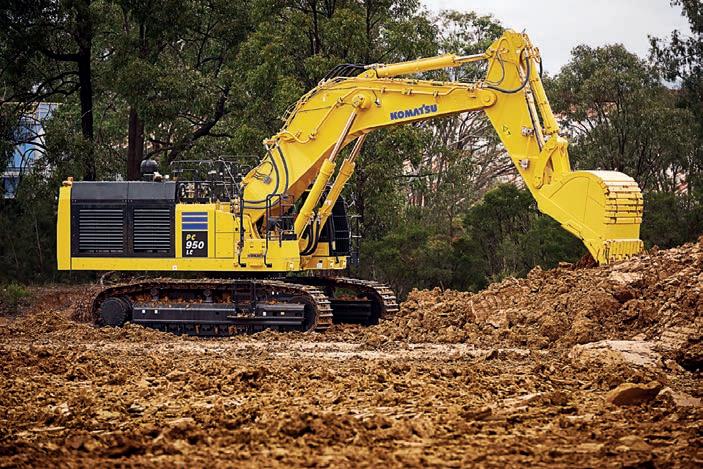



At Australian Power Equipment (APE), we deliver more than high-voltage power solutions – we deliver peace of mind. From brand-new transformers to expertly refurbished equipment, we help industries stay switched on with smarter, faster, and more sustainable options.
Our circular economy model means we don’t just supply power—we give old equipment new life. By refurbishing quality assets from decommissioned sites, we minimise waste, reduce lead times, and keep urgent projects moving. It’s better for business and better for the planet.
But our commitment doesn’t stop there. We actively support wildlife conservation and rewilding efforts across Australia –because powering progress should never come at the cost of our environment.
With a nationwide network and a lean, responsive team, APE sources and delivers critical equipment when and where it’s needed most. Whether it’s mining, infrastructure, or renewables, our clients trust us to keep operations running and downtime to a minimum.
Backed by decades of experience and a clear vision for the future, we’re proud to be shaping a more sustainable tomorrow.
AGENTS FOR








As mining operations decarbonise, remote microgrids powered by solar, wind and battery storage are becoming increasingly critical to site independence. But while the focus often lands on generation and storage capacity, it is connectivity that in many cases determines whether those systems operate reliably – or fail under pressure.
Unlike urban sub-stations, mining microgrids operate in harsh, often unmanned environments where dust, vibration, moisture and temperature extremes can compromise ordinary networking gear.
Industrial connectivity hardware is designed to ensure every component in the power chain stays online, visible and controllable.
Madison Technologies, a distributor of commercial and industrial technology products, sits at the forefront of ensuring connectivity in the most remote locations. Battery energy storage systems (BESS) with local power sources like solar panels are commonplace in these kinds of mine sites – but with that, industrial-grade networks are needed.
“In rugged environments such as mining, we provide network solutions from our global vendor partners in what we call ‘make, never break’ communication infrastructure,” Madison Technologies chief executive officer Paul Calabro told Australian Mining
and Transport for NSW, and system integrators such as Acubis, Yokogawa and John Holland, Madison Technologies pairs trusted equipment with expert support and tailored services to simplify deployment, enhance performance and deliver resilience across critical environments.
“We’re deploying technology that’s built for harsh environments – vibration, dust, impact, temperature,” Calabro said. “We know that we’re not in suburbia with this infrastructure and it’s imperative we have solutions that are up to the challenge.”

Madison Technologies partners with proven companies in the communications space such as Moxa, Cisco Industrial, Rajant and Teltonika, distributing technology from industrial ethernet switches to wireless mesh networking and 5G gateways for remote access and monitoring.
“One of Madison’s biggest strengths is the depth and breadth of our technology partnerships,” Calabro said. “We’ve built an ecosystem where everyone benefits, from the products and technologies themselves to the local support that backs them. No single manufacturer can deliver a complete, end-to-end level of ruggedness or resilience on their own.
“That’s where we come in. Madison Technologies acts as the glue, as the conduit that connects world-class manufacturers with the specific needs of market sectors like battery and energy
issues of downtime and cybersecurity also must be considered, especially when downtime from failed communications or cyber-attacks could cost a site tens of thousands of dollars every hour.
“Our technology partners have cybersecurity at the core of their technology to ensure that mine sites have peace of mind that networks can’t be attacked or penetrated,” Calabro said.
This and many other situations are front-of-mind when Madison Technologies offers industry training.
“We deliver manufacturer-certified training that helps individuals earn industry-recognised certifications,” Calabro said. “Accredited across all the brands we represent, we’ve trained over 200 professionals this year in industrial communications.
“Demand has grown by around 40 per cent from last year, driven by the
we help build stay connected, secure and ready for whatever comes next.”
Calabro said there are four key pillars that support the mining industry in achieving greater connectivity beyond simply ensuring infrastructure is fit for purpose: industrial connectivity; edge computing; camera as-a-sensor; and industrial internet of things (IIoT)
“Edge computing ensures real-time analytics at the mine site with local data processing capabilities, camera as-a-sensor allows visual monitoring for safety and performance, and industrial IoT gives sensor-based data collection to allow for environmental and equipment monitoring,” he said.
As electrification drives the future of mining, reliability won’t just depend on how much power you can store but on the strength and stability of the networks that connect it.
With connectivity at the core, Madison Technologies helps deliver technologies that stay online, stay visible and stay resilient – no matter how remote the operation. AM



Mining companies across Australia are exploring battery-powered fleets, renewable energy systems and electrified infrastructure as part of their decarbonisation strategies.
Mines can now reduce diesel use through tethered underground loaders, electric drills, cable-electric shovels and even diesel-electric hybrid trucks that can cut fuel consumption by up to 30 per cent.
Renewable energy sources such as solar, wind and battery energy storage systems are being integrated to replace fossil fuel power generation, while modern fleet management systems and artificial intelligence (AI) optimise operations and minimise diesel use.
The economic case is also becoming clearer. Lithium-ion battery prices have fallen significantly over the past decade, reducing capital hurdles, while electric motors offer higher efficiency, faster operation on ramps, lower maintenance costs and quieter, cleaner workplaces.
Underground, electrification can slash ventilation and cooling costs, creating safer, more sustainable work environments.
AS MINERS LOOK TO DECARBONISE, THE NEED FOR KNOWLEDGE OF IMPLEMENTING NEW TECHNOLOGIES IS GROWING.
While these advances are undoubtedly promising, challenges remain. Infrastructure investment, energy storage and process changes are essential, and workforce capability must be developed in parallel.
Upskilling staff members, embedding change-management strategies and fostering a culture open to innovation are critical for successful implementation.
As decarbonisation shifts from a corporate goal to an operational priority, mine electrification has become one of the biggest changes shaping the Australian mining landscape.
For all the discussion around batteryelectric vehicles and net-zero targets, the real challenge lies in turning pilots into fully operational electric fleets without compromising safety, productivity or profitability.
To help the industry take that next step, the Australasian Institute of Mining and Metallurgy (AusIMM) has launched the Mine Electrification Associate Certificate, an online course designed to give mining professionals the knowledge to turn ambition into practical, on-site results.
The program was developed in partnership with Canadian consultancy


Zero Nexus, whose president David Lyon brings years of experience helping mines around the world adopt battery-
“There’s been a lot of innovation on the equipment side, but not enough support for the mine operators trying to adopt these technologies,” Lyon said. “This course is designed to fix that.”
AusIMM head of online education Australian Mining that electrification has emerged as one of the most pressing skill gaps in mining.
“This course came from a clear signal from the industry,” Horden said. “Electrification is no longer a future concept; it’s something mining professionals need to understand and
Mining has always relied on engineering ingenuity, but electrification demands a broader mix of skills that span charging infrastructure, ventilation design and energy management.
The four-module program takes participants through every stage of that journey. It starts with the fundamentals of

how battery-electric vehicles work, their performance characteristics and their impact on mine design, before diving into infrastructure planning, battery safety and organisational transformation. The course is designed for anyone involved in mining operations, from supervisors and safety officers to compliance specialists and strategic planners.
“You don’t need to be an electrical engineer to take part,” Lyon said. “We’ve built this course to be accessible to a wide range of professionals.
“Whether you’re new to electrification or already trialling electric equipment, you’ll find practical value in what we’ve built.”
Delivered entirely online, the program includes around 20 hours of content across virtual classes, study materials and discussions.
Participants who complete the course earn professional development hours and a digital credential recognised across the mining industry.
AusIMM designs new courses to reflect where the industry is heading,
and Horden said the response to the electrification course has already been strong.
“Every year we launch new programs that help professionals build the skills they’ll need for the future. Mine electrification is clearly one of those areas,” he said.
“We already have strong interest and multiple intakes planned annually.”
While technology plays a huge part in the transition, Horden and Lyon agree the human side of change is just as important.
“Underestimating the changemanagement effort is one of the most common mistakes we see,” Lyon said. “Getting your workforce on board early and often is critical.
“Electrification isn’t just a technology shift; it’s a cultural one.”
Zero Nexus’ experience in Canada, where mines have been running electric fleets for more than a decade, forms the backbone of the Mine Electrification Associate Certificate program. Participants explore real-
world case studies that highlight what works, what doesn’t, and how to scale up electrification safely and efficiently.
“We draw on lessons learned from mines that have already gone through it. Someone’s already done that early learning for you,” Lyon said. “We’re bringing that directly into the course so participants can skip the trial-and-error stage and move faster.”
The course also explores topics such as battery lifecycle management, charging infrastructure, and integrating renewable power systems into mine operations.
Lyon said the AusIMM course’s whole-of-system approach what sets it apart.
“Most existing training focuses on operating specific machines,” he said. “Our course looks at the full system, the vehicles, the infrastructure, the safety standards and the people who make it work.”
As electrification accelerates across the sector, there is a growing demand for professionals who can navigate these new complexities. The Mine
Electrification Associate Certificate helps participants develop the technical and strategic understanding needed to lead that transition.
“This course equips professionals to be part of the future, not just reacting to it,” Lyon said. “It’s about helping people build the skills and strategies to make meaningful change.”
For AusIMM, the course reinforces its broader mission to prepare the mining workforce for what’s next.
“We want to make sure the industry has the right mix of knowledge and capability to keep pace with change,” Horden said. “That’s what this course is all about.”
Electrification is a chance to reshape the way mining operates, to create quieter, cleaner and safer workplaces while improving efficiency and sustainability. AusIMM’s Mine Electrification Associate Certificate offers the tools and insight to make that future possible, giving mining professionals the confidence to lead the change from concept to reality. AM
AS THE MINING INDUSTRY MOVES TOWARDS NET-ZERO TARGETS, SOLARH2E IS FOCUSED ON ACCELERATING ELECTRIFICATION AND DECARBONISATION FOR MINERALS HAULAGE FROM PIT TO PORT.
Major strides have been made in just a few years to electrify and decarbonise the mining and transport sectors. One of the areas of focus has been heavy-duty haulage and logistics.
And Solarh2e is helping accelerate this transition.
The company’s mission is to decarbonise industries that rely on pointto-point materials transport, including mining, a sector Solarh2e chief executive officer Richard Zee, a trained geologist and mining veteran, knows well.
“Decarbonisation of open-pit mining can already take place with modular renewables, electric excavators, loaders and dump trucks,” Zee told Australian Mining. “Mine-to-port haulage can also be decarbonised through electric onroad trucks when adequate charging or battery-swap infrastructure is available.”
Strength in partnerships
Solarh2e works with partners across the engineering and energy value chain, – including infrastructure providers, original equipment manufacturers (OEMs), engineering, procurement and construction (EPC) contractors, and financiers – to design and deliver decarbonised haulage solutions.
The company recently announced a landmark partnership with SANY, one
of the world’s largest heavy-equipment manufacturers, to deliver Australia’s first charge and fully automated battery-swap hub for heavy electric vehicles.
“This partnership with SANY marks a major step towards building the backbone of Australia’s zero-emission freight network,” Zee said.
“Together, we’re combining advanced vehicle technology, energy-systems engineering and forward-thinking investment to create a scalable, practical pathway to decarbonisation.”
SANY, which has expanded its Australian presence with new facilities in Sydney, Brisbane, Perth and Melbourne, is ready for the challenge.
“With three models of our electric trucks already ADR-certified, including a 588kWh prime mover and two 85kWh light trucks, SANY is ready to lead the transformation of Australia’s heavy-transport fleet toward zero emissions,” SANY international development general manager Yang Gao said.
Under the new partnership, Solarh2e has signed its first transport operator, which will deploy two SANY trial trucks as part of a framework for 30 trucks in the first year. The initiative will help fleet operators meet environmental, social and governance (ESG) and emissions-reduction targets over the next three years.



Zee said the rollout represents a pivotal milestone in decarbonising Australia’s heavy-transport sector.
“SANY has committed to supporting Solarh2e in energising a first-year target of 30 electric prime movers through our inaugural charge-and-swap

Solarh2e’s rollout strategy combines proprietary hubs with collaboration from third-party infrastructure developers. This hybrid approach ensures accessibility, interoperability and broader network coverage for electric heavy vehicles nationwide.
The company is in discussions with transport infrastructure investors to fund a national network of charge and swap hubs, beginning with a flagship site in Victoria and expanding along Australia’s east coast to connect Melbourne, Sydney, Brisbane and Adelaide.
This rollout is backed by the expertise of Solarh2e’s engineering partners, Shoal Group and Global Power Energy (GPE), providing advanced simulation, systems design and power-integration expertise to ensure reliability and scalability.
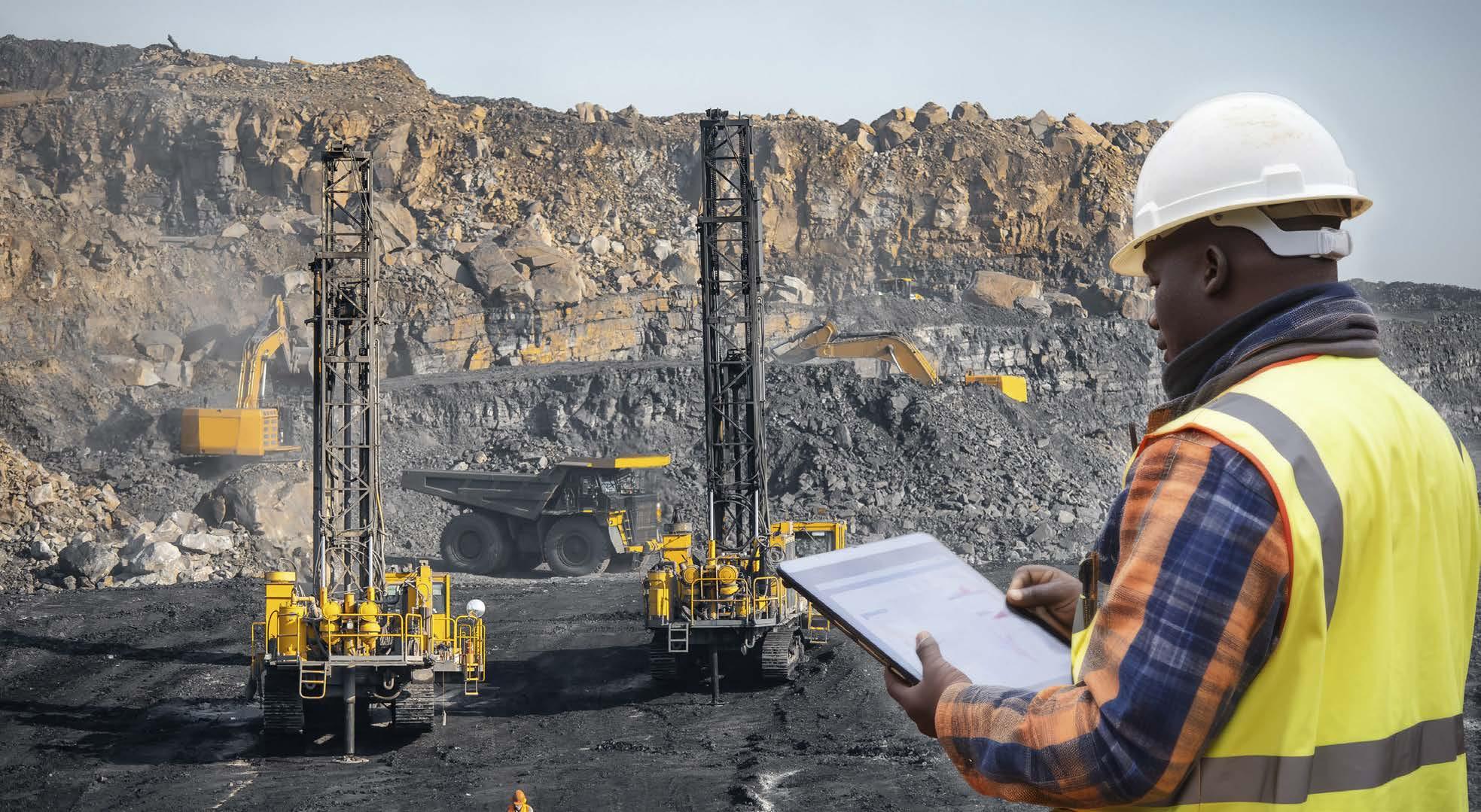
“By combining SANY’s proven EV technology with Solarh2e’s infrastructure vision and the expertise of Shoal Group and GPE, we’re building a future-ready solution for sustainable heavy transport in Australia,” Zee said.
By integrating global vehicle technology, local engineering and renewable-energy infrastructure, Solarh2e is delivering more than just a single project; it’s building the foundation for a national zero-emission logistics network.
The new SANY partnership, combined with existing alliances, positions Solarh2e at the forefront of Australia’s heavy-transport transformation. For the mining sector, in particular, the implications are profound: lower operating costs, reduced carbon exposure, and a pathway to sustainable haulage from pit to port.
“With these key partnerships in place, Solarh2e is helping drive the mining industry and other sectors toward a decarbonised and sustainable future,” Zee saidß. AM
You commute to the far ends of the earth. Your workplaces are in the most challenging environments on the planet. The unrelenting pressure you face to cut costs while being safer, more sustainable and more productive demands more than partial solutions or occasional transactions. It demands a trusted partner, committed to meaningful support, data-driven insights and solutions that connect all parts of a mine. We’re Hexagon. One partner. For the life of your mine.


WHEN IT COMES TO CLIMATE COMMITMENTS, FORTESCUE IS SHOWING THAT HEAVY INDUSTRY CAN DECARBONISE PROFITABLY AND RAPIDLY.
Fortescue is accelerating its Real Zero journey, forging global partnerships to turn ambition into action. The company’s latest collaborations bring together some of the world’s most advanced technology and manufacturing leaders. The partnerships include BYD, LONGi, XCMG, Envision Energy and Liebherr, together with its newly consolidated renewable technology company Nabrawind.
Together, these alliances connect Fortescue’s operational expertise in the Pilbara with innovation and manufacturing powerhouses across the globe, creating a global network designed to deliver Real Zero at industrial scale.
Fortescue’s decarbonisation program is already taking shape across its Pilbara operations. Major renewable energy infrastructure is under construction and solar farms are already beginning to power the network with clean energy.
A 100MW solar farm at North Star Junction is now generating 180GWh of energy annually, enough to supply around 25 per cent of Iron Bridge’s power needs with renewables. Construction is also progressing on the 190MW Cloudbreak solar farm, which will be capable of generating enough
power for the equivalent of more than 70,000 households once operational.
To connect these renewable assets, Fortescue has expanded its high-voltage network, adding roughly 140km of transmission lines. This brings the total installed transmission lines to 460km across the Pilbara.
renewable supply and stabilise energy across mine sites.
According to Fortescue director of mining operations Steve Cole, the transformation is already visible.
“We have 10 electric excavators operating across our sites, with another two about to be commissioned.
FORTESCUE’S CLOUDBREAK SOLAR FARM WILL BE CAPABLE OF GENERATING ENOUGH POWER FOR THE EQUIVALENT OF MORE THAN 70,000 HOUSEHOLDS.
“Our first electric drill is already in operation and it’s performing exceptionally well, with another four assets already on order. These aren’t trials, they’re working assets, delivering tonnes and value.”
Fortescue’s approach to decarbonisation is ambitious yet

storage – by uniting global partners and

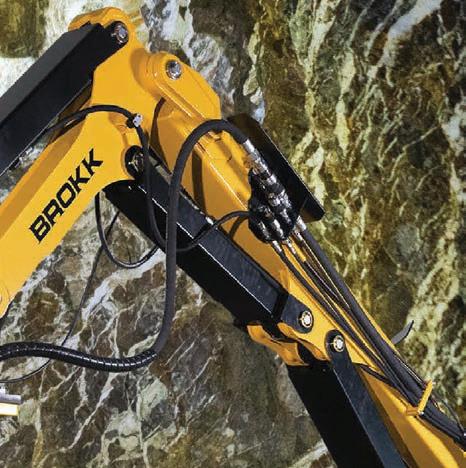







Recent discussions between mining giant BHP and Chinese buyers have underscored the normal rhythms of global iron ore negotiations, with temporary purchase pauses and price talks reflecting standard business practice rather than market disruption, according to RMIT University applied economist Ashton De Silva.
Reports indicated that talks touched on pricing adjustments and contract settlement terms, including currency considerations. While some observers speculated on the potential use of yuan in future trade, no formal shift had been confirmed at the time of writing.
For analysts, the currency consideration is less a sign of upheaval and more an example of how major resource contracts evolve over time. While the yuan may feature in exploratory discussions, De Silva said such proposals often form part of a broader negotiation process rather than a concrete policy shift. In his view, conversations about settlement mechanisms typically reflect both sides’
desire to streamline trade and hedge against market volatility, rather than an immediate move away from the longestablished use of the US dollar in iron ore transactions.
Speaking at a business event in Perth, BHP Australia president Geraldine Slattery emphasised that such negotiations are a regular part of operations.
“Commercial negotiations are a normal part of that; they happen every year,” she said.
Australian Prime Minister Anthony Albanese echoed the sentiment, noting that while temporary pauses were “concerning”, they formed part of the normal dynamics of international trade between major partners.
“These measures are always disappointing; let’s hope, certainly, that they are very much shortterm,” Albanese said. “I want to see Australian iron ore to be able to be exported to China without hindrance. That is important.”
Reinforcing that view, De Silva told Australian Mining the situation is less about crisis and more about process.
“Given that Australia is the largest exporter of iron ore, we’re in a pretty strong position,” he said.
“We should certainly watch the situation, and we should do that closely, but I don’t think it’s anything we need to be alarmed about.
“These [stalled negotiations] are pretty standard in terms of a country
such as China wanting to get their best value for money, and they’re looking at doing that in different ways.”
According to reports, the Chinese Mineral Resources Group (CMRG) had paused some purchases following BHP’s proposal for a 15 per cent price increase under a US dollarsettled long-term contract. China, in



turn, reportedly sought discounts based on ore quality variations and shifting production rates.
When discussing whether Australia required policies to safeguard against such disputes, De Silva said no.
“These parties are establishing the ground rules for business going forward, so from a national perspective I don’t
think there’s any real safeguarding that’s actually needed,” he said.
De Silva described the back-andforth as a natural part of buyer–seller dynamics, reflecting China’s broader effort to secure more favourable pricing in a volatile commodities market.
Geological Survey’s 2025 annual report, Australia produced 930 million metric tonnes of usable iron ore in 2024, more than double Brazil’s 440 million and well ahead of China’s 270 million.
“Whilst I can see that it will have some economic disruption, Australia has benefitted a lot from the iron ore price and it’s going to be inevitable, to a large extent, that this happens,” he said.
Despite the attention surrounding the talks, reports from Reuters and the China Global South Project indicated that disruption to BHP’s supply chain had been minimal. According to the GMK Centre, the effects of the CMRG’s restrictions might not be felt until January 2026, when new contracts take effect.
De Silva compared the negotiations to BHP’s 2010s shift from annual to market-based pricing, which reshaped how iron ore deals were structured globally.
“The CMRG is a result of what BHP managed to broker several years ago, and that has really benefitted Australian mining companies and the country’s economy in general,” he said.
“But I want to go back to the fact that China, I think, has brought all this together to try and create some sort of buying power, and while there are other sources of iron ore, they’re not nearly as large or as accessible.”

Australia’s position remains clear. According to the United States
De Silva said that despite China’s dominance in demand, consuming over 70 per cent of the world’s seaborne iron ore, Australia’s reliability as a supplier gives it lasting leverage.
“You can think of Brazil as being one of the competitors, and there might be some other iron ore resources located closer to China, but the point is they just can’t be mined at this point,” he said.
“It doesn’t make economic sense to move away from Australia as a supplier. I don’t think this is going to have any immediate impacts.
“I do think more negotiation tactics like this are going to happen, but is it something that we should be worried about? No. Is it something we should expect? Yes.”
While De Silva noted that China’s growth “is starting to come off the boil”, he framed that as part of the natural cycle of global trade, not a signal of instability.
“The growth will still be there, but it’s not going to be the same scale, and so I think there are going to be some pressures even internally in China, given the fact that they won’t have as much spending money,” he said. “So yes, they are going to be more proactive in looking to drive down prices, but again, that’s just what happens in markets.” AM
FROM HUMBLE BEGINNINGS, VERIDAPT HAS EXPANDED ALL OVER THE WORLD OVER 20 YEARS. BUT IT HASN’T FORGOTTEN ITS ROOTS AS AN AUSTRALIAN COMPANY.

VERIDAPT CHIEF EXECUTIVE OFFICER DAVID THAMBIRATNAM.
rom a rugged fuel controller on a dusty Australian mine site to a global technology platform tracking everything from diesel to data, Veridapt’s twodecade journey is a story of endurance, innovation and evolution.
As the company marks 20 years of operation, Veridapt chief executive officer David Thambiratnam reflects on a milestone few Australian tech firms reach, and what it means to keep innovating in an industry that never
“In 20 years, we’ve never lost a customer,” Thambiratnam told Australian Mining. “Every single one of our customers has grown with us, stayed with us and expanded with us. That talks to the robustness of the solution and how well everything works.”
AS THE MINING INDUSTRY TRANSITIONS TO CLEANER ENERGY, VERIDAPT IS AGAIN AHEAD OF THE CURVE.
That kind of loyalty represents a major achievement in a sector where reliability is everything. From its earliest days, Veridapt’s technology has been relied on to power and monitor some of the world’s most demanding industrial operations, environments where failure is not an option.
Veridapt’s story began in 2005, when fuel systems in the mining industry often couldn’t survive the harsh conditions of remote Australian operations. This prompted the team to build its own units, developing technology that was durable by necessity and intelligent by design.
Those early lessons in durability, connection and the marriage of software and hardware laid the foundation for a company that has consistently anticipated the next wave of industrial transformation.
By 2010, Veridapt had created the world’s first touchscreen fuel management system, AdaptMAC, and later pioneered cloud-based industrial monitoring through its AdaptIQ and AdaptSCF platforms.
“Technology changes all the time,” Thambiratnam said. “The trick is applying just the right amount of technology, the right people and the right rationale.
“You can pick the wrong technology and end up with an expensive or ineffective solution.
Thambiratnam said Veridapt’s problem-solving process has always been about understanding the customer deeply and then choosing what really works.
That balance of innovation and practicality has guided the company through two decades of rapid technological evolution, from on-site
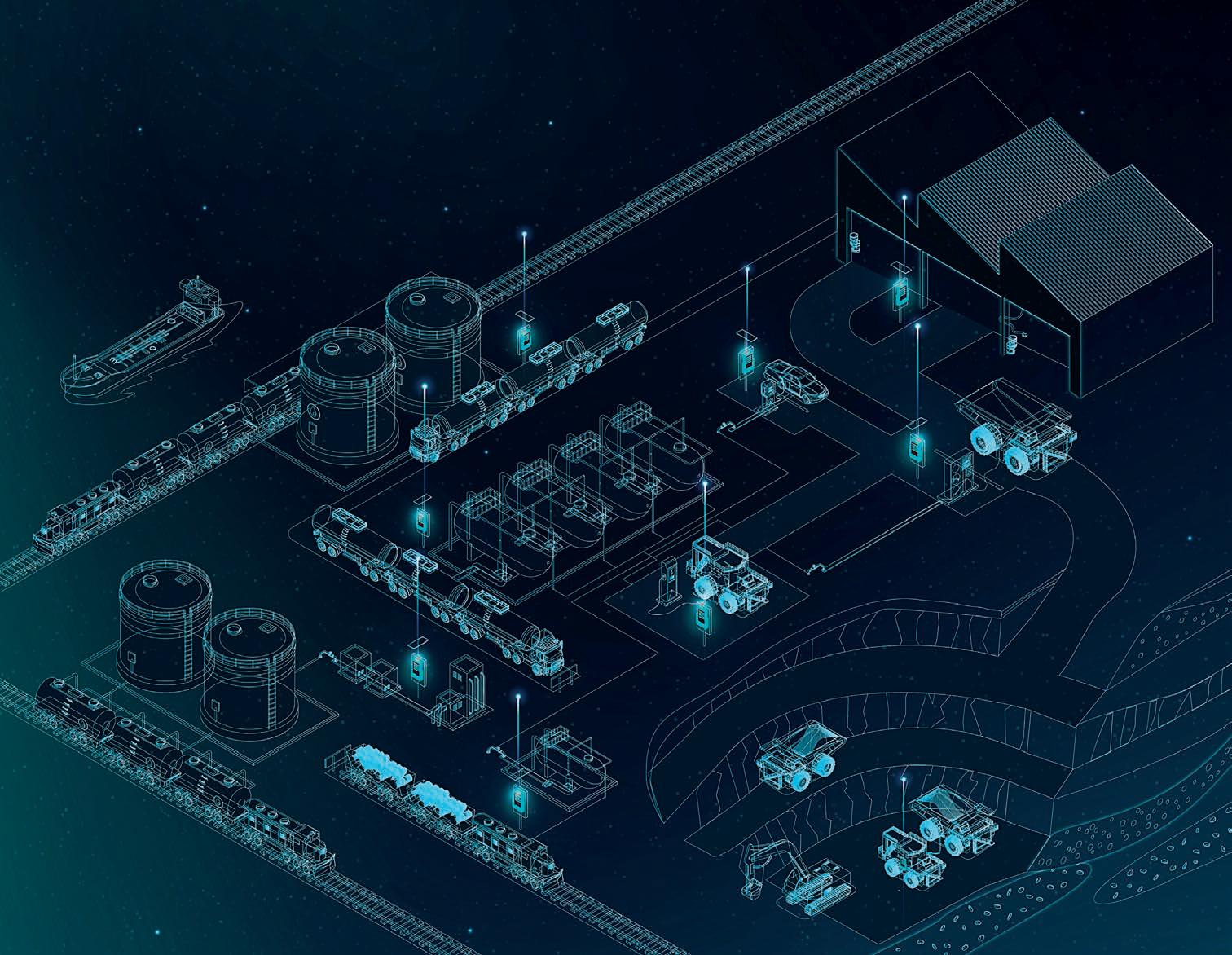

ethernet systems to satellite connectivity, cloud platforms and now artificial intelligence (AI).
In an industry known for its relative volatility, Veridapt’s longevity stands out. The company has outlasted most Australian start-ups and scaled globally while remaining independent and profitable.
“Not a lot of companies make it to 10 years, let alone 20,” Thambiratnam said. “So to make it this far and be thriving is quite an achievement in itself.”
That endurance, he said, is not just about technology. It’s about people.
“We’ve been very deliberate about who we bring into the team,” Thambiratnam said. “It’s astounding what we pull off for our size. There’s a lot of goodwill, passion and dedication that goes into making this work.”
That human focus underpins Veridapt’s DNA, a culture of adaptability reflected in its name. The company rebranded to Veridapt in 2020, symbolising its commitment to verification and adaptation as the twin engines of progress.
While its roots are firmly in Australian mining, Veridapt’s expansion into international markets has brought opportunity and challenge.
The company is currently deployed on more than 300 sites worldwide, supporting leading Tier 1 mining and rail clients with innovative solutions that keep operations running safely and efficiently.
Veridapt’s global journey revealed that what works in one region often needs recalibration elsewhere.
“You can think a mine in Australia is the same as one in Canada or Chile, but every region has its nuances,” Thambiratnam said. “The business models for fuel delivery, the regulatory environments, even what customers value. It all differs.”
In some markets, enterprise-grade cloud analytics are essential; in others, reliability and simplicity rule.
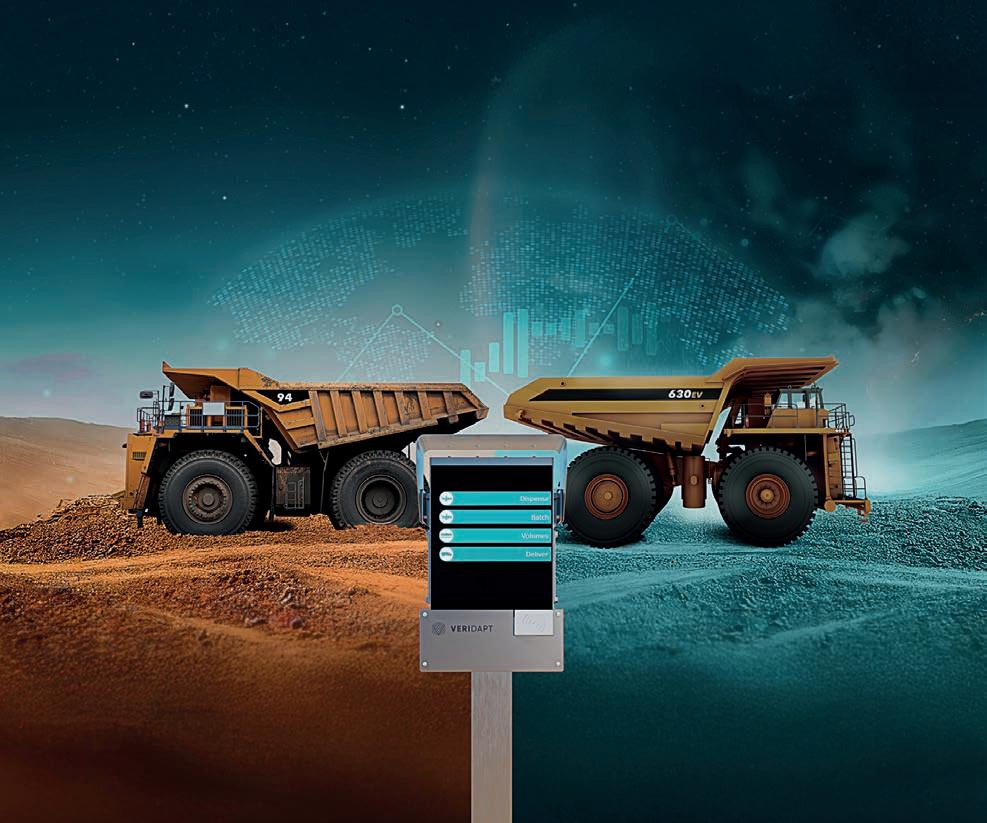
The company learned to tailor its products, from AdaptSMU to AdaptNX, to meet distinct needs without losing its core promise of robust, reliable insight into industrial energy and asset use.
That flexibility has been key to Veridapt’s success in new sectors such as rail and logistics, where real-time visibility and control are critical.
And as the mining industry transitions to cleaner energy, Veridapt is again ahead of the curve. Its technology, originally designed to track and manage diesel fuel, is now integrating electric vehicle (EV) chargers, hydrogen systems and renewable energy sources into a single intelligent monitoring platform.
“At the heart of what we do is helping customers with large industrial fleets manage their energy, whether that’s refuelling or recharging,” Thambiratnam said. “The good thing about us is that we don’t really care what the energy source is. We can integrate with EV chargers, hydrogen pumps. The logic of what we do stays the same.”
This transition is only just beginning in mining, but Veridapt’s readiness gives it a significant head start.
As mines adopt mixed-energy fleets that combine diesel, biodiesel, hydrogen and electric, Veridapt’s platform helps them track consumption, cost and emissions in real-time.
The company’s roadmap also extends to monitoring mining outputs. Beyond managing fuel and energy, Veridapt is now helping clients track their commodity inventories, from gold and uranium stockpiles to fertiliser production.
“It’s the same problem,” Thambiratnam said. “You need to know where it went, how much is left, and reconcile it accurately.
“We’ve started doing that for our mining customers. It’s new, but it’s growing quickly.”
After 20 years, Veridapt’s biggest challenge is not finding growth, but managing it responsibly.
“The market is massive and our challenge is growing too quickly,” Thambiratnam said. “We need to scale in a way that keeps our customers front and centre.”
Looking ahead, the company is preparing for further expansion into adjacent industries such as transport,
logistics, aviation and defence – sectors facing familiar challenges in energy management, sustainability and data integration.
At the same time, Veridapt plans to deepen its offering within mining, leveraging AI and predictive analytics to give companies clearer visibility and control over their operations.
“Mining is at the core of our business,” Thambiratnam said.
“There’s so much you can do with the data. Bringing AI into the applications and making it easier for customers to achieve their outcomes is still core to what we do.”
As Veridapt celebrates its 20th anniversary, the company has shared its ‘20 Lessons from 20 Years of Fuelling Innovation’, a reflection of the milestones and philosophies that shaped its growth
The company has simple – yet powerful – lesson after two decades of adaptation and success: innovation never clocks out. It’s a fitting summary of a business that continues to thrive by staying restless, relevant and relentlessly customer-focused.
EVERY SECOND MATTERS IN MINING, AND THAT’S WHY MASPRO HAS DESIGNED A SUPPLY CHAIN MODEL THAT KEEPS OPERATIONS MOVING.
Asingle failed part can stop a multimilliondollar piece of mining equipment in its tracks.
For MASPRO, those moments – when drill availability hangs in the balance – are when reliability matters most.
The Australian manufacturer has earned a reputation for getting critical components where they need to be, fast, proving that local supply can keep the industry moving even when global networks falter.
As talk of the next mining boom grows, so does demand for Australianmade parts. But it’s not just about growth, it’s about resilience.
MASPRO chief executive officer Greg Kennard told Australian Mining the industry’s future will depend on how well it can keep supply chains running when under pressure.
“We’re here to support local miners and those across Southeast Asia,” Kennard said. “As we expand our footprint, reliability, responsiveness and scalability are absolutely central to what we do.”
That philosophy shapes MASPRO from the ground up. Its vertically integrated production facilities on the east coast handle everything in-house, from design to manufacture, assembly to testing, giving the company total control over quality and delivery.
“Being able to do it all ourselves is a real strength,” Kennard said. “It gives us ultimate control over product quality and supply.”
Control is only part of the story. MASPRO has built distribution hubs across Australia and is identifying global opportunities to realise its strategic potential.
The goal is simple: keep critical spare parts close to the customer, not stuck in a shipping container halfway around the world.
Earlier this year, that network was tested like never before. MASPRO delivered a vital part in just 28 minutes from the initial call to the truck rolling out. It started at 10:29am, when a longtime customer called with a rig that was down and needed a MASPRO cradle assembly immediately. The order was processed by 10:33am and the truck was on the road by 10:57am.
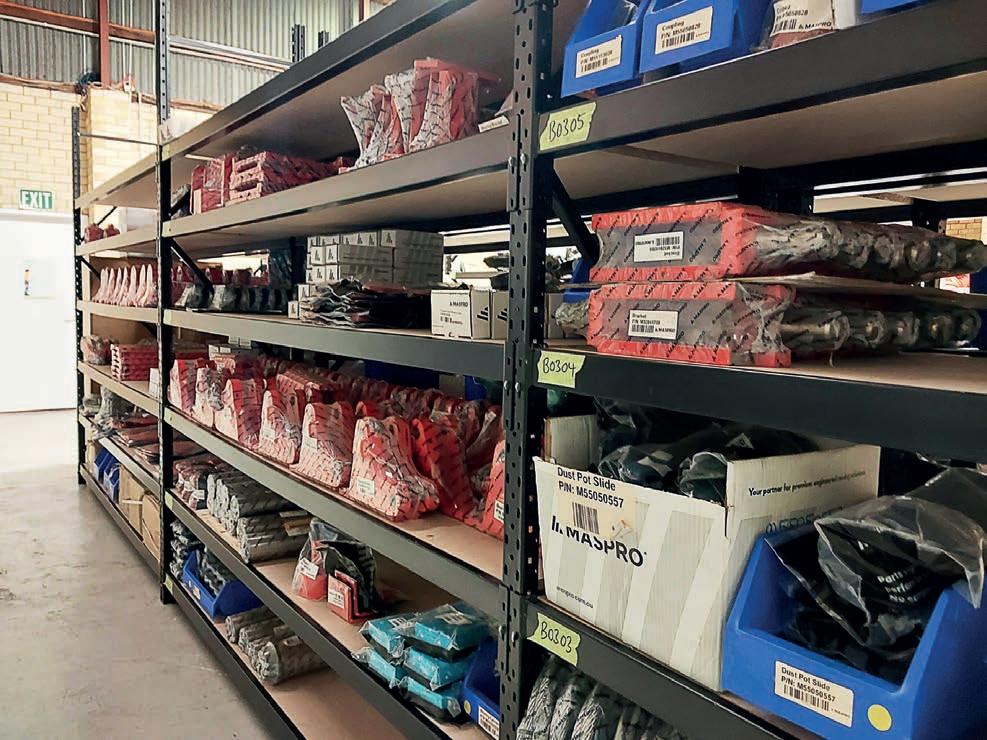
an hour.
Quick deliveries like this prove to the company’s customers they can count on MASPRO when the stakes are high.
For mines, that kind of responsiveness can be the difference between productivity and a major loss. MASPRO’s agility isn’t just about people, it’s about systems.
“We’re adopting advanced technology for inventory planning and monitoring supply performance,” Kennard said. “Automation and digital inventory systems let MASPRO anticipate demand, ensuring the right parts are in the right place at the right time.”
This predictive approach means the company can prevent breakdowns as well as respond to them.
MASPRO measures success with a simple formula: supply in full, on time, in spec.
“If you send the wrong part or something is off, it can cost thousands of dollars,” Kennard said. “Our goal is to ship parts within three to five days; automation and data insights help make that target the standard.”
Even with optimism about the next mining cycle, Kennard maintains a measured view.
“There are good times and challenging times happening at the same time,” he said. “Our job is to be ready for both.”
Being ready means a resilient, technology-driven supply chain that can adapt to changing markets and unpredictable global events.
After years of relying on imports, Australian miners are rediscovering the value of local capability, manufacturers who can deliver quality parts fast, without freight delays or bottlenecks.


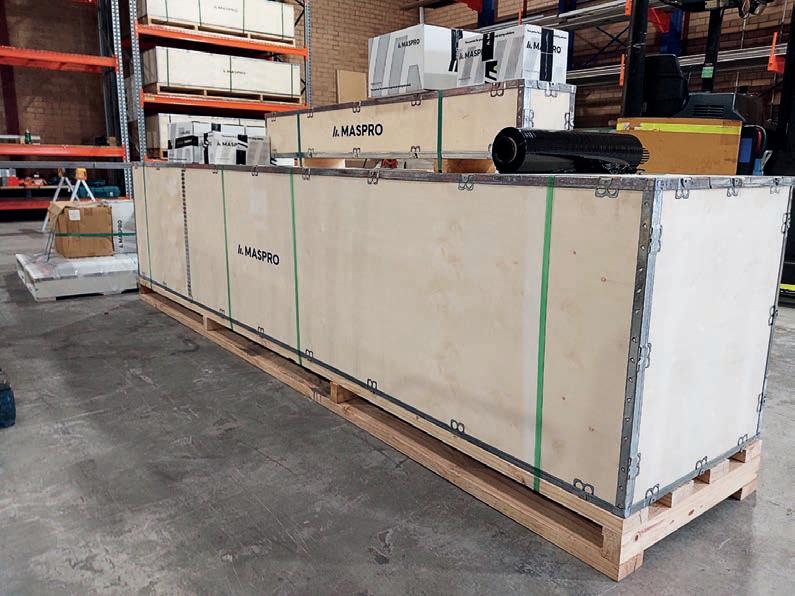
MASPRO shows it works. In 2025, the company has seen demand for its core products grow. Investment in automation, logistics and assembly is part of it, but so is trust.
Miners know they can rely on MASPRO. When disruption is part of business, that trust is invaluable.
“We want to be the strategic partner that keeps our customers running no matter what happens in the world,” Kennard said.
As mining moves into its next phase, MASPRO proves a simple truth: resilience starts at home and local strength is key to global stability. AM
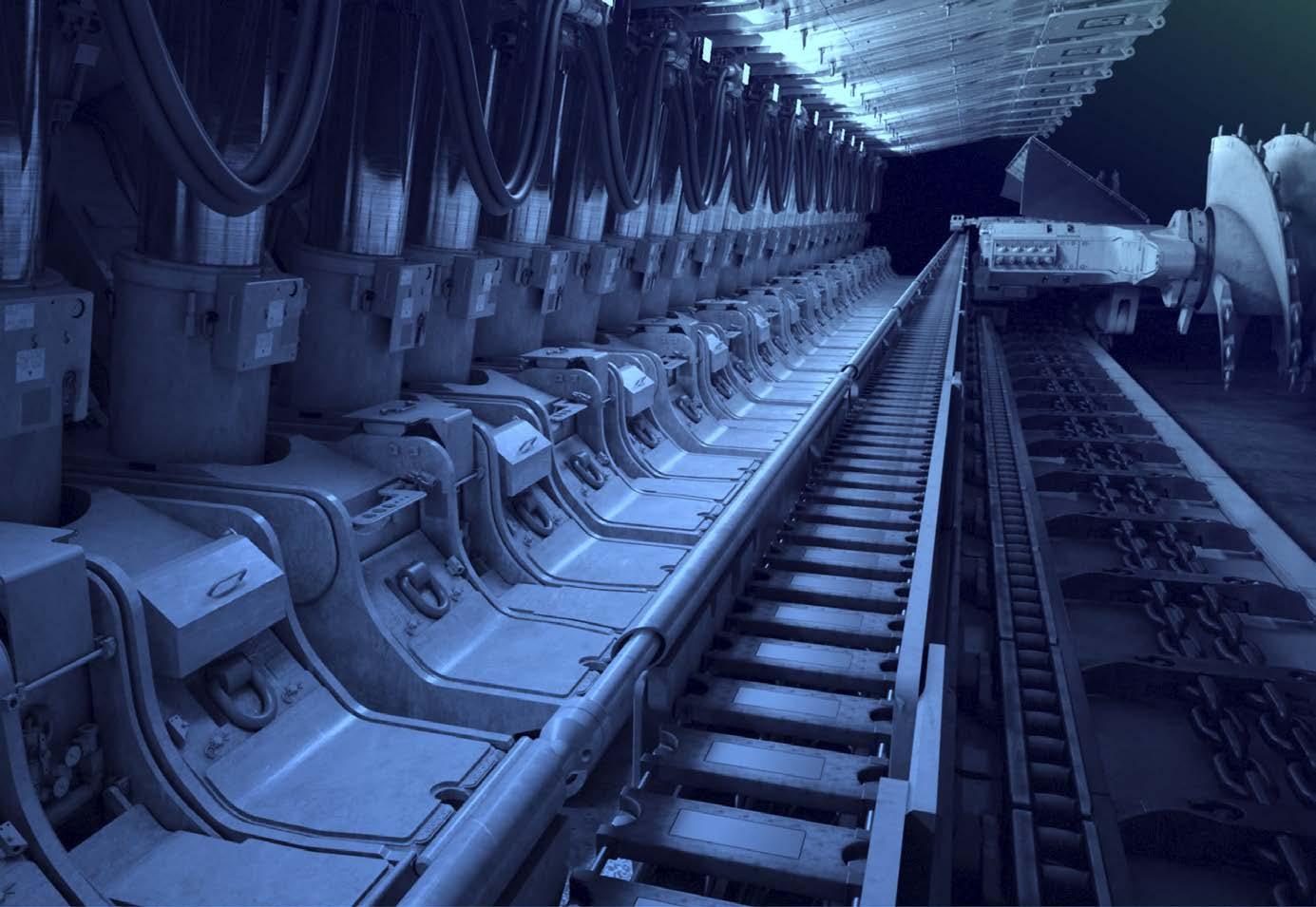
Biodegradable (>95%)
Biodegradable (>95%)
Biodegradable (>95%)
Water hardness up to 42°dH

Water hardness up to 42°dH
Biodegradable (>95%)
Biodegradable (>95%)
Water hardness up to 42°dH
Water hardness up to 42°dH
Improved filterability
Improved filterability
Improved filterability
High corrosion protection
High corrosion protection
Improved filterability
High corrosion protection
Approved and endorsed by HBT
Approved and endorsed by HBT
High corrosion protection
Water hardness up to 42°dH Improved filterability High corrosion protection
Approved and endorsed by HBT
Approved and endorsed by HBT
Approved and endorsed by


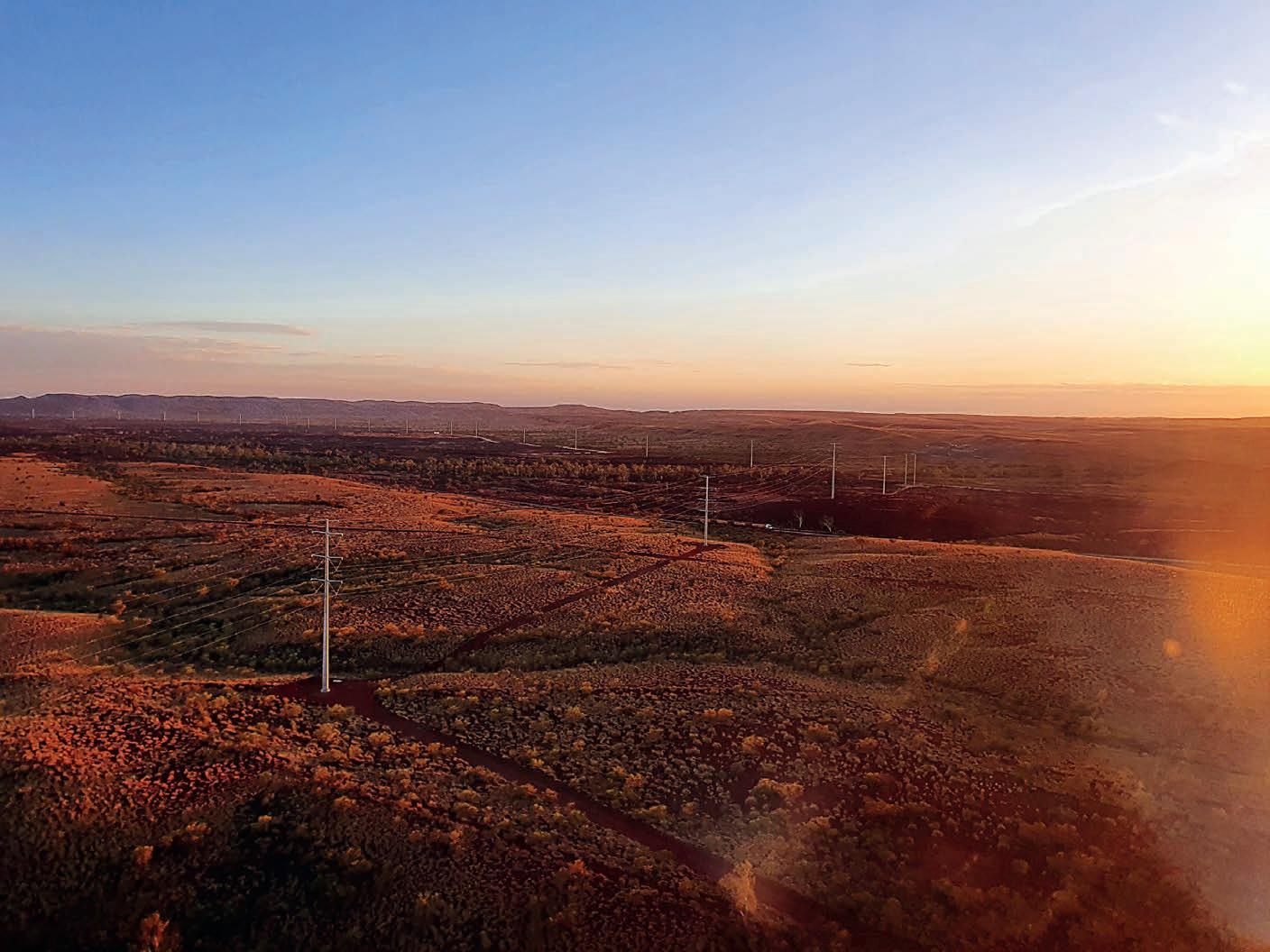
SAT DOWN WITH GENUS GENERAL MANAGER, COMMERCIAL EOIN GORMAN TO DISCUSS ELECTRIFICATION AND THE FUTURE OF THE SECTOR.
Across Australia’s mining sector, the race to electrification is accelerating. Every miner is looking for the fastest route to decarbonise operations, replace diesel dependency, and secure reliable power to remote sites.
But speed comes with risk. These projects are vast in scale, technically complex and time-critical, and they’re
being delivered in an environment where experience is scarce, the clock is ticking, and the cost of getting it wrong is significant. The challenge isn’t ambition, it’s execution.
To unpack the challenges and opportunities in this high-stakes transition, Australian Mining sat down with Genus general manager, Commercial Eoin Gorman. Genus is one of the companies with deep, hands-

on experience delivering large-scale transmission and power infrastructure in remote and complex environments.
Gorman discussed why electrification is as much about trust and collaboration as it is about technology, and what it will take for miners to stay ahead in the race to net zero.
“Power and transmission have always been specialist fields,” Gorman said. “For decades, only a small group of people truly understood how to design and deliver large-scale electrical infrastructure. That deep, tacit knowledge is now retiring out of the system.”
New people are entering the market from civil, rail and tunnelling backgrounds, bringing valuable skills but often missing the hands-on experience needed to navigate complex electrical networks. The result is a growing knowledge gap at precisely the moment the sector is being asked to move faster than ever.
“It’s not about capability or willpower. It’s about collective experience,” Gorman said. “As the first generation of electrification projects get built, that experience will return to the market. But right now, many in the market are learning while doing and that slows everyone down.”
The sector’s goals are extraordinary: decarbonising major mining operations within a decade. And achieving that lofty goal will require extraordinary approaches.
“To achieve extraordinary goals, you need to do extraordinary things,” Gorman said. “We can’t keep using the same delivery models and expect faster results.
“Electrification requires a different mindset; one built on early collaboration and genuine trust between partners.”
In other words, technology isn’t the bottleneck. Coordination is.
Collaboration as a riskreduction strategy
De-risking electrification starts long before a single pole is erected or a battery commissioned. It begins at the planning table, when miners, utilities, government and infrastructure partners sit down to define a shared outcome.
“We’re seeing mature clients recognise the gap,” Gorman said. “They’re bringing delivery partners in earlier through early contractor involvement [ECI] processes to develop the project together to align budgets, schedules and risk before committing to build.”
This collaborative approach helps prevent the scenario of over-engineered, under-funded projects that stall before reaching financial close.
“It’s not just about the engineering,” Gorman said. “It’s about giving shareholders and stakeholders confidence that what’s being promised can actually be delivered.”
A recent Pilbara project demonstrates the impact of this approach. Initially deemed unviable due to cost, the miner GORMAN
opened the door to early collaboration.
“Through an ECI process, Genus worked with the client to reassess the design and execution model,” Gorman said. “The result was a significant cost reduction and a project that went from dead to delivered.”
Behind that turnaround was one key ingredient: trust.
“There was an unwritten understanding between both sides,” Gorman said. “We were aligned on the goal, not the contract. That’s what made it work.”
In another large-scale transmission project, one of the biggest built for a miner in a generation, trust again proved decisive. Despite an EPC contract that offered little flexibility, both parties chose to operate as partners.
“Through COVID, with equipment shipping out of Wuhan and global disruption everywhere, we still delivered on schedule,” Gorman said. “That was only possible because there was alignment from the top. The executives on both sides made a commitment to collaboration, and that set the tone for everyone beneath them.”
For Gorman, the lesson is clear.
“Whilst the contract is important, you can’t contract your way into trust,” he said. “It has to be built, and it has to come from leadership.”
Early collaboration also allows miners to make smarter design and investment decisions.
“We help clients translate their operational requirements into electrical reality, and what generation, storage and transmission assets they actually need to meet future loads,” Gorman said.
That foresight helps to avoid costly rework and prevent unnecessary risk.
“Sometimes bigger isn’t better,” Gorman said. “A larger turbine or higher tower might look efficient on paper, but it can drive exponential cost in logistics, cranes and access.
“Good advice early saves months later.”
Gorman believes the industry also needs to rethink what sustainability truly means.
“The most sustainable thing we can do is deliver projects efficiently,” he said. “Every month a diesel generator keeps running because a project is delayed adds to emissions. Delivery efficiency is a sustainability outcome in itself.”
Gorman urges decision-makers to factor time-to-delivery into ESG metrics.
“Getting it done right and getting it done once should be seen as a core sustainability measure,” he said.
As the first wave of major electrification projects is completed, the lessons will compound.
“Once these big builds are done, the experience will be in the market and delivery will accelerate,” Gorman said. “But to get there, miners need to close the trust gap as much as the knowledge gap.”
Those who start partnerships early, invest in alignment, and share accountability will be the ones who lead.
“These are not typical procurement exercises,” Gorman said. “They’re transformations that depend on collaboration across every level from boardroom to site.”
Electrification is mining’s next great challenge, and its greatest opportunity.
While technology and policy play their part, execution will set the leaders apart. The miners who move first to close the trust and knowledge gaps, build real partnerships, and act with urgency will be the ones that power the next chapter of Australia’s resource story. AM
WE HELP CLIENTS TRANSLATE THEIR OPERATIONAL REQUIREMENTS INTO ELECTRICAL REALITY, AND WHAT GENERATION, STORAGE AND TRANSMISSION ASSETS THEY ACTUALLY NEED TO MEET FUTURE LOADS.”
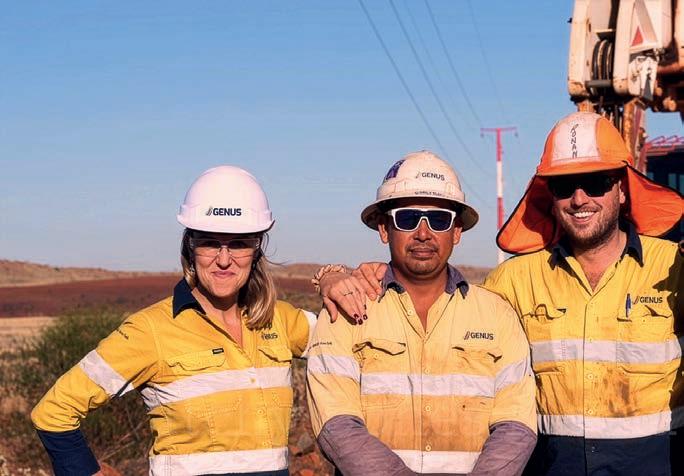
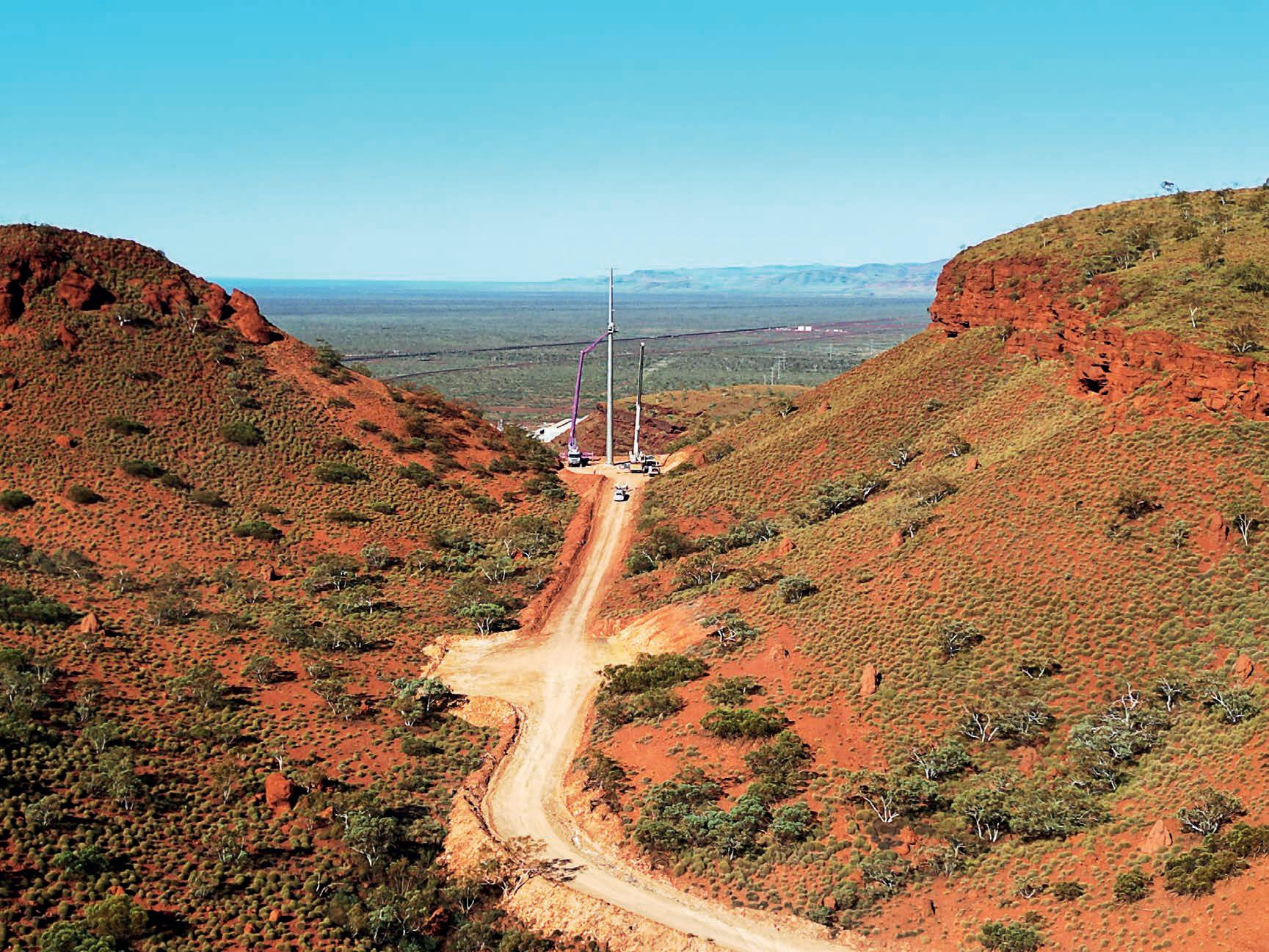

DEERING LEVERAGES NEARLY A CENTURY OF EXPERTISE, ADVANCED DATA ANALYSIS AND A FULL SUITE OF REPAIR, REBUILD AND MAINTENANCE SOLUTIONS TO KEEP FLEETS RUNNING LONGER AND SMARTER.
In an industry where uptime is everything, repair and rebuild strategies can make or break a mine site’s productivity. Few companies understand this better than Hastings Deering.
With more than nine decades experience as a Caterpillar (Cat) dealer, Hastings Deering’s approach to repair and rebuild services is grounded in one clear goal: to deliver the lowest total cost of ownership (TCO) for every asset across its entire lifecycle.
Hastings Deering offears a number of repair options – from bespoke repairs to certified component and machine rebuilds to genuine Cat parts and exchange parts – to cover a breadth of support services, remanufacture components to like-new condition, and help to ensure financial savings through extending the life of critical assets.
The company provides a range of choices to provide the best value for specific problems, from offering new components to exchanging, repairing and rebuilding existing gear, all complemented with nearly a century of experience dealing with Cat machines.
According to Hastings Deering general manager for after-market and supply chain James Burns and
executive manager for after-market solutions Simon Turnbull, the company’s approach is about more than selling parts or fixing machines. It is about creating partnerships.
“Anyone can sell a machine, anyone can rebuild a machine, but what we do is support the best coverage right across the lifecycle of the asset, from productivity and performance to maintenance and component life,” Turnbull said.
At the heart of Hastings Deering’s repair options is a philosophy of total asset support. That begins long before a rebuild and continues well beyond it.
With no two mines operating the same way, the company’s teams – from site-based performance specialists to component planners – work directly with customers to deliver solutions that fit their unique operating environments.
“We tried to have relationships right across a customer’s business,” Burns said. “That means understanding their operators, their maintenance teams, their fleet planners, even their finance departments, so we could align with their uptime goals, productivity goals and cost goals.”
Even with the best planning, mining is unpredictable. Equipment fails, conditions change and downtime
happens. Hastings Deering recognises this – and prepares for it.
The company’s approach to repair is powered by data. By using connected asset data, scheduled oil sampling (SOS) analysis and condition monitoring, Hastings Deering can forecast maintenance needs long before a breakdown occurred.
“If a customer wants to run an engine to 30,000 hours, we are there tracking the asset’s health data along the way,” Turnbull said. “When the data tells us that in six months’ time that engine needs to come out, we started moving that replacement engine toward the site. When the time comes it’s there, ready to go.”
That kind of foresight translates into shorter downtimes and more reliable performance. It also positions Hastings Deering as one of the first to act when it comes to major maintenance events.
“Because we are so connected with the customer’s maintenance plans, we are often the first to know, and therefore the first to act,” Burns said.
The company maintains more than half a billion dollars of inventory across its network, supported by Cat’s global supply chain and partnerships with other Cat dealers such as Westrac and William Adams.
“If you aren’t there for a customer in the tough times, you might not be their first choice in the easy times,” Burns said.
“That was why we structured our workshops, inventory and people around both planned and reactive work.”
Part of being there when it matters is using the information at hand to anticipate needs and solve problems proactively. Mining generates immense volumes of machine and site data, but data alone isn’t always enough. Hastings Deering’s condition-monitoring team helps customers turn raw information into actionable insights.
In one recent case, the team analysed more than 8000 data inputs through artificial intelligence (AI), refining them into 12 clear recommendations for a mining customer, which meant they didn’t need to interpret thousands of lines of data.
“They just received a clear, actionable plan to improve performance and reliability,” Burns said.
For Hastings Deering, that type of partnership extends far beyond the workshop. It is an example of a long-term commitment built on data, expertise and trust to keep Australia’s mining fleets running stronger, longer and smarter. AM
LOCAL EXPERTISE. PROVEN PERFORMANCE. GLOBAL CONFIDENCE.
In a world of supply disruptions, MASPRO delivers reliable parts when you need them most. By manufacturing locally and investing in innovation, MASPRO provides trusted performance in the field, because in mining, downtime isn’t an option. When the pressure’s on, you can count on MASPRO to keep your equipment and site moving.

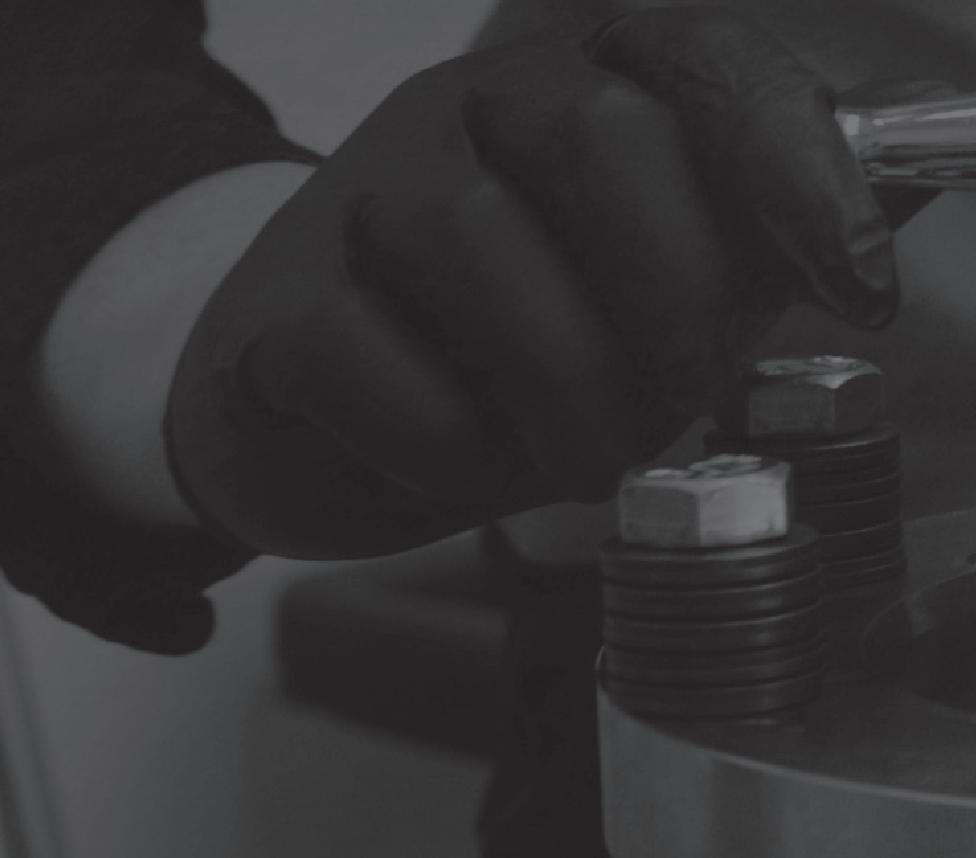












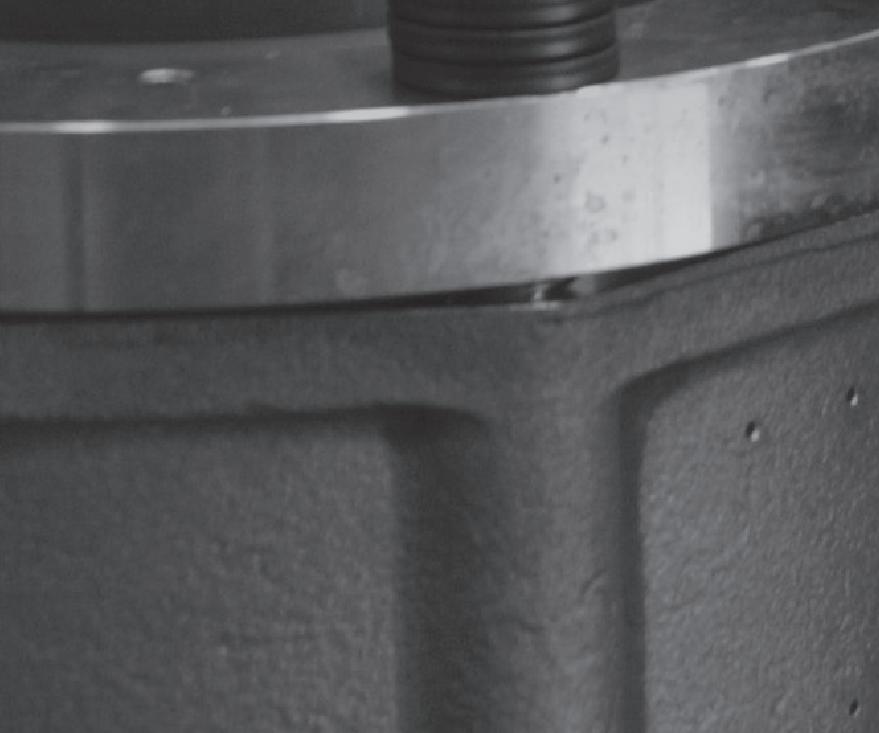
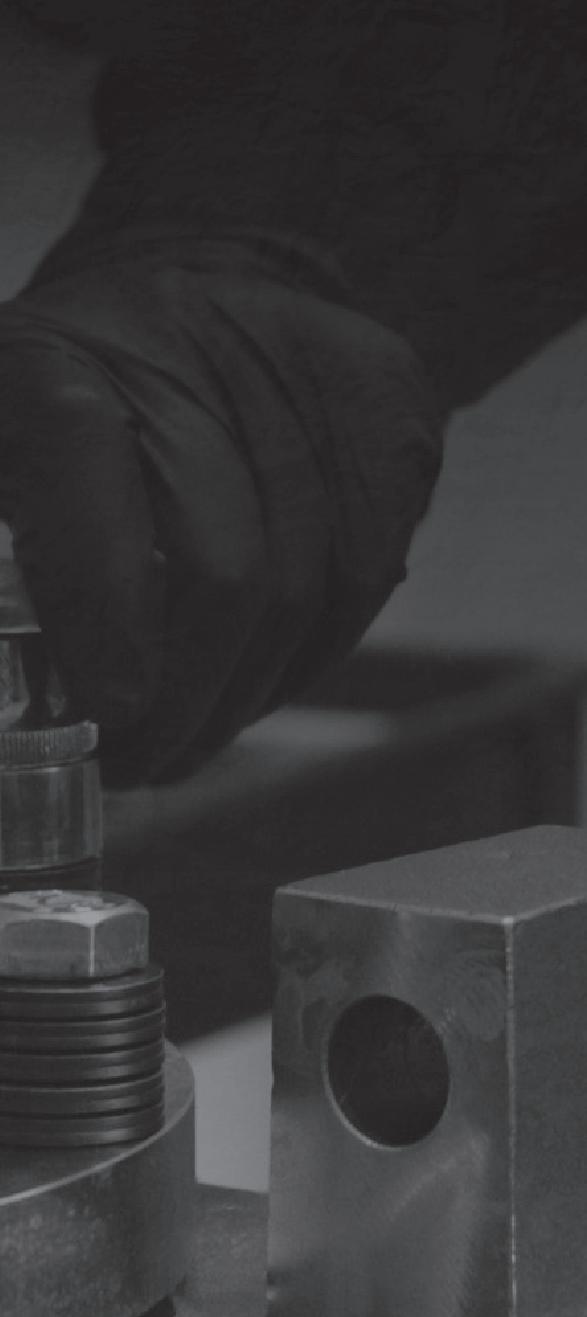


If there was ever a time for a major global resources deal to be announced, the first day of the International Mining and Resources Conference (IMARC) would be high on the list.
So when the US–Australia critical minerals deal first started making headlines on the morning of October 21, it was all but impossible to escape talk of the new agreement during the event.
While first reports focused on the initial tranche of projects earmarked for development funding, others across the industry could see the flow-on benefits, especially for companies with an established presence as key suppliers and partners in critical minerals processing and production.
And Metso certainly falls into that category.
From precious metals to industrial minerals, Metso offers advanced and comprehensive solutions tailored to efficiently processing a wide range of commodities, including copper, which was a very hot topic of conversation at IMARC.
Metso director of minerals AsiaPacific David Tulloch was part of several panels at IMARC, as well as a session presenter of ‘The Copper (Concentrate) Conundrum’, making him well placed to provide insights not only on the much-vaunted deal but also on how companies like Metso are positioned to support critical minerals processing and production.
“Metso has a long history in developing technologies for copper production, both in mineral processing – taking it from ore through to concentrate – and, beyond that, upgrading the concentrate to refined metal,” Tulloch told Australian Mining
“In Australia, for example, the fully integrated ore to metal facility at BHP’s Olympic Dam has a pretty extensive installed base of Metso equipment.”
One of the key challenges facing copper producers, Tulloch said, is finding new and better ways to unlock deposits that might not have previously been economically viable. As an innovation-focused company, Metso is relishing that challenge.
“As grades decline around the world, technology providers like Metso are challenged to find new ways of processing more complex ore,” Tulloch said.
“One such way might be through our recently updated copper pressure oxidation process, which uses an
autoclave to leach more challenging ore types with high impurities, where site location and scale demand or where the POX [pressure oxidation] process provides advantages for oxide and transition ore types that are co-locational to a sulphide deposit.”
On a more conventional note, and complimentary to its flash smelting technology, Metso’s electrorefining solutions cover the entire process chain, from anode preparation to SMEgrade copper cathode. This technology integrates the company’s process knowhow and proven material-handling technologies with advanced process control, resulting in a holistic system where all interfaces are optimised for high performance and quality.
Designed to minimise operational challenges throughout a plant’s life, electrorefining technology is suitable for new and existing copper smelting operations. It represents another example of the kind of innovation for which Metso has become known.
Metso director of critical minerals and hydrometallurgical solutions Duncan Wyatt said the company’s focus on innovation always comes back to providing on-the-ground solutions that closely align with client feedback on factors such as capital and operational expenditure.
“We have a very strong R&D [research and development] presence in Finland and other countries, but as much as we draw on global resources, we do so with the support of local knowhow and capabilities,” Wyatt, who also spoke on two critical minerals panels at IMARC, said.
Wyatt told Australian Mining it is important to have a global view of the business and how technology might be applied across different projects, “but there is a localisation of what we offer for most projects”.
“A recent example in copper is where we have been contracted to design and supply the largest above-ground modular [bolted] high-rate thickener for a new copper project in Australia,” he said. “That design was driven by local needs – a high-cost environment, a remote location, and a desire to have the lowest total installed cost – whilst leveraging nearby best-cost country supply.
“The other significant upside of the design was that not only will it bring a near-term benefit to the project in terms of total installed cost, but there are aspects of the design that make it both operationally optimal and maintenance
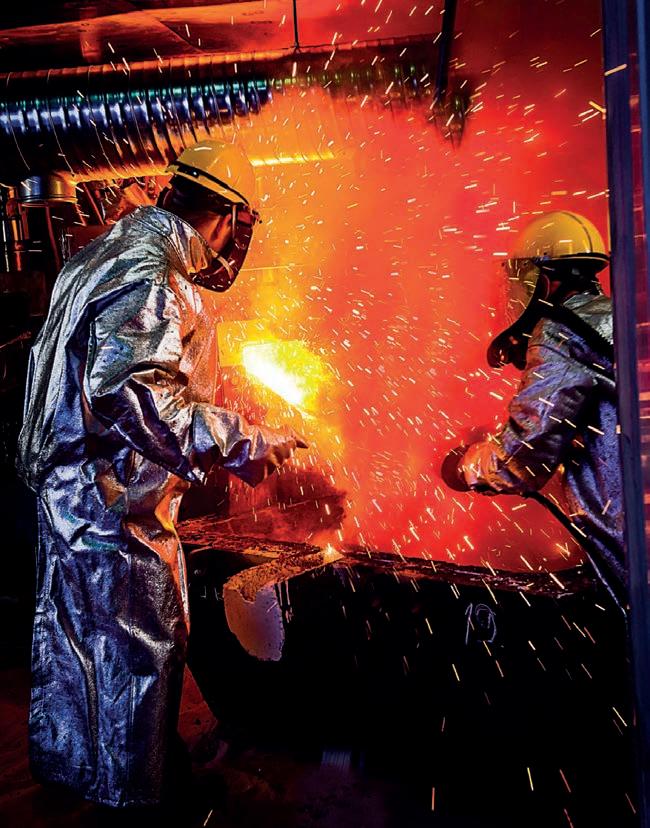


friendly, as well as being inherently safer due to the deletion of a central access tunnel and central caisson particular to on-ground designs.
“It will work as an above-ground bolted arrangement for the life of mine. When that mine comes to its natural operational cessation, it will
be able to be economically reutilised –essentially recycled – for another nearby mine or similar operation due to its modular design. It’s an example of the sustainable practices we’re putting in place to drive efficiency in the projects we help develop along with a long-term value-creation mindset.” THE STATE-OF-THE-ART

It’s also handy that Metso has built up an impressive stable of service global facilities, including its largest global service centre in Karratha, Western Australia, opened in 2024. The centre has quickly become a mainstay in the Pilbara, providing not only a full range of services to local miners but also a boost to regional employment, demonstrating the company’s commitment to local markets.
Visiting Australia for IMARC, Metso senior vice-president crushing Guillaume Lambert said it remains important to consider the flowsheet requirements of clients alongside technology. He told Australian Mining that Metso is seeing increased global demand for lower capital expenditure (capex) technologies in areas like iron ore, but copper operations, for example, often exhibit a different set of requirements.
“Perhaps where in the past we were selling very traditional technologies with high capex, we are now able to also offer lower-capex technologies that will match well with short-lifetime mining operations,” Lambert said. “At the other end, especially with
METSO’S HRCE HPGR ENHANCES EFFICIENCY, ELIMINATES EDGE EFFECT, BOOSTS THROUGHPUT AND REDUCES DOWNTIME.
And, again, Metso is well positioned to support miners in these endeavours.
Wyatt said lithium is a good example of a commodity that is set to see a “big wave of development” over the next decade.
“In mining and downstream refining capacity, we expect that in the next five to 10 years there will be an expansion of that capacity [for lithium],” he said.
“It’s already created a market condition that sees investment as more favourable,” he said.



copper, miners are more focused on the total cost of ownership. In this case, the dynamic is different. What we are developing are technologies that consume less power, use less water, and are more efficient overall than what was available previously.”
Lambert pointed to an example of a recent comminution project Metso delivered in South America, consisting of crushing, high-pressure grinding rolls, and a stirred mill in series.
“It was very new; new to this market and new to us. We were able to decrease power consumption by 40 per cent compared to the traditional SAG and ball mill,” he said. “That’s why we strive to be as agile as possible, depending on the customer’s focus.”
Returning to talk of the critical minerals deal, Tulloch, Lambert and Wyatt all agreed that it could open a vista of exciting commercial, as well as technical and operational, opportunities. Many of the critical minerals and rare earths discussed under the deal will require new approaches to exploration and innovative processing technologies.
“Metso is positioning itself to support downstream lithium refining with our new soda leach process, which is designed to add value to the spodumene concentrates processed through so much of the equipment we’ve supplied to mines in Western Australia and throughout Australia.”
The soda leach process, also known as the alkaline leach concept, is a novel processing route developed and patented by Metso for extracting refined lithium from raw concentrates.
Wyatt said clients he has spoken with are buoyed by the US–Australia deal.
“It is going to provide some critical impetus for those projects we would call spade-ready; they have mining approvals in process, they have a defined resource, they have environmental approvals in process. They’re just missing that last critical piece of the puzzle, which is an improved equity position and associated financing approval.”
For Tulloch, the benefits of the US–Australia deal will hopefully flow through to developing stronger local critical minerals processing and refining capabilities.
“We very much welcome the prospect of more projects to support our customers in this part of the world,” he said. “There are a number of exciting projects in critical and strategic minerals that we’ve been working on recently with our customers, and we’re excited for what the future might hold.” AM


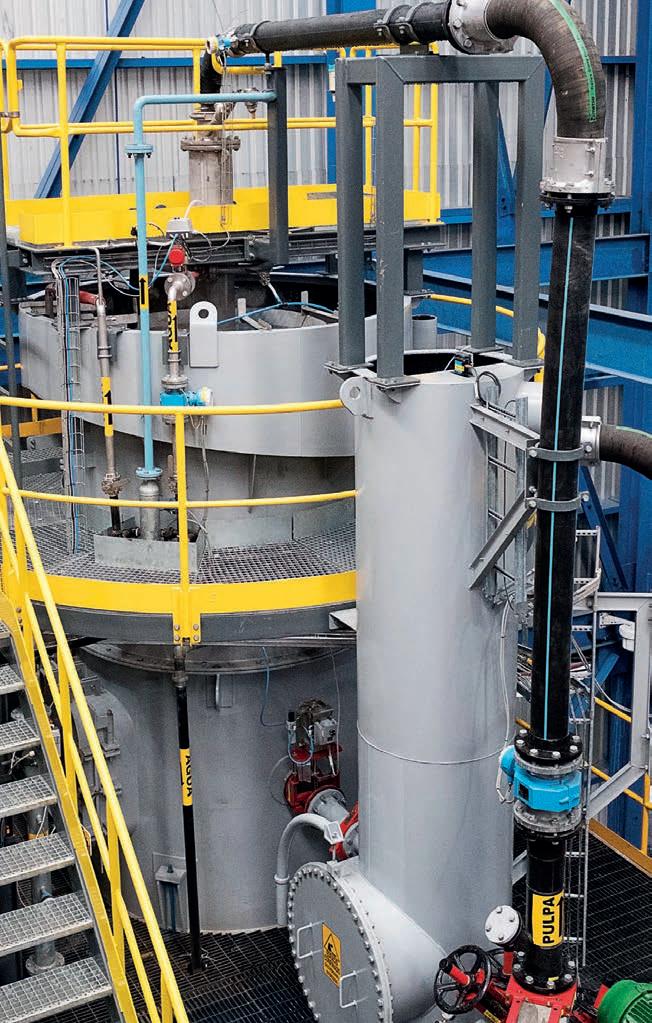
SEARCHING FOR COPPER, EMPIRE METALS INSTEAD FOUND TWO BILLION TONNES OF TITANIUM ORE. ITS PITFIELD PROJECT IS NOW CREATING A NEW SUPPLY CHAIN FOR THE CRITICAL METAL.
When Empire Metals set out to explore old copper workings in Western Australia’s wheatbelt region in 2023, managing director Shaun Bunn wasn’t expecting to stumble onto a world-changing deposit. But that’s exactly what happened 160km south of Geraldton, where drilling revealed a geological anomaly of extraordinary proportions: what is likely the world’s largest known deposit of titanium.
The company announced a maiden mineral resource estimate for the Pitfield project in October. With some 2.2 billion tonnes at 5.1 per cent titanium dioxide, spread across a 40km strike at depths of up to 5km, it’s a discovery Bunn describes as “a giant hidden in plain sight”.
The explorer, listed on the London Stock Exchange’s Alternative Investment Market and cross-traded on the US OTCQX, has moved at remarkable speed. In the two and a half years since that discovery, it has been able to produce high-purity titanium dioxide, and Bunn is confident the momentum will be maintained.
“We’ve assembled a world-class technical team and we’re not slowing down,” he said. “Having five or six internationally recognised metallurgical laboratories right here in Perth, plus established infrastructure on our doorstep, means we can move faster than most projects of this scale.”
The Pitfield project now stands as one of the world’s largest titanium resources, but making the discovery even more
compelling is its favourable location.
The massive site shares proximity to established infrastructure, including rail, gas, power and port facilities, that could position the project as a critical supplier in an increasingly strategic global titanium market.
Unexpected find
Empire’s journey to this discovery began with a different target entirely. The company was investigating historical copper workings in the wheatbelt when drilling intercepted the unexpected titanium mineralisation of exceptional quality and scale.
What emerged wasn’t a conventional mineral sands deposit, nor a typical hard rock ilmenite body. This was something geologically unique: a sedimentary basin filled with titanite, altered by ancient hydrothermal fluids.
“We drilled down 400m and every metre was in ore,” Bunn said. “It ended in ore, but the geophysics trace this thing down 5km into the basin.”
The dimensions are eye-opening: 40km long, 10km wide and potentially much deeper than any drilling has yet been able to confirm.
Bunn said the massive system has been sitting beneath wheat paddocks, waiting for someone to start drilling. Empire drilled approximately 20 per cent of the prospective area to define the maiden resource, suggesting significant expansion potential remains.
What separates Pitfield from traditional titanium operations becomes apparent at surface level. Natural weathering has transformed the top 40–60m of mineralisation into anatase,
a pure titanium dioxide mineral comparable to high-value rutile. This weathered zone requires no overburden stripping, which means mining can begin directly in ore.
operations is stark. Typical mineral sands deposits grade between 1–2 per cent titanium dioxide; Pitfield averages 5.1 per cent, reaching close to 10 per cent in places. Hard rock ilmenite operations require energy-intensive smelting; Pitfield’s softer, friable surface material involves free-digging only in the upper levels.
tonnes, there’s no waste to remove, so our mining costs and carbon footprint are way down compared to beach sands,” Bunn said.
ore contains none of the problematic elements that often plague other titanium deposits. There’s no thorium, no uranium, no chromium and no
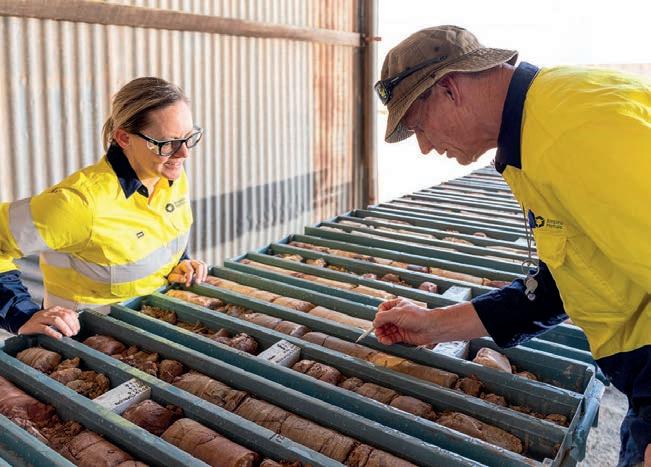

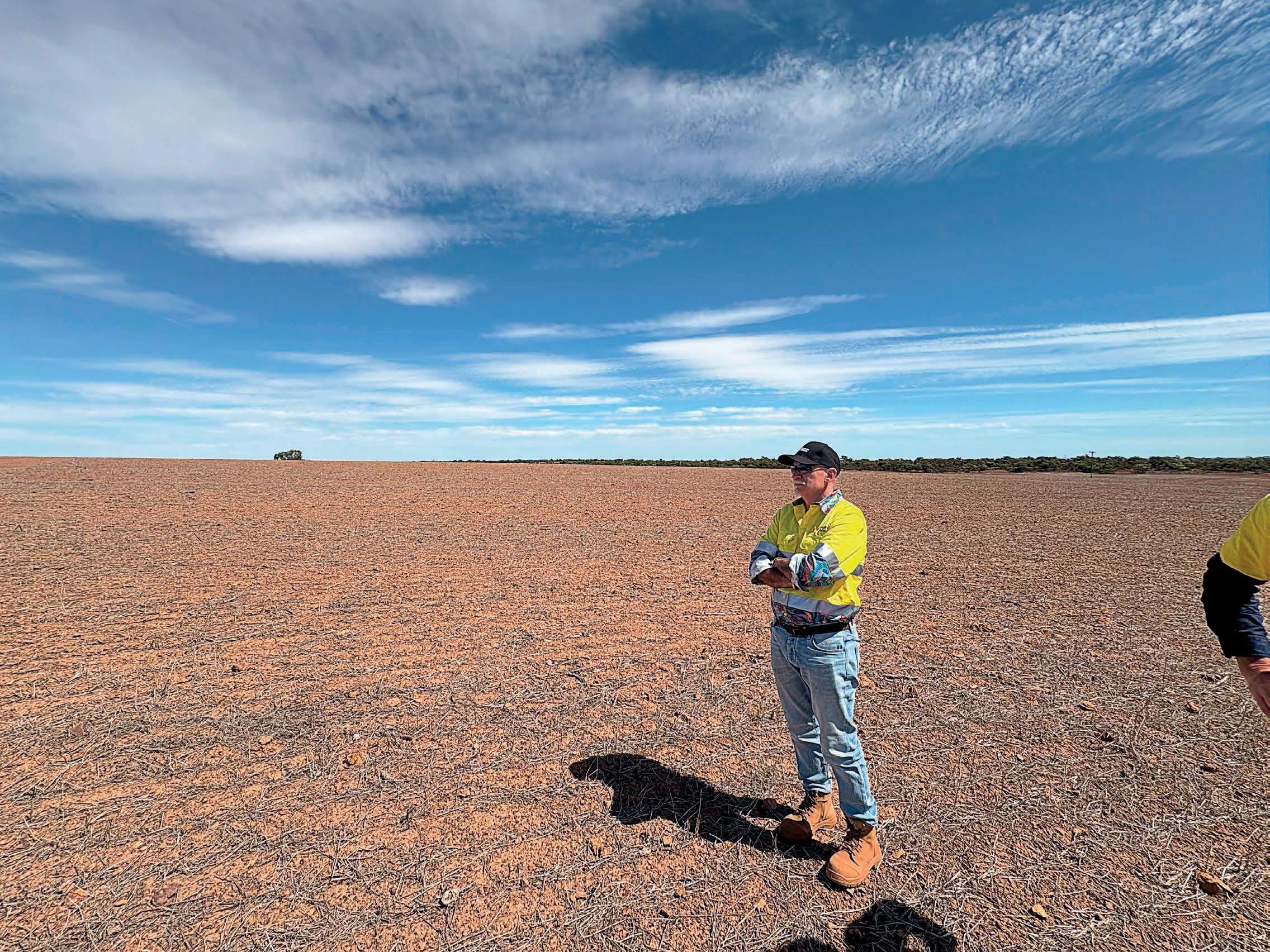
Pitfield’s anatase appears to break down through simpler chemical processes.
The company has demonstrated it can progress from concentrate to highpurity titanium dioxide without the significant energy inputs that define traditional operations.
“The minerals themselves break up pretty easily in the digestion process,” Bunn said. “We don’t need to smelt it like a hard rock producer, and we don’t need a big kiln to make synthetic rutile. Our process test work is indicating we’ve got a much simpler process to get to pigment.”
But pigment production, while commercially significant, isn’t Empire’s only goal. The company has hired a marketing manager and is planning to move to continuous pilot-scale testing in early 2026. The objective will be to produce sufficient quantities of titanium products, from pigment to intermediate compounds, that can be sent to potential customers for evaluation.
Those customers represent the high end of the titanium market: major chemical groups for pigment applications, and aerospace manufacturers for titanium metal. The key compound Empire is targeting is titanium tetrachloride, the feedstock required to produce titanium metal itself.
“The Holy Grail is actually getting to metal,” Bunn said. “That’s what we’re chasing, because that’s where the critical minerals story becomes real.”
The titanium metal market is valued at approximately $US24 billion annually and growing at around four per cent per year. However, it faces a supply concentration problem with Chinese producers currently dominating.
Empire has been engaging with Australia’s critical minerals policymakers for the last two years, and the company sees potential access to the $4.5 billion critical minerals facility managed by Australian Export Finance.
“Western aircraft manufacturers and defence departments want long-term supply security as they’re reluctant to lock into supply chains with only one country,” Bunn said. “We’re offering a Tier 1 location with the scale and infrastructure to become a genuine alternative source.”
With several hundred years of potential mining life already indicated in just 20 per cent of the prospective area, Empire’s focus now shifts to proving the commercial pathway from ore to metal. If successful, Pitfield could reshape global titanium supply chains from its unlikely location in WA farming territory. AM
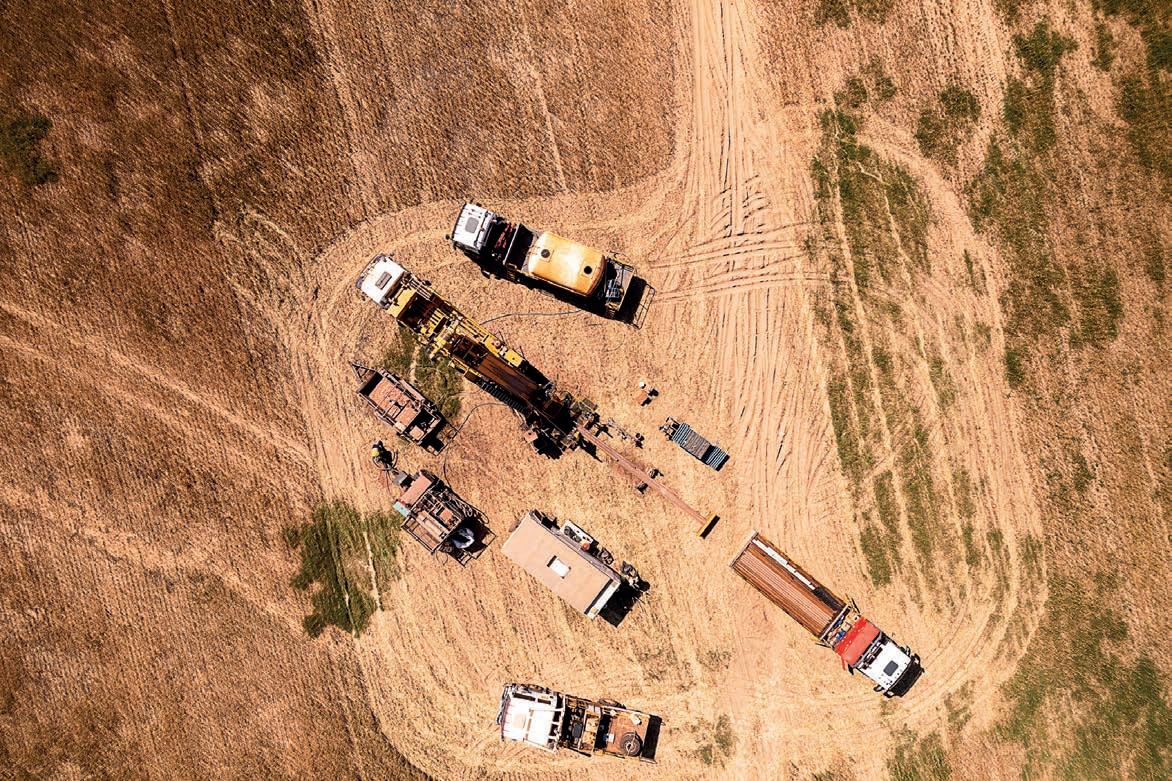

A REPORT DESIGNED TO INFORM “COORDINATED, STRATEGIC INVESTMENT” IN NET-ZERO TECHNOLOGIES IN MINING AND HEAVY INDUSTRIES HAS BEEN BACKED BY THE MINERALS RESEARCH INSTITUTE OF WESTERN AUSTRALIA.
Decarbonisation is redefining the rules of business and could be the innovation catalyst of the century, but understanding how to build infrastructure for the future is no easy feat.
According to professional services provider EY, it can be hard for business leaders to see beyond regulatory demands and operational challenges, with the secret lying in looking at how to drive value beyond compliance.
The greatest opportunities, according to EY, are sometimes those you haven’t thought to look for or even knew existed. Finding these opportunities, however, requires the right skills to rethink what success looks like and explore those connections across an entire business ecosystem.
To assist the mining industry in Western Australia, the ‘Net Zero Emissions Research, Development and Demonstration (RD&D)’ report aims to do just that – provide a strategic and coordinated view of the state’s heavy industry technologies to inform where investment can be spent in the future.
Backed by the Minerals Research Institute of Western Australia (MRIWA) and led by University of Western Australia chemical engineering student Phoebe Tran, the report will be used to identify gaps and bring “new insight” to identifying priority areas for MRIWA to consider supporting in the future.
“To be able to do this, there is a need to understand the status of current activities. It is planned to make this a publicly accessible database to help identify pre-commercial technologies that are specific to WA,” Tran told Australian Mining
“I was particularly attracted to this research project by the prospect of deepening my knowledge of industry operations through collaboration with leading companies in Western Australia.
“This experience has enabled me to apply my academic learning to address a real-world challenge with big impact.”
With a lack of strategic direction in how the decarbonisation of the heavy industry is coordinated cited as a challenge, the RD&D report aims to lessen the burden and, eventually, give a greater view of opportunities.
“Given that there are approximately 510 pre-commercial technology

designs and components across the whole energy system, there is a huge opportunity for investments in new technologies,” Tran said.
“Using the assessment from this project, I envision identifying key opportunities that will both assist industry taking a least-cost pathway to decarbonising and help build Australia’s new low emissions economy.”
The MRIWA has set out key goals it hopes will be achieved via the project, including mapping current capabilities and future requirements, investigating current capabilities for WA’s transition to net zero by 2050, and facilitating collaborative development of net-zero RD&D development pathways with industry and research organisations.
The opportunities presented in the report could ultimately help to streamline operations and better inform environmental, social and governance (ESG) opportunities.
“What this means is there are many opportunities yet to be explored,” Tran said. “The biggest detail for organisations to take note of is that the results of this research are highly dependent on industry participation.
“Unlike other research, where modelling is used to generate results and conclusions, this research relies on collection of real-world data.
“For the results to be truly meaningful for mining and other
heavy industry sectors, their input is required.” AM



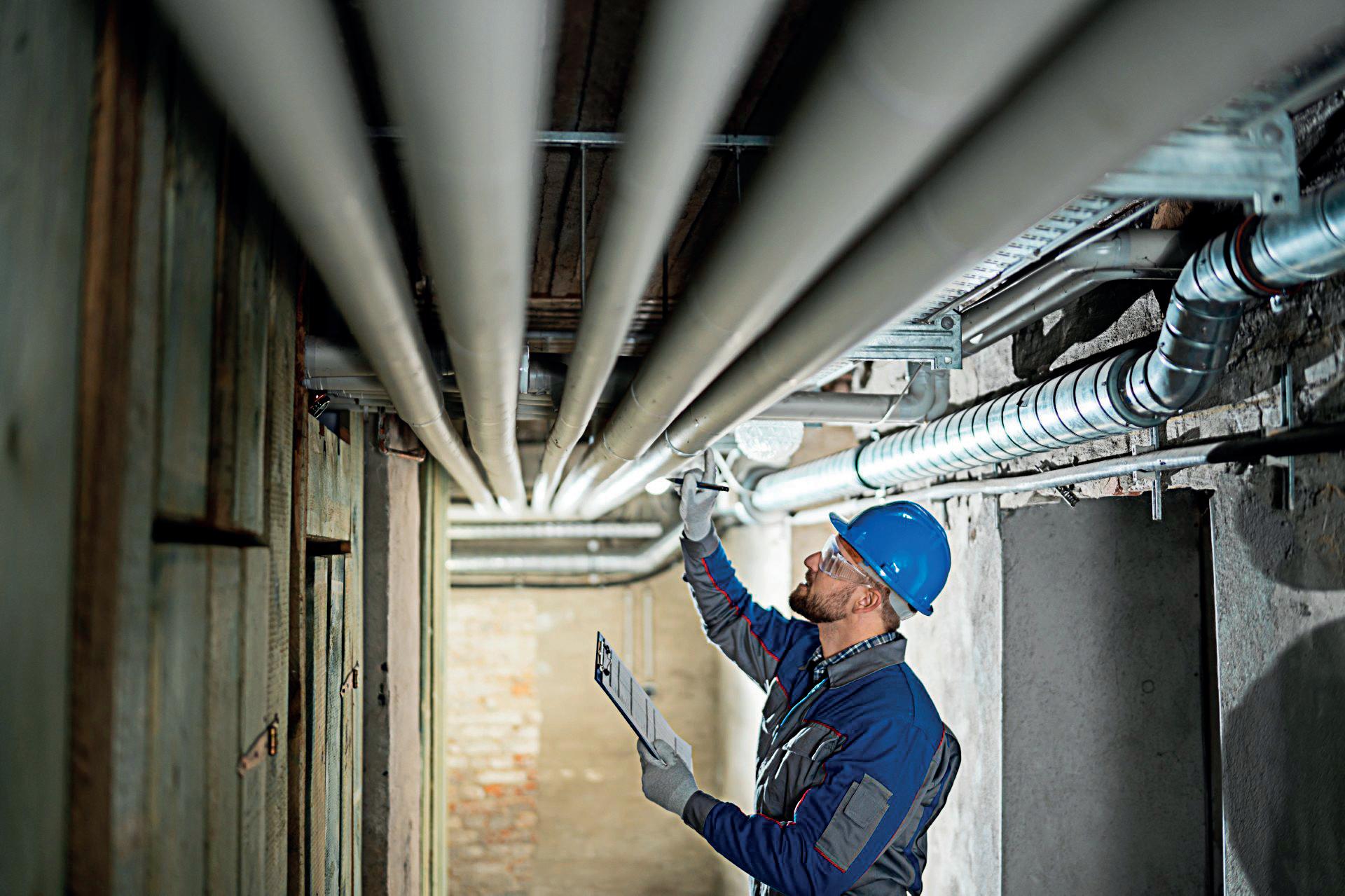
HENKEL IS ADDRESSING A VERY COMMON PROBLEM WITH A VERY SIMPLE SOLUTION: A PIPE BANDAGE THAT REDUCES DOWNTIME.
Pipelines that carry slurry, water, chemicals or compressed air lie at the heart of operations, and when one cracks or corrodes, the consequences are immediate: costly downtime, safety risks, environmental hazards and lost production.
That’s why robust and rapid pipe repair solutions are not a luxury, but a necessity. In environments where access is often remote and delays are expensive, solutions that can get pipes back in service within an hour are game-changers.
A specialist in adhesive, sealant and functional coating products, Henkel Australia’s portfolio can handle any challenge with long-lasting protection.
The LOCTITE 5070 PRO Pipe Repair Kit is an prime example. The fast-curing, easy-to-use, reliable emergency pipe repair system uses a self-amalgamating tape applied over an epoxy putty to seal leaks instantly.
Designed for temporary repair of weak areas around metal, plastic and composite pipes up to four inches in diameter, repairs can be achieved in minutes without special tools or training, giving operations peace of mind between maintenance periods.
“Mine sites will have a shutdown period programmed into their operation calendar – six weeks, six months, whatever it may be – where major pieces of pipework and equipment can be changed. In between those shutdown times, if issues are found, they need something that can hold out until the next scheduled maintenance,” Henkel key account manager Neil Board told Australian Mining
Speaking from experience, having worked with global companies such as BHP, Board said some sites keep a
“When you consider the different diameter of these pipe clamps and other key infrastructure on mine sites, it can be difficult to make sure you have the expertise to deal with every issue, especially when leaks aren’t always sealed out instantly,” Board said.
“Our solution can do that, and there’s no real training or expertise to apply.”
Conforming to different shapes and offering adhesion and pressure retention, pipes can be back in service within one hour. The repair kit’s strong adhesion forms a solid bond to stop leaks and reinforce pipe couplings.
“Once the procedure is shut down and the bandage is applied over the leak, you have no idea if it’s apprehended the problem until the system’s back up and running. That takes a lot of time and effort to fix a small hole,” Board said.
“Henkel came up with the solution so issues can be resolved whilst there’s still pressure in the pipe and operations are still going. You apply the bandage, make sure it’s done the job, and you’re done.”
The difference compared to others on the market? Increased uptime and simple application that can seal leaks while pipes are still under pressure, which also reduces the likelihood of hazardous leaks and trips and falls on site.

“There’s only one additional step in the pipe bandage process; an amalgamating tape that sits on top of epoxy putty that is placed over the hole. That further seals the leak whilst water is still flowing, so there’s no need for machine shut down,” Board said.
“This allows the pipe bandage to be applied over the top of the tape: add water, let it sit, and the system is completely sealed.”
In environments where time is critical and reliability is non-negotiable, innovations of this kind are not just advancing maintenance practices but helping to ensure greater uptime.


Electrification is mining’s next defining challenge, and you have the opportunity to lead it. But success won’t hinge on policy or technology. It will come down to execution. That’s where Genus excels.
As a modern Tier 1 contractor, we help de-risk the transition to electrification through early collaboration, practical expertise, and end-to-end delivery capability. With hands-on experience delivering large-scale power and transmission infrastructure for Fortescue, Rio Tinto, and BHP, we know how to close the trust gap, move with urgency, and build sustainably.
If you’re ready to power the next chapter of Australia’s mining story, partner with the team already doing it.
IT’S VITAL THAT EQUIPMENT KEEPS UP WITH THE DEMANDS OF MINE SITES, AND THAT’S WHY SCHLAM HAS MOVED INTO NEW SOUTH WALES.
The drive to continuously improve mine productivity, reduce costs and balance environmental, social and governance (ESG) commitments is leading to new customisation solutions for mining equipment.
As a major supplier of load and haul accessories, Schlam Payload is used to designing solutions to the needs of specific mine sites and is now taking customisation to another level.
“We’re increasingly partnering with mines to take a long-term view of how our products support their overall mine plan,” Schlam chief executive officer David Haslett said.
“These solutions combine advanced engineering with innovative data modelling and monitoring to deliver a broad range of financial benefits, environmental and safety outcomes.”
To meet these ever-changing needs, Schlam has expanded its range of Hercules mining truck beds,
“These new options enable us to provide more responsive and tailored services for our customers,” Haslett said.
Schlam’s flagship Hercules mining truck bed, first introduced in 2003, has become a fixture in hard rock mines. This range of beds is known for its unique lightweight and curved design to help to facilitate easier and cleaner material discharge and enable an increase in payload.
With innovation front of mind, the new Hercules Ultra model has been designed with a body engineered specifically for ultra-class mining trucks with payloads of 300 tonnes or more.
This includes machinery like the Caterpillar 797F, Komatsu 980E-5, and Liebherr T 284, designed to carry payloads up to 400 tonnes.
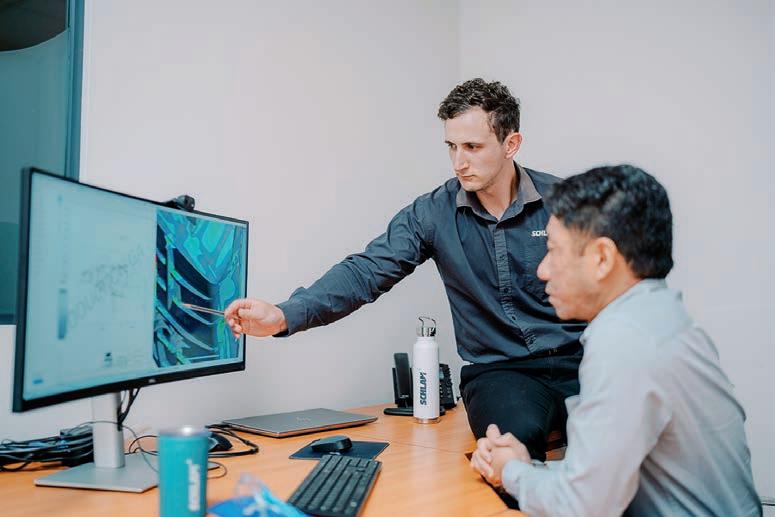
Used predominantly in large-scale mining operations like coal, iron ore, gold and copper mines, ultraclass haul trucks are essential to maximising productivity and reducing haulage costs and are becoming increasingly sophisticated through the application of automation and digitalisation technologies.
The advanced engineering of Hercules Ultra truck beds feature high-strength steel and thicker wear materials in high-impact zones, while maintaining lightness in structural areas.
collaboration, we can help mines minimise downtime and optimise the performance of our products.”
Schlam’s complete product lifecycle services provide support from commissioning to decommissioning and recycling. This includes maintenance parts, refurbishments and rebuilds for extending operational life and diagnostics monitoring for predictive maintenance planning.
Refurbishments of truck beds have been undertaken in the Hunter region over the past five years.
In August, the new facility in Muswellbrook started assembling Hercules mining truck beds, including the Ultra models, for delivery to mines in NSW.
with highly advanced manufacturing processes and technologies in line with an internationally certified quality management system, with a plan of building a 30-person team to assemble and manufacture loading attachments designed for up to 600-tonne excavators.
Schlam believes expansion into NSW builds on its success in Western Australia and internationally, where the uptake of Hercules mining truck beds and Barracuda mining buckets continues to rise in the Americas, Africa and eastern Europe.
The Muswellbrook facility also signals Schlam’s continued investment in local capability and commitment to driving productivity across the Australian mining industry. AM
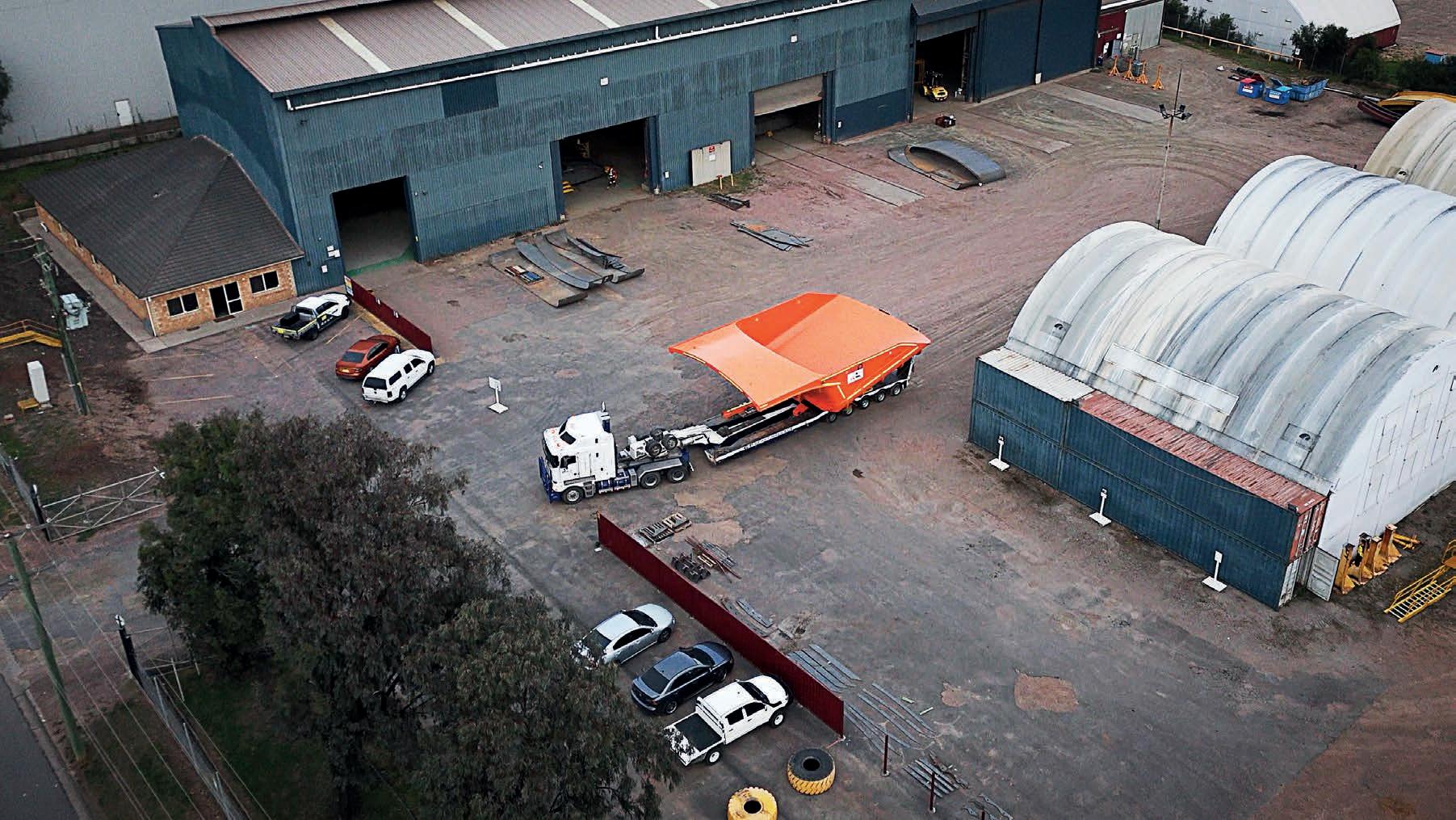









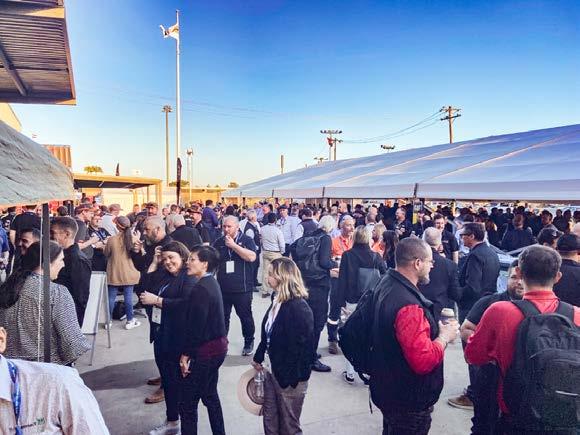
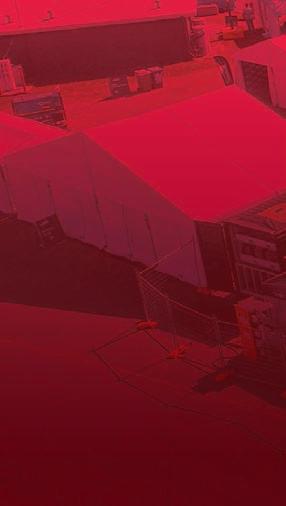
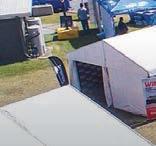






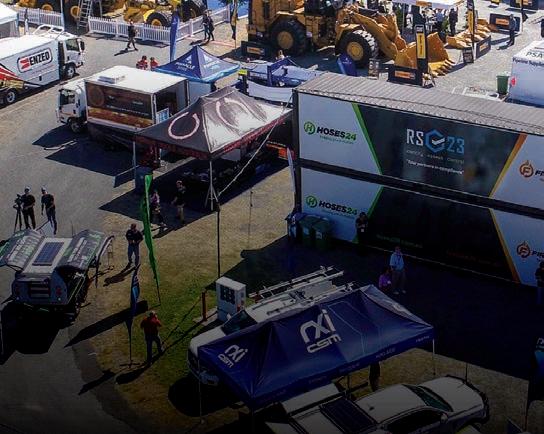








Mining is an industry built in large part on grit, tradition and endurance, qualities that have shaped generations of workers and driven the sector’s ongoing success.
Yet, in an industry so often rooted in doing things “the way they have always been done”, there’s a danger that experience can harden into inertia. Processes that once defined efficiency can, over time, become barriers to progress. As pressures mount, from safety expectations to environmental demands and operating margins, rethinking how to work underground could be a key to greater outcomes.
As far back as 2020, there were murmurs of embracing and accelerating the use of technology and, where possible, encouraging remote work.
KPMG’s ‘Establishing a new mining workforce’ report did just that, leaning on the COVID pandemic as an opportunity to take stock of an adaptable and flexible workforce and foster a greater push towards even more robust health and safety initiatives.
“Technologies can augment tasks and offer alternative ways to deliver work remotely, introducing new skills and capabilities into the workforce,” the report stated. “These emerging technologies mean that the sector needs to look beyond solely transforming whole roles and instead reimagine all roles by transforming parts of them.
“Consider that some elements of a role could be done remotely, could be automated or need to be done on-site, therefore resplicing what a particular role might be, and re-joining the capabilities with a consideration of how the capability can be delivered to create new roles.”
While at the time this may have been considered something of a radical change in how work is done on a mine site, finding ways to increase output while decreasing risk is now commonplace.
For companies like Brokk, daring to challenge convention isn’t a risk but a responsibility. With more than five decades of innovation under its belt, Brokk has become synonymous with solving problems others may have considered unsolvable. Its fleet of remote-controlled electric machines is rewriting the rules of mining operations.
By taking on the heavy lifting, breaking, drilling and loading in hazardous conditions that was once left to human hands, Brokk’s robotic solutions are helping miners around the world evolve while also keeping them safe.
“The ultimate goal is zero entry into hazardous areas. If we can help miners achieve that, that’s where we want to provide solutions,” Brokk Australia managing director Will Visser told Australian Mining. “Every product innovation we make at Brokk is driven by the desire to remove people from danger and replace exposure with precision.
“Mining is an industry proud of its traditions, and understandably so, but that also means it can be slow to adopt new innovations. There’s often a ‘first to be second’ mindset.
“The irony is the greatest risk lies in doing things the way they’ve always been done. The risk to human life is still higher than it needs to be.”
“Brokk’s role isn’t to replace what works; it’s to help mines transition into safer, more efficient ways of working.”
The company has become known as a problem-solver in the various industries it serves, with its robots able to expertly complete a range of tasks, from rock breaking to drilling and splitting, to name a few.
With a wide variety of machine sizes – and attachments to suit – Brokk has the answer to most mining-related conundrums with versatile, remote, radio-controlled solutions that offer stability and durability.
This helps to ensure humans don’t need to go where danger could lie – not only keeping workforces safe but also helping create solutions to problems that can’t otherwise be solved.
“Brokk’s remote-controlled electric machines are compact but incredibly powerful,” Visser said. “They can climb 30° inclines, reach further than any comparable machine, and deliver true zero-entry safety without compromising productivity.
“One Brokk can do the work of several machines, breaking rock on
the grizzly, clearing waste or even vacuuming under conveyors. Its versatility means mines can service multiple areas without needing separate units.”

need to be. Across all weight classes, Brokk machines provide exceptional versatility, enabling mines to choose the right size and reach for any task while maintaining the same core advantage of efficiency without compromise.
When incorporated with a wide range of attachments that even Inspector Gadget would be proud of,
Grecian Magnesite in Greece has leveraged Brokk’s compact electric machines to overcome many challenges familiar on Australian mining – from underground gold and base metals to selective mining, development and rehabilitation projects.


According to Grecian Magnesite underground manager George Boumas, the operation has not only improved safety and cut emissions but also dramatically lowered processing costs by removing waste rock at the face before it reaches the mill.
“I would be as bold as to say every mine in Australia needs a Brokk on hand,” Visser said. “It’s not a matter of if something happens underground, it’s when. Blockages, oversize rock, breakdowns, they’re inevitable. A Brokk gives you the capability to respond immediately, keeping people safe and production moving.
“When an unforeseen event occurs, you don’t have time to wait; you need a solution that’s ready to go.
“When something unexpected happens underground, a Brokk is your insurance policy. It can go where people
can’t, handle the tough jobs safely, and get production moving again. There’s hardly a spot in a mine it can’t reach.”
The proof is in the pudding. Not only does Brokk have more than 50 years’ experience, with its equipment being used on projects in more than 100 countries worldwide, but it has proven track record when it comes to changing how mine operations work.
Progress in mining begins with the courage to change and challenge the long-established ‘normal way’ of doing things, and Brokk is proving just how powerful that can be. AM

Managing fluid and lubricant specifications across multiple suppliers has long been a logistical challenge for Australian mine sites.
This is particularly the case when equipment manufacturers and fluid providers operate independently, but a new partnership between two market heavyweights is addressing the issue directly.
TotalEnergies Marketing Australia and Hauhinco Mining Technology (HBT) have combined forces to create a new option for mining operations in Australia.
First announced at the Australian 2024 Longwall Conference, the collaboration positions the two companies as a single-source provider; HBT supplies advanced mining equipment, while TotalEnergies delivers the specialised fluids and lubricants required to keep that machinery operational.
The collaboration addresses a familiar industry challenge: ensuring that specialised mining equipment operates with fluids and lubricants specifically engineered for its design parameters. While mines have traditionally sourced these products separately, the TotalEnergies–HBT model integrates them under a unified technical support structure.
HBT provides the machinery for roadway development and underground operations, while TotalEnergies supplies the range of fluids required, from longwall hydraulic fluids to gear oils, with both companies sharing technical responsibility for performance outcomes.
TotalEnergies technical specialist and mining manager for Asia-Pacific and the Middle East Pierre-Marie Maurice said the partnership allows the companies to leverage their combined expertise when working with mining clients.
TOTALENERGIES HAS CREATED A SYNTHETIC GEAR AND HYDRAULIC OIL FOR HBT’S RANGE OF CONTROLLED START TRANSMISSION GEAR UNITS.
“This collaboration represents a significant step in how we support underground mining operations in Australia,” he said. “When you have the equipment manufacturer and the fluid provider working in alignment, you eliminate the ambiguity around performance specifications and maintenance protocols.
“Our clients gain access to products that have been tested specifically for HBT equipment, backed by technical support from both organisations.”
The arrangement extends beyond HBT equipment, with TotalEnergies’ product range available for other machinery operating on the same sites.
Central to the product range now available in Australia is HBT Corsave 330, a high-water-content hydraulic fluid designed specifically for longwall systems. The fluid is formulated to address the performance challenges common in underground mining, namely corrosion protection, stability in variable water conditions and fire resistance.
Maurice said the product has undergone testing with water samples from Australian mine sites to ensure compatibility with local conditions.
“We’ve tested Corsave 330 with different mine water types found in Australian coalfields to verify its stability and performance characteristics,” he said. “The fluid needs to maintain its protective properties regardless of water hardness or mineral content variations. That testing process was essential before we could confidently offer this product to Australian operations.”
The fluid is approved under the relevant HBT standard and offers high corrosion protection, biodegradability, and a formulation free of formaldehyde and mineral oil. The product is available in bulk and packaged forms for delivery to Australian sites.

Filtration performance is another factor in the fluid’s design. Corsave 330 is engineered to maintain filtration speed even in hard-water conditions, reducing the frequency of filter changes and associated maintenance downtime – a consideration in continuous longwall operations where hydraulic system reliability directly affects production.
Alongside the longwall hydraulic fluid, the partnership has introduced Dynatrans WS 75W-90, a synthetic gear and hydraulic oil designed for use in HBT’s controlled start transmission (CST) gear units, including the CST 45 and CST 65 models. The product is formulated on polyalphaolefin base fluids, which enable extended drain intervals compared to conventional mineral oils.
The oil has been developed specifically for combined hydraulic and gear systems that incorporate wet brakes, a configuration used in CST units. Its additive package provides anti-wear protection, corrosion resistance, and prevents foaming and stick-slip phenomena that can affect gear performance and operational smoothness.
For mining operations, the extended service intervals translate directly to reduced maintenance scheduling and associated costs. Fewer oil changes mean less downtime for equipment service and reduced consumption of consumables.
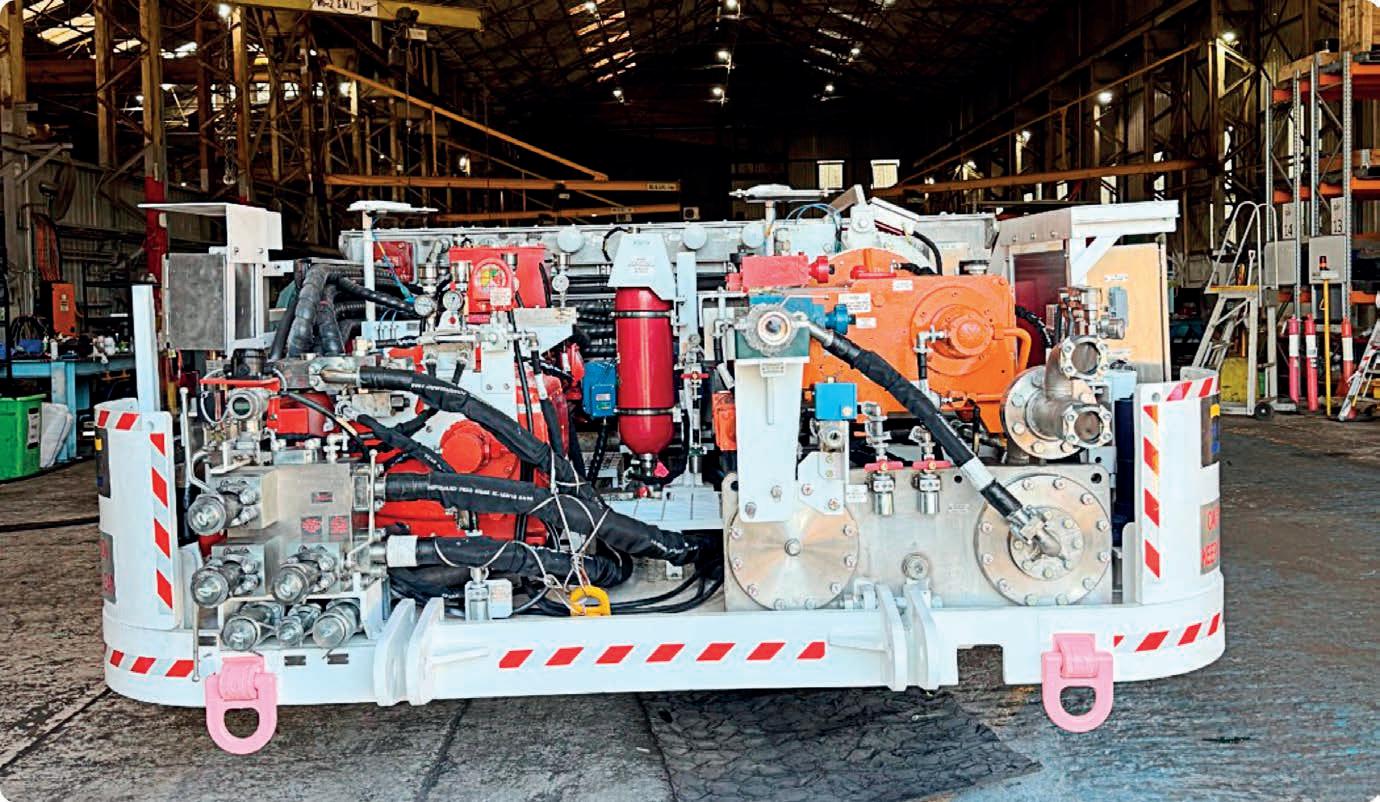
The partnership also provides access to TotalEnergies’ range of synthetic and mineral lubricants and greases for non-HBT equipment on mine sites, supporting the single-source approach that underpins the collaboration.
The arrangement also includes access to predictive maintenance analytics and technical services, with both companies providing support backed by original equipment manufacturer (OEM) knowledge for HBT machinery and TotalEnergies’ expertise in fluid performance optimisation.
The partnership’s value proposition extends beyond product supply to encompass technical support and maintenance optimisation. With
HBT providing equipment expertise and TotalEnergies offering fluid performance knowledge, mining operations gain access to combined technical resources when addressing operational issues or planning maintenance schedules.
ENSURING MINING EQUIPMENT OPERATES WITH ENGINEERED FLUIDS AND LUBRICANTS IS AN INDUSTRY CHALLENGE

Maurice said TotalEnergies is committed to providing ongoing technical support to Australian mining operations using the products.
“We’re not simply supplying fluids and lubricants; we’re providing technical partnership,” he said.
“Our team works with mine sites to optimise fluid performance, troubleshoot issues, and ensure that products are delivering the expected results in their specific operating conditions.”
The collaboration reflects a broader industry trend toward integrated solutions that combine equipment and consumables under unified technical support structures.
As mining operations face ongoing pressure to maximise equipment uptime while managing maintenance costs, partnerships that simplify supply chains and provide coordinated technical expertise are likely to gain traction.
For the Australian underground mining sector, the availability of HBT equipment paired with purpose-designed fluids and lubricants from TotalEnergies offers an important alternative to traditional multi-supplier arrangements. AM

MCLANAHAN SHOWS THAT A SMALL SOLUTION IS SOMETIMES ALL IT TAKES TO CHANGE THE WAY AN INDUSTRY WORKS.
In an industry as complex as mining, even the smallest innovations can save millions.
Whether it’s cutting downtime or reducing the footprint of tailings facilities, new solutions are often redefining what efficiency and responsibility look like.
McLanahan is continuing to help the industry with its new patentspending QUICKCHANGE filter cloth system, and its drive to tackle one of mining’s toughest long-term challenges: tailings management.
Anyone who has worked with filter presses will likely say that changing filter cloths has always been a headache. With a crane needed to lift cloths weighing little more than 2.25kg, the process is slow, awkward and potentially unsafe.
Workers have to clamber onto machines or climb inside them, taking 20 minutes or more just to swap out a single cloth.
Multiply that by hundreds of plates, and the downtime adds up fast.
The QUICKCHANGE system has turned that problem on its head with a new design that uses a slot-and-slide mechanism. McLanahan executive vice president of sales and business development Corey Jenson described the new system as a complete rethink of the process.
“The QUICKCHANGE is basically completely reimagining how you change the filter cloth,” he said.
“You don’t need cranes, you don’t need any special lifting equipment, and you can change the filter cloth in less than a minute without getting inside or on top of the filter press.”
The impact is immediate. While exhibiting at recent trade shows, McLanahan has found visitors who had spent years battling with filter presses were able to successfully swap cloths in less than a minute on their very first attempt. Some competitive souls have managed the change in just 13 seconds.
“Meeting anybody who’s had a filter press with 200 plates on a machine, and each one takes 20 minutes to change, they walk by the booth and see this changing in less than a minute, they were stopping in their tracks,” Jenson said.
The design also makes inspections significantly easier, reducing the risk of plate damage when cloths are left too long. Operators can even replace one side of the cloth if it’s damaged, instead of discarding both.
With reinforced wear areas, McLanahan said the system extends cloth life by up to 50 per cent, driving down costs and waste.
A shorter tail
For all the excitement around QUICKCHANGE, McLanahan’s focus stretches beyond equipment efficiency to one of mining’s greatest responsibilities: what happens to the material left behind.
Tailings have historically been stored in vast ponds or dams that can stretch for kilometres.
“There’s increasing social expectation for how we responsibly deal with, manage, store, reprocess and reuse tailings,” McLanahan director of global process engineering Scott O’Brien said.
“It’s a risk on the balance sheet. Suddenly, it’s got an economic implication. So can we reduce that risk? Can we do that better, more efficiently, more effectively for the environment?”
The answer lies in dewatering. By removing water from tailings, waste can be turned into a more stable material that can be stacked, rather than left as slurry.
McLanahan’s thickeners and filter presses are designed to make this possible, and each step along the way squeeze out more water, creating a smaller footprint and a safer storage solution.
Dry stacking is also gaining ground. Unlike tailings ponds, dry stacks minimise water risk and reduce land requirements. And in especially vast places like Western Australia, that can
translate into significant cost savings on lease fees.
Water scarcity adds another layer of urgency. Mines increasingly compete with agriculture and communities for limited supplies. The ability to recover and reuse water from tailings gives miners a social licence advantage and can even dictate the size of a project.
“The more efficiently you can use it, the better you can recover it, the more times you can reuse it,” O’Brien said. “That has an influence on permits and on how much ore you can even process.”
The shift comes at a pivotal time. The world is demanding more copper, lithium, graphite and rare earths to power the energy transition, but it is also demanding higher environmental standards.
“To implement a greener energy environment needs a lot of mining,” O’Brien said. “But if you don’t manage tailings, you won’t be mining at all.”
McLanahan’s recent innovation shows how clever engineering and long-term thinking can reshape an industry often accused of being slow to change.
The QUICKCHANGE system makes filter cloth maintenance faster, safer and cheaper, while the company’s work in tailings management reflects a broader recognition that mining’s future depends on solving its waste problem. AM

With tanks so essential mineral processing, it’s imperative they are kept at optimum efficiency to ensure a continued stream of high throughput – but with that process comes the build-up of sediment, mud and other residue over time.
“A typical steel plate tank that receives a high throughput can accumulate up to 6m of solids. On top of that, water is generally quite turbid so you can’t see what you’re dealing with, especially when it can be a clay-like, or even rocklike, consistency,” Dredge Robotics chief executive officer Anthony Old told Australian Mining
That’s why maintaining process tanks is such a critical component of mining operations. While this process is traditionally conducted via scheduled shutdowns to conduct inspections, Dredge Robotics has changed the game through its advanced robotic technology that can be used while tanks are in action, enhancing productivity and reducing downtime.
As it deploys its solutions across Australia, Dredge Robotics has prompted mining companies to think differently about how they operate.
With quick mobilisation and comprehensive end-to-end solutions for clients across the mining industry, Dredge Robotics helps to ensure tanks are ready for inspection

artificial intelligence (AI) to offer cleaning capabilities.
“All of our robotic fleet now have systems that are utilising AI learning chips, so we are able to use sensors in the system to harvest a lot of data and analyse it in ways we were previously unable,” Old said.
“We’ve made significant investment in upscaling all our software platforms and our electrical design to accommodate those quite high-end chips. It’s starting to pay back to be able to do projects quickly.”
Dredge Robotics can also provide solutions to meet specific problems and constantly upgrade existing technology.
“We’re in a position where we can now operate our robotic systems 24–7,” Old said. “We’re in the process of implementing that for a client right now, which is another example of how working with stakeholders and clients can create something special.”
That type of creation is achieved through a research and development (R&D) department that is dedicated to helping mining operators find a muchneeded edge.
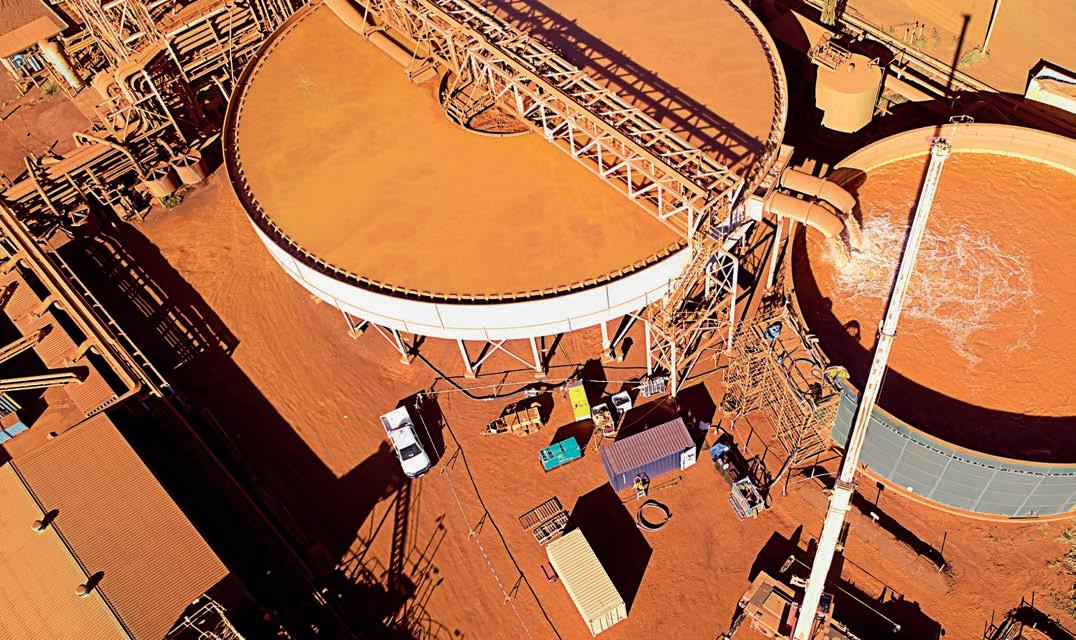
“The team is incredible in terms of getting that extra one per cent out of our systems,” Old said. “I threw the challenge to them recently to see where we can push our robotics from the learnings we have over the last few years to target specific improvements.
“We can get more mud out per day for a client, which lowers their dredging costs. We’ve looked at how we can create more utilisation space in the system so we can take on rapid increases in demand.
“We have a huge number of sensors and data that comes back from the robots and the whole system end-to-end when we operate it. They’ve zoned in on that and they’ve found about 13 different metrics that they think they can adjust and play with.”
This work has tangible improvements. Some clients, according to Dredge, are looking at 15–25 per cent increases in output and productivity.
All of this work is being noticed in the industry, with Dredge Robotics’ mission to keep assets online and functional recently recognised with the Innovative Mining Solution award at the 2025 Australian Mining Prospect Awards.
But Dredge Robotics will not be resting on its laurels.
“Just like phones and cameras, you rarely release the first version and then it’s done,” Old said. “Striving to improve to make the product better is what we can achieve with constant review.
“We very much share that mentality here and we have an enthusiastic and lateral thinking team of engineers.” AM







16-17 September 2026

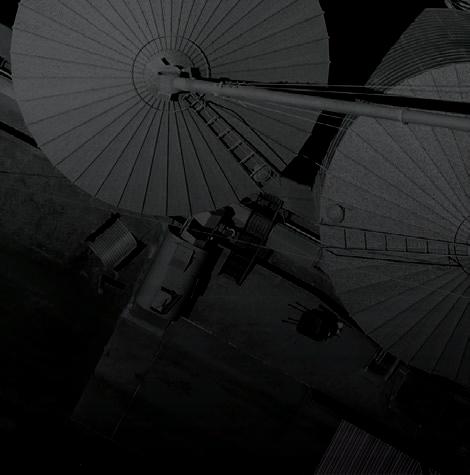
EXHIBIT IN 2026. BE SEEN. BE HEARD. BE CHOSEN.


THE ‘SKILLAROOS’ TRAINING SQUAD IS PREPARING TO SHOWCASE THE STRENGTH OF TOMORROW’S WORKFORCE AT THE WORLDSKILLS INTERNATIONAL COMPETITION IN SHANGHAI.
Mines rely on a vast range of skills and roles to operate efficiently, from welders and fitters to nurses and catering staff members. This is especially prevalent with sites using a fly-in, flyout (FIFO) model, where everyone on site has an important role to play.
With autonomous machinery becoming commonplace on so many mine sites, issues around skills shortages are being felt across. The Federal Government has identified a shortage in fitter-welders, miners and several engineering roles at the regional and state levels.
This emphasises the importance of training the next generation of operators to ensure mining operations continue for years to come, a situation to which WorldSkills Australia is no stranger.
Since 1981, WorldSkills Australia has empowered more than 100,000 young Australians to showcase their talent in hands-on careers through its regional, national and international competitions.
As industries like mining shift with new technologies and demands, the organisation is harnessing these changes to spark interest in trades and training. It’s not just about medals, but building a future-ready workforce with practical skills the country urgently needs.
The skills of the industry are being shown through its 2026 ‘Skillaroos’ training squad, whose members are looking to cement their place in Team Australia for next year’s WorldSkills International in Shanghai, the world’s largest skills competition.
One of the people fighting for a place in the squad is Bailey Lowes, a machinist from New South Wales.
Lowes has already had his fair share of accolades, having recently been named Riverina Region Apprentice of the Year at the 2025 NSW Training Awards for his work at Goldenfields Water. This follows his WorldSkills Regionals gold for fitting and silver for turning, and bronze for fitting at the 2025 National Championships.
“WorldSkills has opened a lot of doors and given me recognition within my industry. The experience shows employers that I’m dedicated to my trade and capable of performing to a high standard,” Lowes told Australian Mining
“It’s also connected me with other skilled tradespeople and mentors, which has expanded my professional network and opportunities for growth.
“Through my apprenticeship and WorldSkills, I’ve developed strong precision fitting and machining skills, along with a solid understanding of mechanical systems and problemsolving. I’ve also learnt the importance of time management, teamwork and staying calm under pressure.
“Competing at a national level has really helped me refine my attention to detail and commitment to quality work.”
The skills – and competitions – on offer from WorldSkills Australia goes beyond personal achievement and recognition, and help to ensure the workforce of the future is up to the task when it comes to emerging skills.
“Apprenticeships are how we train the next generation of tradespeople to meet the growing demand for skilled labour,” Lowes said.
“Without them, industries like mining would struggle to maintain productivity and innovation.
“These programs ensure that practical skills and knowledge are passed on to apprentices like me. I don’t think I would’ve had the same opportunities if I went to university.”
This is something Lowes, who is
“I’m driven by a desire to give back, helping new apprentices and promoting opportunities vocational education offers,” he said.
“I hope to help them push beyond their goals.”
With skills like fitting facing national shortages across Australia, WorldSkills’ work in showcasing vocational education on an international stage demonstrates the strength of the country’s emerging workforce.
The next generation of skilled professionals is preparing to potentially take on the world at the 48th WorldSkills International Competition, set to take place in Shanghai from September 22–27, 2026.
Representing the nation will be a team of 39 outstanding apprentices, trainees and early-career professionals, competing in 35 skill categories against more than 1400 peers from over 60 countries.
For industries like mining, where technical excellence and innovation are critical, the skills on display reflect the depth of capability being developed across the country.
With intensive training underway and Australian competitors already benchmarking among the best in the world, the message is clear: the nation’s future workforce is ready to meet the demands of a rapidly evolving industrial landscape. AM
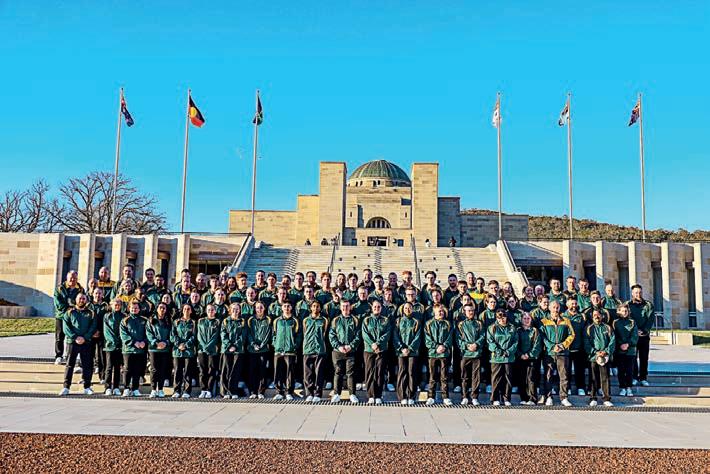

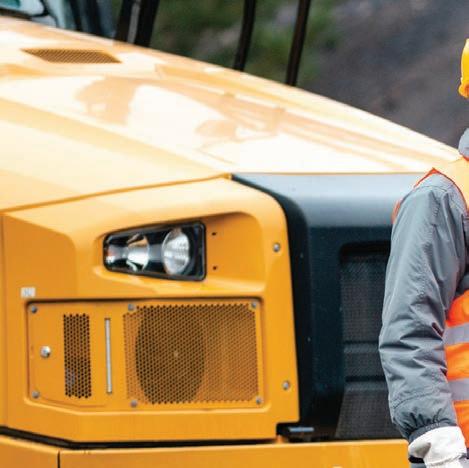



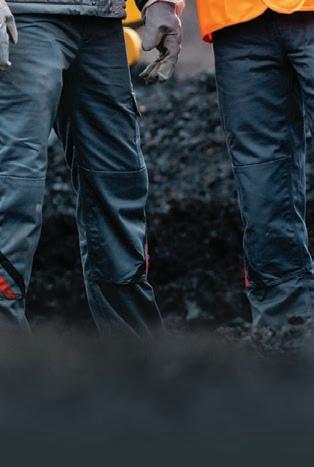






























THE RECENT WA MINING 2025 SHOWED THAT TECHNOLOGY’S TIME HAS WELL AND TRULY ARRIVED.
WThat was the clear message from WA Mining Conference & Exhibition (WA Mining) 2025, where more than 5500 delegates filled the Perth Convention and Exhibition Centre for two days of discussions, demonstrations and deal-making.
Held from October 8–9, the event showcased how miners, equipment suppliers and service providers are moving from pilot projects to fullscale implementation across the state’s operations. The sold-out exhibition floor – with more than 150 companies represented – reflected a sector intent on solving problems, not just speculating about solutions.
The opening of WA Mining 2025 set the tone for the event’s practical focus.
Western Australian Mines and Petroleum Minister David Michael reminded delegates that the state’s resources sector generated $223 billion in sales last year, describing it as not only a cornerstone of the economy but “a platform for innovation, development and global change”.
That sentiment was echoed throughout the program as speakers, exhibitors and policymakers reinforced the message that the mining industry

Live demonstrations allowed operators and engineers to engage directly with emerging technologies, assessing performance, cost and integration. Major players such as Fortescue Metals Group drew significant crowds to the conference during sessions highlighting decarbonisation and renewable integration, while mining equipment, technology and services (METS) businesses demonstrated how local expertise continues to deliver


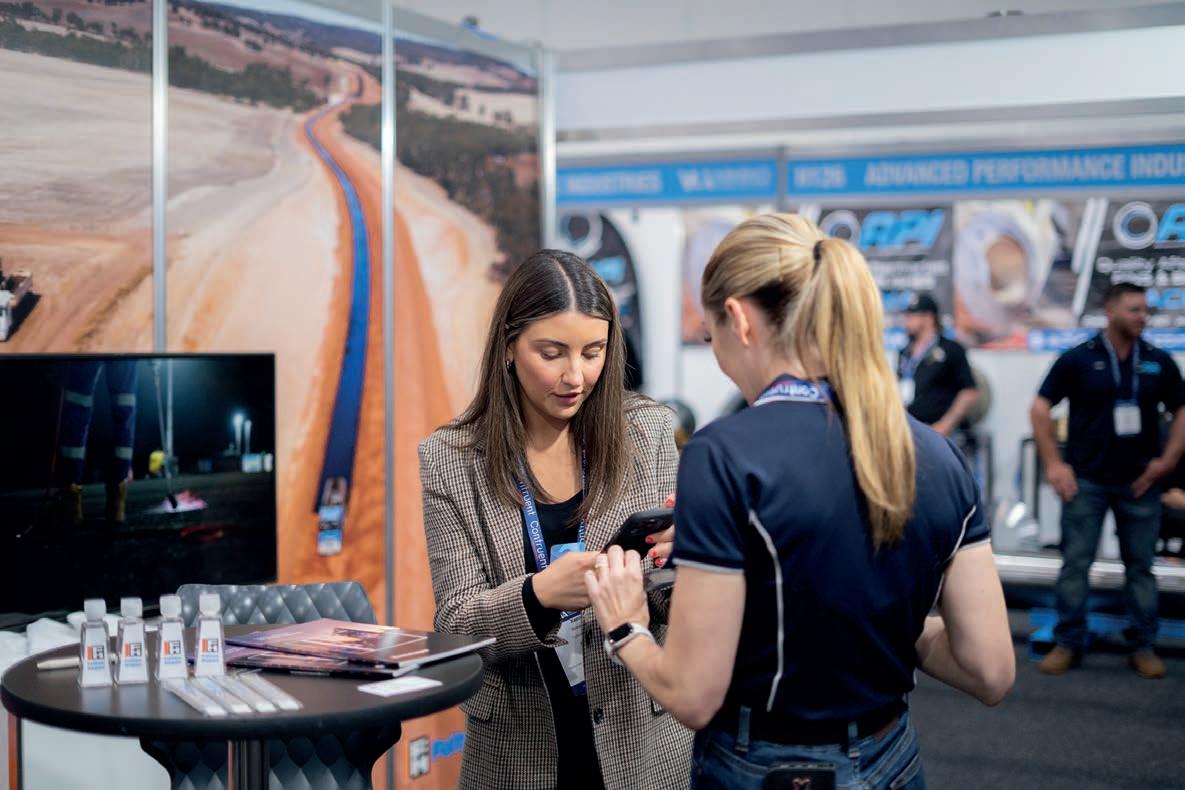
practical solutions for remote and rugged mine sites.
Another of the recurring themes at WA Mining 2025 was the recognition of the state not only as a production powerhouse but as a technology and supply-chain hub in its own right.
From global original equipment manufacturers (OEMs) to regional service providers, exhibitors emphasised that innovation is increasingly being developed and deployed locally.
The event’s structure reflected this convergence. Miners seeking solutions met face-to-face with suppliers offering ready-to-implement technologies, while policymakers and researchers observed how theory is becoming operational reality.
Beyond technology, the conference’s agenda addressed the human and procedural dimensions of modern mining.
Sessions on mental health and peer support through the Resourceful Mind program, run in collaboration with Lifeline WA and Chamber of Minerals and Energy of Western Australia (CMEWA), reinforced the importance of safety and wellbeing in building highperformance teams.
The economic outlook delivered by the CMEWA’s Anita Logiudice unpacked the regulatory and market dynamics shaping investment decisions, while other panels examined workforce development, digital literacy, and the
alignment between sustainability goals and productivity metrics.
A key theme across all sessions was the idea that operational transformation depends on the alignment of policy, people and practice.
Reflecting on the event, Prime Creative Media show director – mining events Rebecca Todesco said the results “exceeded all expectations”, noting not just record attendance but the high level of engagement across every aspect of the program.

COLLABORATION DRIVES PROGRESS
WA Mining 2025 demonstrated that the sector is now focused on execution, scaling proven technologies, strengthening supply chains, and embedding sustainability into daily operations. The event also underscored the collaborative spirit driving that progress.
Operators are forming new partnerships with METS suppliers; regulators are engaging directly with industry needs; and service providers are refining their offerings for realworld deployment.
The message from WA Mining 2025 was clear: WA’s resources industry is not waiting for the future to arrive –it’s already building it. The sector is moving decisively from innovation to implementation, from policy to practice, and from ambition to action.
And as delegates return to sites, workshops and offices across the state, they carry with them more than new ideas – they carry the tools, partnerships and momentum to make them real. AM
WA Mining 2025 reinforced that the industry’s future depends on collaboration across operators, suppliers and government. From approvals reform to joint research initiatives, the sector’s next phase of growth will be achieved through partnerships rather than competition.
TECHNOLOGY IS MOVING FROM PILOT TO PRODUCTION
Battery-electric fleets, digital control systems and advanced energy management tools featured prominently throughout the event. Many projects once considered experimental are now operating in active mines, demonstrating that decarbonisation and digitalisation are well underway.
POLICY AND SUSTAINABILITY ARE CONVERGING
Sessions led by WA Mines and Petroleum Minister David Michael and other regulators underscored a shift toward integrated policy frameworks. Environmental responsibility, cultural engagement and social inclusion are now treated as strategic enablers.
THE METS SECTOR IS STEPPING UP
More than 150 exhibitors showcased solutions that directly address operational challenges, from material handling and safety systems to electrification and AI-based asset management. The event confirmed WA’s METS community as a vital source of innovation and technical capability.
MINING REMAINS A NATIONAL CORNERSTONE
With $223 billion in sales last year and record exploration spending, WA continues to anchor Australia’s resources economy. WA Mining 2025 highlighted how the state’s leadership in technology, sustainability and production is shaping the global mining narrative.

AUSTRALIAN MINING WAS ON THE GROUND AT IMARC 2025 AS DELEGATES FROM ACROSS THE WORLD GATHERED TO DISCUSS THE TECHNOLOGIES, RELATIONSHIPS AND INVESTMENT FRAMEWORKS SHAPING MINING’S FUTURE.
he hum of conversation filled ICC Sydney on the first morning of the International Mining and Resources Conference (IMARC) 2025. Before the doors had even fully opened, news of a landmark critical minerals and rare earths deal between Australia and the US was setting the tone for what would become one of the most energetic conferences in recent memory.
From the registration queues to the packed auditoriums, that announcement dominated discussion. Yet, as the event unfolded, it became clear IMARC’s value went beyond any single headline. The event showcased a mining industry brimming with innovation, collaboration and optimism about the opportunities
For many attendees, the critical minerals agreement provided an unmistakable shot of confidence. The framework promises to deepen investment ties and accelerate the
development of projects that will supply the minerals needed for the global energy transition.
Association of Mining and Exploration Companies (AMEC) chief executive officer Warren Pearce captured the mood from the main stage.
“We got what was much better than anticipated,” Pearce told the audience. “We hoped for a highlevel agreement that would enable negotiations and hopefully lead to commercial contracts between American companies and Australian producers. What we got was that, plus commitments to investment.”
For Pearce, the agreement is a reminder of Australia’s unique geopolitical position – and the opportunities that come with it.
“We’re now starting to see strategic competition become real,” he said.
“For Australia, that means sitting between two great powers – China on one hand and the United States on the other – both major investors in Australia.
“One is our biggest trading partner; the other, our biggest defence partner. That’s a difficult road to walk, but it’s one Australia must take, and we must look for ways to capitalise on the opportunities that come from that competition.”
While the announcement created a surge of enthusiasm, the real story on the ground at IMARC was one of connection, between miners, investors and the service providers who keep the industry moving.
On the exhibition floor, companies of all sizes – from exploration juniors to global suppliers – welcomed the face-to-face interaction. The mining equipment, technology and services (METS) sector was particularly active, using the event to strengthen relationships and share technical insights.
SKF Australia business development manager Paul Dempsey said IMARC continues to be an invaluable


opportunity to engage directly with the people who use the company’s products.
“We’ve had some really good discussions with both existing and potential clients,” Dempsey told Australian Mining. “For us, attending IMARC is important because it brings us closer to the miners – the end users of our products – as well as suppliers and OEMs [original equipment manufacturers].
“It enables us to have those conversations about how we can do business together and helps us understand what we need to do to work with them.”
That collaborative mindset was echoed across the show floor. With topics like decarbonisation, digitalisation and operational resilience dominating conversations, service providers came ready to demonstrate how their solutions could support mining’s evolving needs.
AVEVA global industry principal for mining, metals and minerals Glenn Kerkhoff said the conference was a barometer for where the sector is headed.
“The global focus on critical minerals is putting new pressure on mining supply chains,” Kerkhoff said. “But it’s not just about producing more tonnes; it’s about reducing cost, reducing risk and building resilience. That starts with maximising equipment and plant performance.


filled the exhibition halls, making this year’s event one of the most internationally diverse yet.
“At IMARC 2025, there’s a strong focus on how digitalisation and AI [artificial intelligence] can increase reliability, efficiency and output from existing production assets. This is at the core of AVEVA’s business, and it’s where we continue to invest and grow.”
While Australia’s position in the critical minerals story was a major talking point, IMARC 2025 was unmistakably global in flavour. Delegations from Canada, Germany, East Timor, Saudi Arabia and the US
For Soledad Campos de Parry, Senior Trade and Investment Commissioner of Peru to Australia and representative of PROMPERÚ, the event provided a valuable opportunity for her country’s mining sector.
“We consider IMARC a great platform to present what we are doing in mining, and it gives us fantastic exposure to mining companies, as well as the many mining services businesses that are here,” Campos de Parry told Australian Mining on the show floor.
Such perspectives highlight the increasingly interconnected nature of mining. Whether through trade, technology or shared sustainability goals, the conversations at IMARC reflected a global industry moving together toward a lower-carbon, digitally connected future.
As the event progressed, delegates packed technical sessions on automation, energy storage, and workforce innovation. Start-ups showcased new ways to extract and process minerals more efficiently. Established miners shared roadmaps to electrify fleets and reduce emissions intensity.
The optimism was underpinned by pragmatism. Attendees recognised the challenges of global competition, capital constraints and community expectations, as well as the opportunities that come from innovation and collaboration.
Supported by the critical minerals announcement and the connections built across the conference, IMARC 2025 reflected the sector’s shared direction. Mining’s future will be shaped not only by the commodities it produces but by the partnerships and technologies that make production possible. If IMARC 2025 is any indication, Australia is ready to lead that future. AM

FOLLOWING A RECORD-BREAKING 2025, THE PNG EXPO IS SET TO RETURN NEXT YEAR WITH ENHANCED FEATURES AND AN EVEN WIDER SHOWCASE OF SOLUTIONS.
Australia’s closest neighbour is a celebrated centre for mining and exploration, with its own opportunities and challenges. Papua New Guinea’s (PNG) most anticipated mining conference is back in 2026 and set to shine a spotlight on those unique characteristics.
Following a record-breaking 2025 event that drew significant crowds, the PNG Industrial and Mining Resources Exhibition and Conference (PNG Expo) returns to Port Moresby from July 1–2, 2026.
The Stanley Hotel will once again transform into the heart of PNG’s mining community, a dynamic hub where innovation meets opportunity, where industry veterans share insights with emerging leaders, and where the future of PNG’s resources sector takes shape through meaningful connections and collaborative solutions.
PNG Expo 2026 represents a deliberate evolution, designed to match the growing momentum across the country’s unique mining sector. With enhanced features, expanded opportunities, and a renewed focus on delivering tangible value to every participant, the 2026 edition promises to set new benchmarks.
New
With such strong foundations, PNG Expo 2026 is taking a deliberate step forward through several key enhancements designed to maximise value for exhibitors and attendees. Central to these improvements is a redesigned exhibition floorplan that is set to create more opportunities for meaningful engagement. Improved traffic flow will ensure delegates can navigate the exhibition more efficiently, while increased exposure opportunities give exhibitors better visibility and more strategic positioning options.
The new design incorporates dedicated showcase areas that encourage deeper product demonstrations and technical discussions, creating immersive experiences that reflect the complexity of modern mining operations.
The conference program is receiving equally focused attention through collaboration with the editorial teams from PNG Mining and Australian Mining magazines.
Prime Creative Media show manager – mining events Rebecca Todesco said this collaboration helps to ensure the 2026 content streams are highly relevant but anticipate the challenges and opportunities that will define the sector’s future in PNG.
Fuel and renewable energy solutions will feature prominently, addressing cost pressures and sustainability mandates that are reshaping operational strategies. Community relations and the significance of community development agreements will also receive attention.
In the same way, workplace safety remains a sector priority, and the conference will explore innovative approaches to building and maintaining safer workspaces in challenging environments.
“The aim is to bring together individuals with shared interests or expertise to share their knowledge about the industry and potentially collaborate on specific topics or projects,” Todesco said. “We’re building a conference program that will help our delegates stay informed and aware of industry advancements.”
PNG Expo 2026 is doubling down on networking as a core event experience. Building on the positive feedback about relationship-building opportunities in 2025, the enhanced format creates more structured and informal networking touchpoints across both days.
“The launch of our 2026 event marks a new phase for PNG Expo, one we’re especially proud to lead,” Todesco said.
FROM A REDESIGNED FLOORPLAN TO STRONGER CONTENT STREAMS AND BIGGER NETWORKING OPPORTUNITIES, EVERYTHING WE’RE DOING IS DESIGNED TO ADD VALUE FOR BOTH EXHIBITORS AND ATTENDEES.”
“From a redesigned floorplan to stronger content streams and bigger networking opportunities, everything we’re doing is designed to add value for both exhibitors and attendees.”
As the calendar turns toward a new year, PNG’s mining sector is experiencing a period of renewed optimism and activity, ideally positioning the July 2026 event to capture and amplify this momentum.
Current market conditions are creating compelling opportunities across multiple commodities, with global demand for critical minerals and precious metals driving fresh interest in PNG’s diverse resource base.
The growing sophistication of PNG’s mining ecosystem is particularly evident in the strengthening connections between the PNG and

is supported by improving infrastructure and regulatory frameworks that are making PNG an increasingly attractive destination for mining investment and innovation.
The recent focus on greater local content requirements and
community engagement is driving demand for solutions that can operate effectively within the Pacific nation’s unique social and environmental context.
PNG Expo 2026 arrives at the right moment to serve as a catalyst for these developments. AM
PNG Expo 2026 will be held at the Stanley Hotel in Port Moresby from July 1–2, 2026. To be a part of the extensive exhibition and connect with local mining and industrial buyers, visit pngexpo.com/getinvolved/
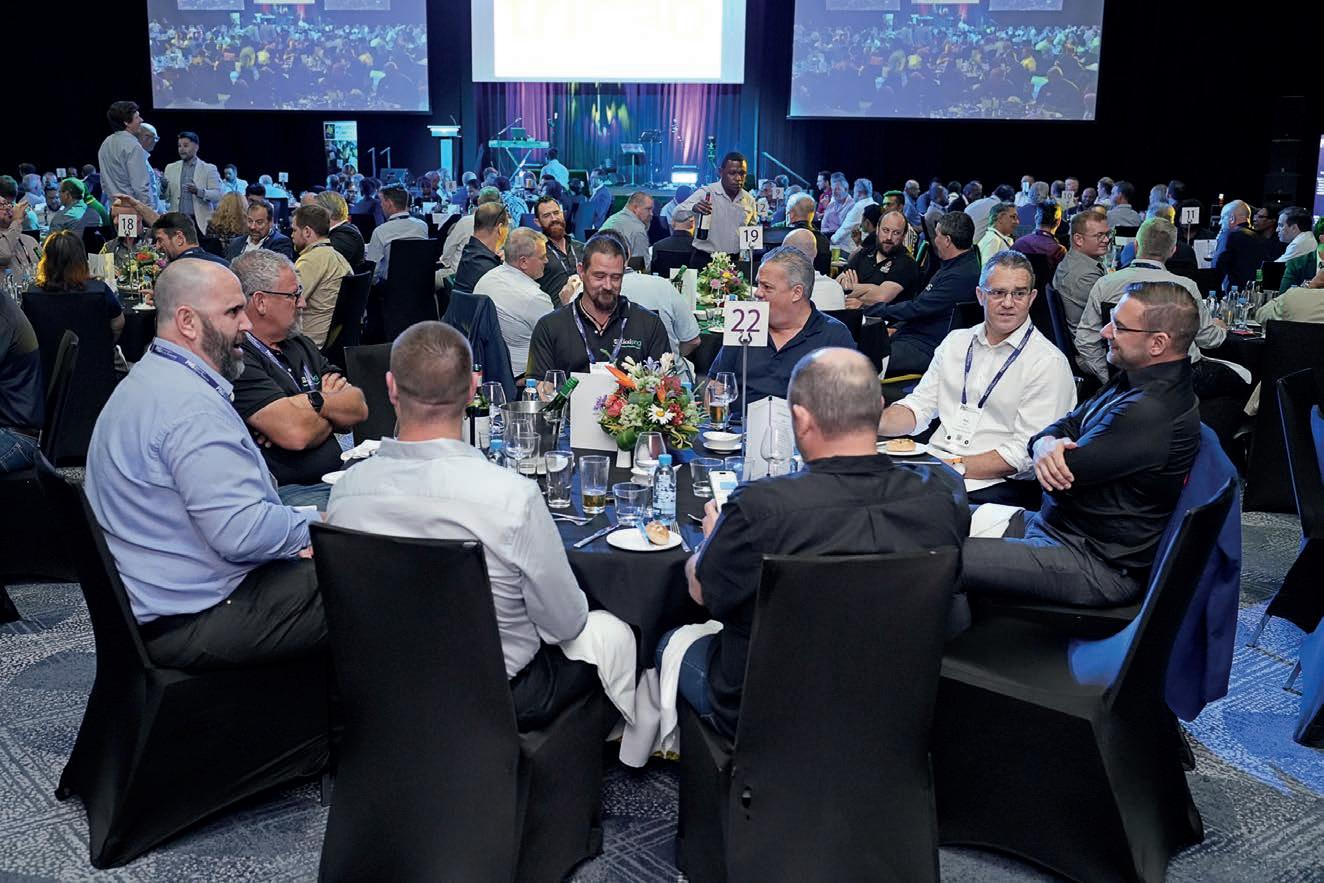

FROM MINING AND AGRICULTURE TO PORTS AND CONSTRUCTION, AUSTRALIA’S BULK HANDLING INDUSTRY IS VAST, DIVERSE AND VITAL, AND KEY INSIGHTS AND INNOVATIONS WILL BE SHARED AT BULK2026.
For mining and many other industries across Australia, bulk handling forms the backbone of the nation’s most critical sectors. At the heart of these operations lie the systems that keep materials moving, from conveyors, silos, and hoppers to drives, feeders and dust suppression technologies.
While these components may operate behind the scenes, they are essential to keeping supply chains flowing and the economy powered.
Whether it is iron ore moving from pit to port, grain flowing through silos or aggregates feeding into construction sites, efficient bulk handling underpins Australia’s productivity and competitiveness on the global stage. But as the scale and complexity of bulk operations grow, so too do the challenges.
Australia’s mining and export terminals, for example, are under increasing strain. Congested ports and ageing infrastructure are slowing throughput and cutting into productivity. Operators are also contending with rising energy costs, labour shortages, and stricter environmental and safety regulations.
In many operations, decades-old systems are being pushed to their limits,
requiring smart retrofits and new investment to maintain performance. At the same time, sustainability targets and emission reductions are forcing companies to rethink how they move and process materials.
Operators across Australia are turning to future-ready solutions designed to boost efficiency, reliability and safety. Automation and digital monitoring are becoming standard tools of the trade, enabling continuous condition monitoring and predictive maintenance. Advanced wear materials and smart drive systems are extending equipment life while reducing downtime.
Meanwhile, artificial intelligence (AI) and data analytics are opening new frontiers in system optimisation, helping engineers fine-tune performance across entire supply chains.
But technology alone is not enough. Industry collaboration and knowledge sharing are vital to ensure that new innovations are not just adopted but effectively integrated into real-world operations.
That is where events like the Bulk Handling Technical Conference & Expo (BULK2026) come in.
Returning from September 16–17, 2026 at the Melbourne Convention and Exhibition Centre, BULK2026 will bring together the full spectrum
of the bulk handling industry under one roof. Produced by Prime Creative Media, BULK2026 is Australia’s only dedicated exhibition and conference for bulk materials handling, a national platform to explore the latest technologies, tackle operational challenges, and connect with the leaders shaping the future of the industry.
BULK2026 will showcase technologies from pit to port that support productivity, efficiency, safety and environmental performance across the full bulk materials supply chain. It will deliver actionable insights and valuable connections for engineers, maintenance leads, site operators, procurement specialists, contractors, and academic researchers.
The BULK2026 exhibition floor will be a hub of innovation. Attendees will have the chance to see and experience the latest equipment and systems firsthand, from advanced conveyor technologies and drive systems to weighing solutions, dust suppression systems, and smart diagnostics.
Suppliers and manufacturers will be on hand to demonstrate how their products are addressing today’s operational challenges, from reducing maintenance requirements to improving throughput and environmental performance.
For engineers, maintenance managers, procurement specialists and site operators, BULK2026 offers a unique opportunity to engage directly with solution providers, compare technologies, and discuss specific project needs face-to-face.
Complementing the expo is a comprehensive technical conference, curated by the Australian Society for Bulk Solids Handling.
Delegates can expect deep dives into topics such as automation and AI, where real-world applications are improving plant efficiency and predictive maintenance. Sustainability and emissions reduction will also be key areas of focus, as the industry continues its transition toward cleaner, more efficient operations.

Workforce development will be another priority theme, as operators look to address ongoing skills shortages and prepare teams for the digital transformation of bulk handling. Practical case studies will provide insights into lessons learned from major Australian and international projects, offering examples of best practice that attendees can adapt to their own operations.
This blend of technical insight and practical application ensures participants leave with new ideas and implementable solutions for their operations.

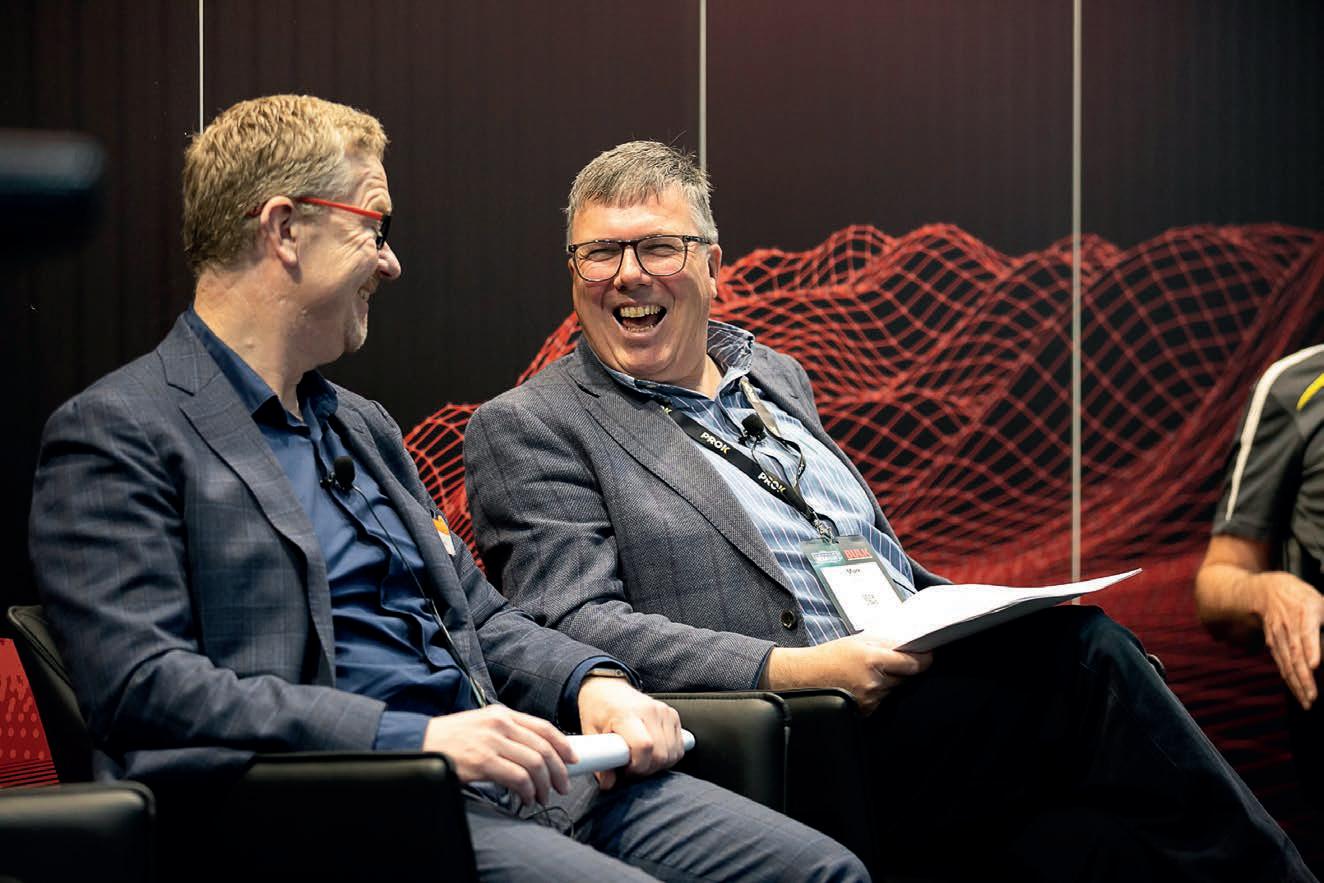
Networking is another cornerstone of BULK2026. The event will feature a series of structured and informal networking sessions, providing delegates and exhibitors with the chance to connect, collaborate and explore new business opportunities.
From on-site networking to evening receptions, the event is designed to foster meaningful discussions between suppliers, contractors, operators and researchers. These are the interactions
that often spark the partnerships that drive innovation forward long after the event ends.
Networking will be a cornerstone of BULK2026, with dedicated events to bring together key decision-makers, innovators, and solution-providers from across Australia and beyond.
These opportunities provide fertile ground for building partnerships, exploring collaborations, and discovering new business avenues.
“BULK2026 is designed to give suppliers direct access to the industry’s most influential decision-makers,” Prime Creative Media general manager events Siobhan Rocks said.
“By combining a cutting-edge technical program with a targeted trade expo, BULK2026 creates an environment where real business conversations happen – conversations that can drive efficiency, safety, and innovation across the industry.”
For mining professionals, BULK2026 presents a powerful opportunity to stay ahead of the curve.
With bulk material handling playing such a critical role in mine productivity, export capacity and sustainability outcomes, this is a must-attend event for anyone involved in the movement and management of bulk commodities. AM
For more information on BULK2026 and to register, visit bulkhandlingexpo.com.au
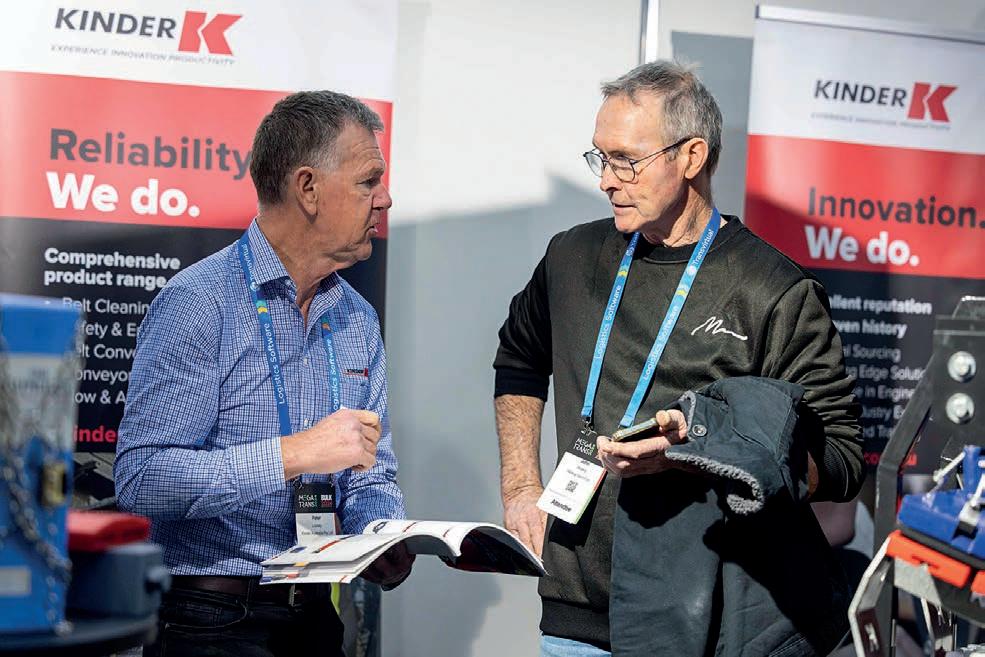
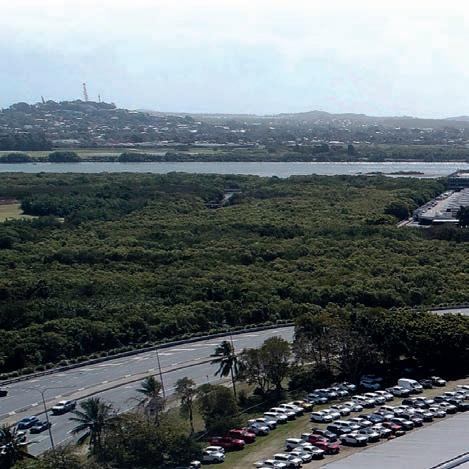

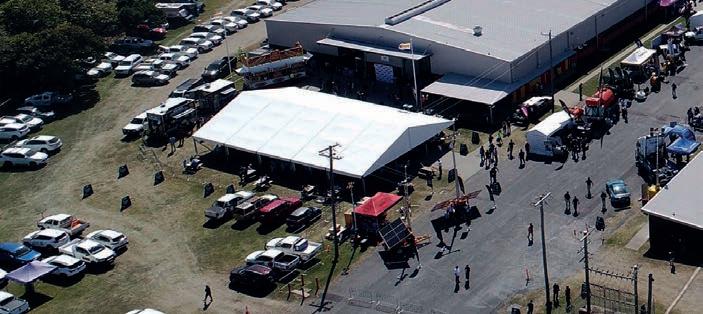


GET READY FOR LIVE TECHNOLOGY DEMONSTRATIONS, INSIGHTFUL THOUGHT LEADERSHIP, AND A CELEBRATION OF REGIONAL MINING EXCELLENCE.
With calendar set to turn over to a new year, the Queensland Mining & Engineering Exhibition (QME) 2026 is gearing up to return to Mackay as the state’s largest regional mining showcase.
Momentum for the 2026 event is building rapidly, with 75 per cent of exhibition space already sold and limited outdoor space remaining.
The strong interest in early bookings is a clear reflection the industry’s strong commitment to being part of three days of live technology demonstrations, insightful thought leadership, and a celebration of regional mining excellence.
QME 2026 will bring together hundreds of leading suppliers, with heavyweights such as Milwaukee Tools, Hitachi Construction Machinery, Fulton Hogan, Epiroc, Hastings Deering, Brooks/XCMG, and Flexco Australia already signed on for what promises to be one of the biggest editions yet.
Central to the event’s exhibition floor is the return of the highly anticipated QME Mining Pavilion, a vibrant hub where key resources companies and major contractors will showcase their latest projects, innovations and initiatives.
The Mining Pavilion offers attendees a unique opportunity to engage directly with the organisations driving Queensland’s mining future, offering insights into procurement and partnership opportunities, and helping build meaningful connections within the thriving resources community.
Next year’s event will benefit from the support of two key sponsors: Pirtek and Hitachi Construction Machinery.
Pirtek brings valuable backing to the overall event, while Hitachi Construction Machinery takes a leading role as sponsor of the QME leadership series, a critical platform for advancing thought leadership and fostering the strategic conversations that will shape the mining sector’s future.
The 2026 event also enjoys strong partnerships with the Queensland
Resources Council (QRC) and the Bowen Basin Mining Club (BBMC).
QRC, Queensland’s peak resources body, further elevates the event’s significance by highlighting its role in showcasing innovation and its contribution to Mackay’s regional economy and supply chains.
QRC chief executive officer Janette Hewson said the event highlights the resources sector as a major direct contributor to the Mackay regional economy, with significant flowon benefits to local supply chains supporting new and existing businesses.
“QME is now a major event on the Queensland resources calendar and, as the industry’s peak body, QRC is proud to be involved as the official association partner,” Hewson said. “The exhibition also takes the resources sector to the wider public and shares the innovation and world-best practices that are homegrown in Queensland.
“QRC encourages industry members to get behind this event, which is being held in the heart of one of Queensland’s powerhouse resources regions.
“I am looking forward to QRC playing a part in QME 2026, showcasing what’s best about our sector and the opportunities we have to secure a strong future for the industry as global demand continues for all of our commodities.”
Hewson will deliver a keynote address as part of the QME conference program, while QRC will also have a presence in the exhibition to engage directly with industry stakeholders.
BBMC adds further weight by holding the prestigious Queensland Mining Awards in Mackay at the same time as the exhibition, amplifying the celebration of excellence and innovation.
BBMC’s presence fosters networking and partnership opportunities that showcase Queensland’s leadership in mining equipment, technology and services (METS) innovation.
Prime Creative Media show director – mining events Rebecca Todesco said the energy around QME 2026 is already building fast, and the team is eager to see the industry come together in Mackay once again.
ATTENDEES CAN ALSO HEAD OUTSIDE FOR THE FRESH AIR AND BIG MACHINES ON DISPLAY.

“We’re incredibly excited to bring the Queensland Mining & Engineering Exhibition back to Mackay in 2026,” Todesco said.
“This event is where innovation, collaboration and opportunity come together and we’re looking forward to welcoming everyone to three days packed with innovation, learning and networking.”
With the excitement building, QME 2026 stands as the mustattend event for anyone serious about mining in Queensland. It’s where the sector’s biggest deals and boldest ideas are realised, and it all happens in the heart of Mackay, at the epicentre of the state’s mining industry. AM
For more information about exhibiting

EXPERIENCE WITH
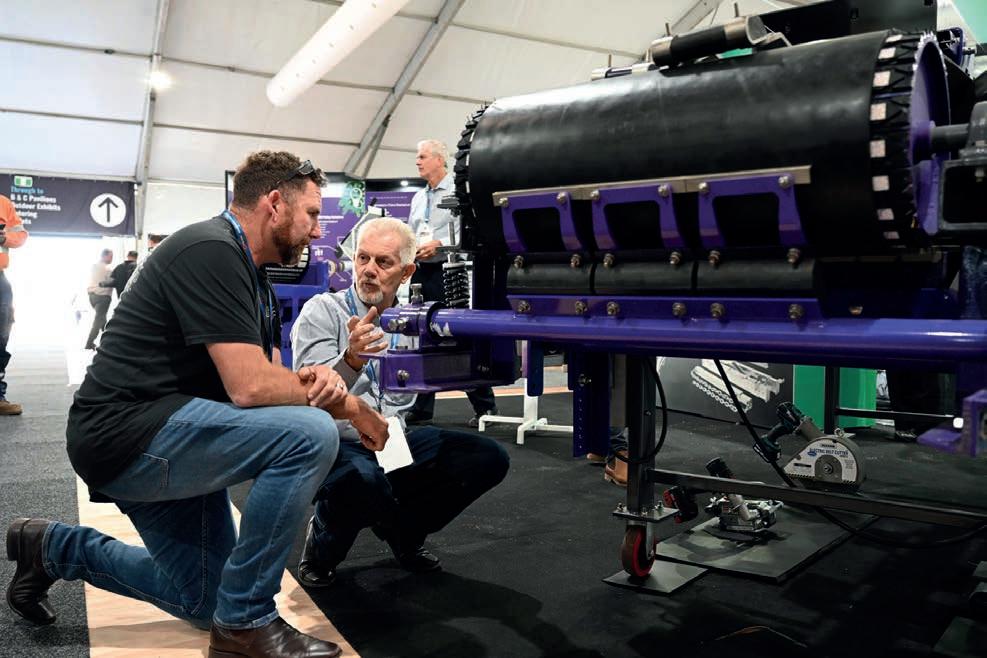
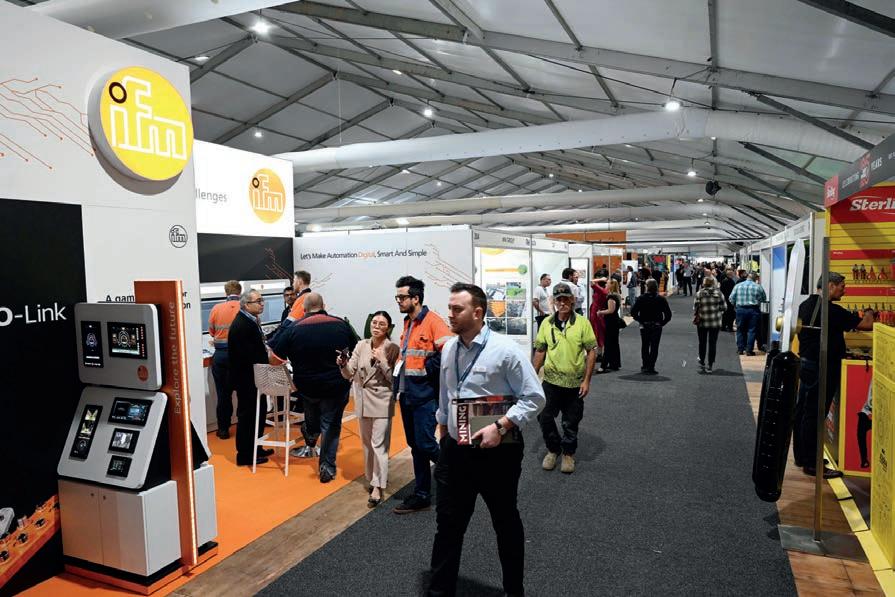
WITH ACCESS TO A WIDE RANGE OF EXHIBITORS, QME ATTENDEES GET A GREAT SELECTION OF THE VERY BEST ON OFFER IN THE MINING INDUSTRY.
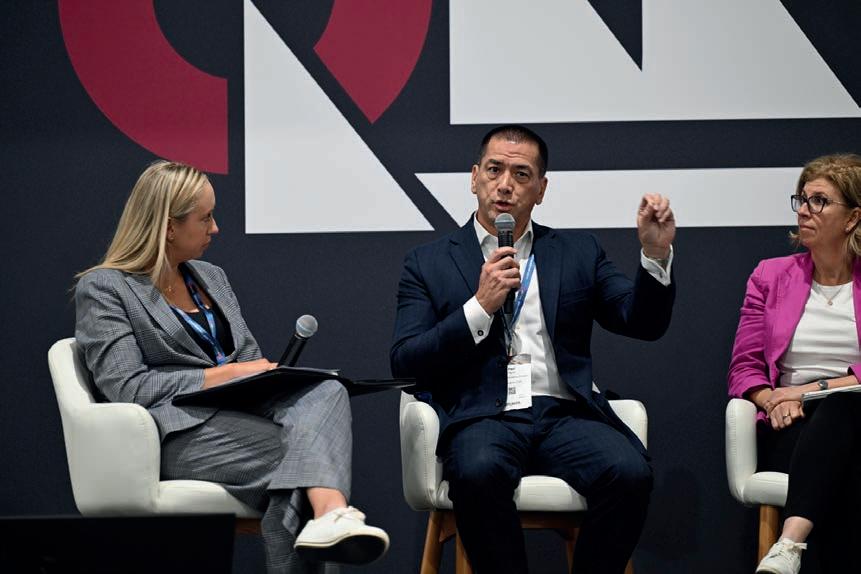
MORE AND MORE PLANTS ARE LOOKING FOR SMARTER SOLUTIONS TO POWER UNDERGROUND CONVEYOR SYSTEMS, AND SUPPORT SAFER, MORE SUSTAINABLE OPERATIONS.
Heavy industries like mining and power generation have long relied on underground conveyor systems to enable efficient bulk material handling.
According to Bonfiglioli national product manager – heavy duty products – Kris Jaryn, a growing number of plants are after smart solutions that will not only power these conveyor systems but will also support safer and more sustainable operations.
Jaryn said that, as with other heavyduty applications, the selection of a gearbox for a conveyor system is a critical consideration.
“The units require a good service factor, about 1.8 to two on motor power.
drive assemblies should not have exposed parts made of aluminium, motors should meet mine specifications, and specific requests according to the site and type of product also come into play.
Jaryn said some mines have sitespecific requirements, like special oil sight glass, stainless steel drain valves, breathers, bearings and oil temperature monitoring. Choosing a partner that can meet these requirements is key.
Tech innovations gaining favour Mines and other heavy-industry operations are faced with a host of challenges, including rising operational costs, safety legislation, labour shortages and a pressing need to reduce their environmental impact, as well as demand for increased capacity and efficiency.


overload events can be monitored and recorded without the need for someone to take these measurements in-person.
“This helps to prevent equipment damage and faults,
THE HD SERIES IS A COST-EFFICIENT SOLUTION WITH LONG SERVICE INTERVALS AND LOW MAINTENANCE COSTS.
Having developed solutions for heavyduty industries for over six decades, Bonfiglioli offers a range of solutions that are ideal for use in underground conveyor applications.
The company’s HDO bevel helical and HD (heavy duty) series gearboxes are firm favourites, renowned for their robustness, reliability, and ability to operate in extreme environments. They are available in an ATEX option for use in explosive environments.



The HD series features tough SG (spheroidal graphite) iron housing, offers high torque rating, a wide range of ratios, and varied output shaft configurations and motor mounting options. This cost-efficient solution features long service intervals and low maintenance costs.
In addition to the HD series, helical and bevel-helical units, the 300 series planetary gearboxes are also used in various conveyor applications.
When used in combination with the HDO reducers, these units offer a solution in cases demanding high torque with lower output speeds, such as feeder conveyors. Bonfiglioli’s latest 3/H catalogue lists drives with torque ratings up to 1102kN-m.
“The versatility of Bonfiglioli products is a key differentiator, making it easy for us to combine products in order to develop a solution that can achieve the customer’s required speed and torque,” Jaryn said.

In industries where safety and operational performance are nonnegotiable, it’s essential to have the support of a partner who will go the extra mile.
Bonfiglioli carries out site visits to inspect and assess the condition of gearboxes and drive assemblies. In cases where a repair is needed, the gearbox can be sent to a Bonfiglioli workshop for the necessary overhaul.
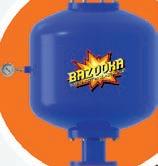


“We have dedicated fitters on the team to do repair jobs in-house, ensuring quick turnaround,” Jaryn said.
Looking ahead, Jaryn anticipates growing demand for underground conveyor systems and solutions that facilitate continuous, reliable operation and efficient bulk material handling.
“We’re proud to play a role in the success of local industries and support our customers with world-leading solutions,” he said. AM

SEW-EURODRIVE HOLDS MORE THAN ENOUGH STOCK TO ENABLE QUICK TURNAROUND TIMES.
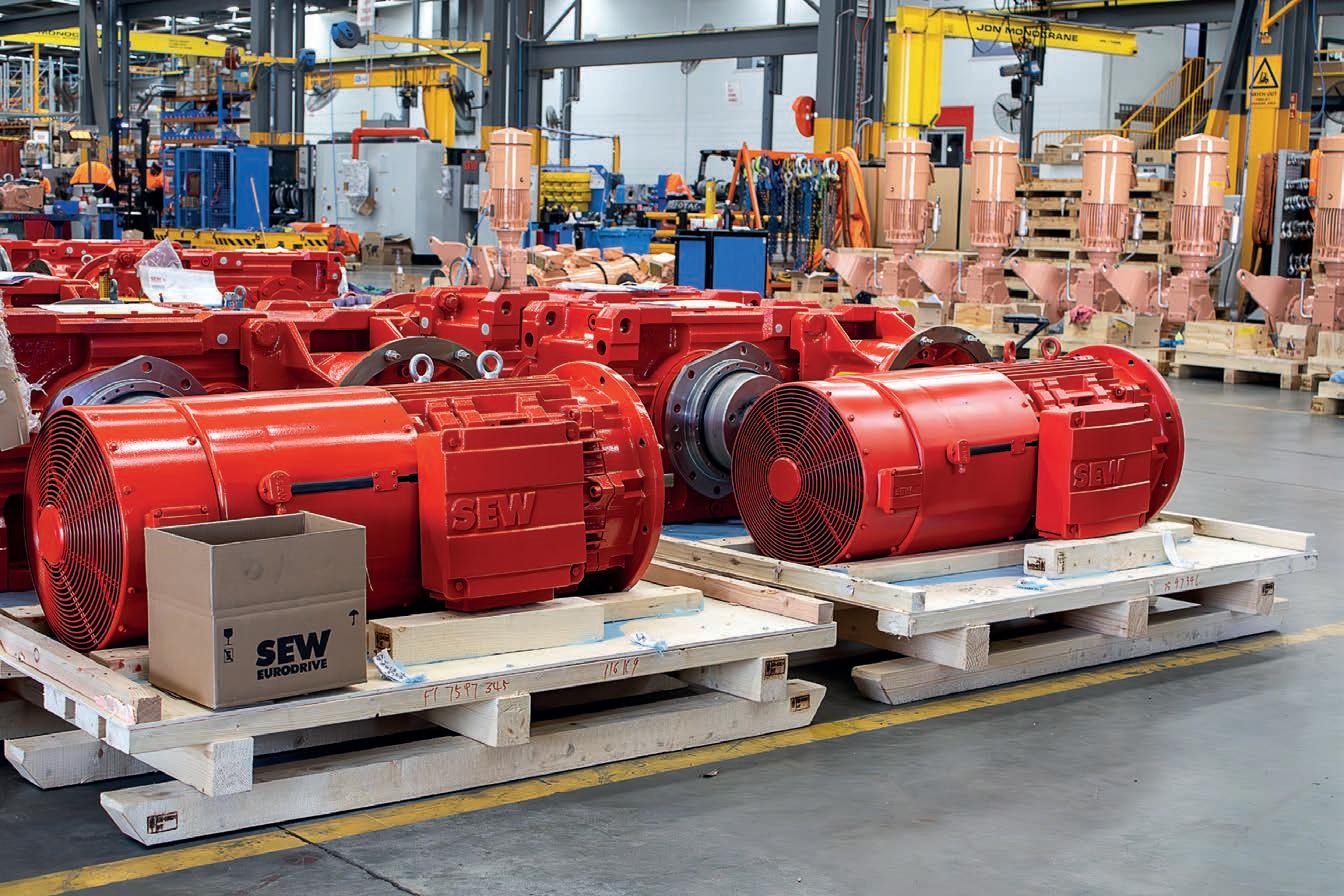
SEW-EURODRIVE IS REDEFINING WHAT LONG-TERM SUPPORT LOOKS LIKE FOR INDUSTRIAL GEAR SYSTEMS ACROSS AUSTRALIA.
When it comes to servicing industrial gear units, SEWEURODRIVE isn’t simply growing its footprint; it’s setting new standards for reliability, responsiveness and regional support. With dedicated service facilities in Mackay, Newcastle, Melbourne, Brisbane and the recently opened Wingfield site in Adelaide, the company has built a network designed around one goal: keeping industry moving.
“We’ve always been more than a product supplier,” SEW-EURODRIVE national industrial gears service manager Robert Justice said. “Our role is to guide and coordinate service at a national level, ensuring facilities across the country can meet growing demand and support customers well beyond installation.”
Each facility is equipped for heavyduty work, with large workshop floor spaces, specialised tooling, including high lifting capacity, and significant stock availability. In Melbourne alone, SEW-EURODRIVE holds more than enough stock to allows for typical spare parts turnaround in just two or three days – faster than industry average.
At the core of SEW-EURODRIVE’s service philosophy is its commitment to real-world assurance.
“Load testing is a game-changer,” Justice said.
“You can spin-test a gearbox all day, but you won’t see critical issues like bearing failure until it’s under full load.
“For customers investing hundreds of thousands into drive assemblies for remote mining or manufacturing sites, this kind of assurance before dispatch is invaluable.”
The facilities in Wingfield, Mackay, and Newcastle are now equipped with state-of-the-art load testers, including a 1MW unit in Wingfield capable of simulating torque up to 500kNm. These capabilities help to ensure customers receive tested, certified and field-ready drive assemblies before installation.
Behind the equipment lies a service philosophy shaped by nearly a century of global experience. With operations in 56 countries and more than 22,000 employees, SEW-EURODRIVE draws on a worldwide knowledge base that allows local teams to solve problems quickly and effectively.
“Any seemingly new or complicated issue has probably been solved by an SEW team member somewhere in the world before,” Justice said.
The company’s expertise is particularly visible in industries where
reliability is non-negotiable, such as mining and building materials production, where people and machinery face extreme environmental conditions.
Over the past decade, global demand for SEW’s industrial gear products has surged, and with it the need for dedicated service. Justice said part of the company’s recent expansion has been driven by an industry-wide service gap.
“We found many sites had legacy equipment from other manufacturers but limited access to reliable servicing,” he said. “So we applied the same level of support we offer our own products to third-party gearboxes.
“The market was ready for that kind of approach and the response has been overwhelmingly positive.”
SEW-EURODRIVE’s local presence is not about size alone; it’s about scale, longevity and frontline experience. The company’s investment in facilities, people and processes has allowed it to establish a complete service ecosystem that spans the lifecycle of industrial gear units – from design and assembly to installation, load testing, repair and predictive maintenance.
“The growth has been phenomenal, and it’s still just the beginning,” Justice said. “What makes me proudest, though,
is the people; the development of our staff, growing our competencies, the culture of the service teams.
“The growth tells us we’re doing well, but it’s the human side that’s most rewarding.”
Few industries test the limits of equipment like mining does. From conveyors and crushers to reclaimers, sizers and apron feeders, SEWEURODRIVE systems are deeply embedded in the everyday workings of Australian mine sites.
“A drive is not just a motor and a gearbox. It can also consist of brakes, fluid couplings, inverters, swing bases and torque arms, to name a few components,” SEW-EURODRIVE national industrial gears product manager Guido Wagner said.
“We could be supplying a drive for a greenfield or brownfield installation, whether we’re working with an OEM [original equipment manufacturer] to develop a new solution or installing a drop-in solution for existing plant or machinery.
“Either way, SEW-EURODRIVE is an expert in drive technology.”
The fact most of the company’s products are stocked and assembled locally means SEW-EURODRIVE can quickly prepare custom solutions for mining customers.
“We are in a unique position to supply almost any type of drive in the shortest possible timeframe,” Wagner said.
Excellence in collaboration Speed, however, does not come at the expense of precision. Every SEW-EURODRIVE project begins with collaboration.
“A customer will come to us specifying what they’d like to achieve in their process, whether they want to boost efficiency or change speeds,” Wagner said. “They come to us with a requirement, and we design the drive to suit.”
SEW-EURODRIVE’s multidisciplinary engineering team plays a key role in that process.
“We have a large pool of engineers who are deeply familiar with our product range,” Wagner said. “Not only can we replace ageing drives with modern, more efficient solutions, but we can also improve performance in line with a mine’s operational goals.”
SEW-EURODRIVE’s motors exceed Australia’s IE2 efficiency regulations, offering options from IE3 to IE5, a reflection of the company’s focus on energy optimisation.
In today’s mining industry, where efficiency and uptime are paramount, the company is constantly exploring new approaches to optimise what Wagner calls “the heart of the plant”.
“Mining equipment is designed for, on average, a 25-year life,” he said. “And when equipment ages, the chance of failure increases.
“You can patch up your motor or gearbox or you can go for a replacement. With a replacement, you get the latest technology, new materials, and you reset your 25-year clock; the equipment operates like new again.”
By investing in modern drive solutions, mining operations can extend plant life, improve energy performance, and reduce maintenance downtime.
Wagner shared a recent example that demonstrates SEW-EURODRIVE’s problem-solving capability.
“We were approached to replace the travel drives for a bridge reclaimer at an Australian mine site,” he said.
“The original drives required mechanical clutches to switch between operating and positioning speeds. The clutch was constantly malfunctioning due to the harsh environment, and the drives were not synchronised, meaning the reclaimer suffered from crabbing.
“SEW-EURODRIVE replaced the complete drive with an industrial gearbox and inverter-driven servo motor, eliminating the clutch entirely. The new system offered higher repositioning speeds than the original and, eight years later, the bridge reclaimer has operated with zero downtime.”
As the company continues to push the boundaries of drive technology, SEWEURODRIVE has been at the forefront of predictive maintenance through its DriveRadar solution.
“The future lies in predictive analytics, where data is continuously collected and used for a live prognosis of equipment performance,” Wagner said.
“Predictions consider all variables such as speed, temperature, operating frequency and loads, constantly adjusting when operating environments change. DriveRadar constantly
recalculates component life based on real operating conditions, giving reliability engineers accurate notifications of potential future events.”
Keeping mining moving In mining, downtime isn’t just an inconvenience – it’s incredibly costly. Every hour of lost production represents significant lost revenue.
By combining cutting-edge technology with an expanding national service network, SEW-EURODRIVE is helping operators take control of their
drive systems’ performance, reliability, and lifecycle costs.
“The efficiency opportunities in mining are enormous, especially when it comes to optimising drive systems,” Wagner said.
With its investment in local capability, load testing, predictive analytics and people, SEW-EURODRIVE is driving a new standard of industrial reliability.
For Australian miners, that means confidence that the heart of their plant will keep beating strong, wherever the next haul road leads. AM
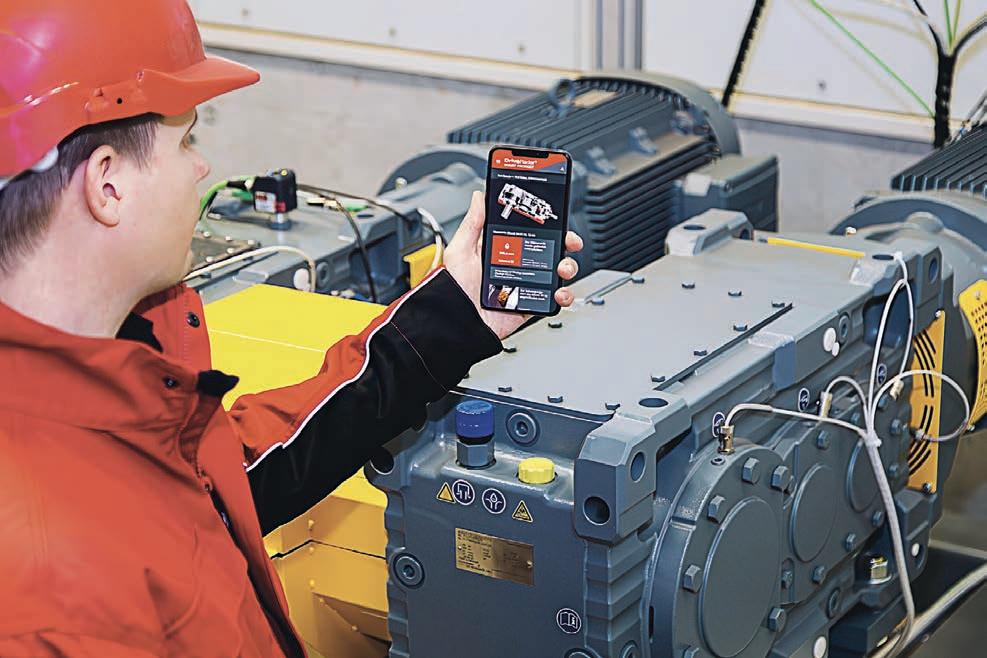
SEW-EURODRIVE HAS BEEN AT THE FOREFRONT OF PREDICTIVE MAINTENANCE THROUGH ITS DRIVERADAR SOLUTION.
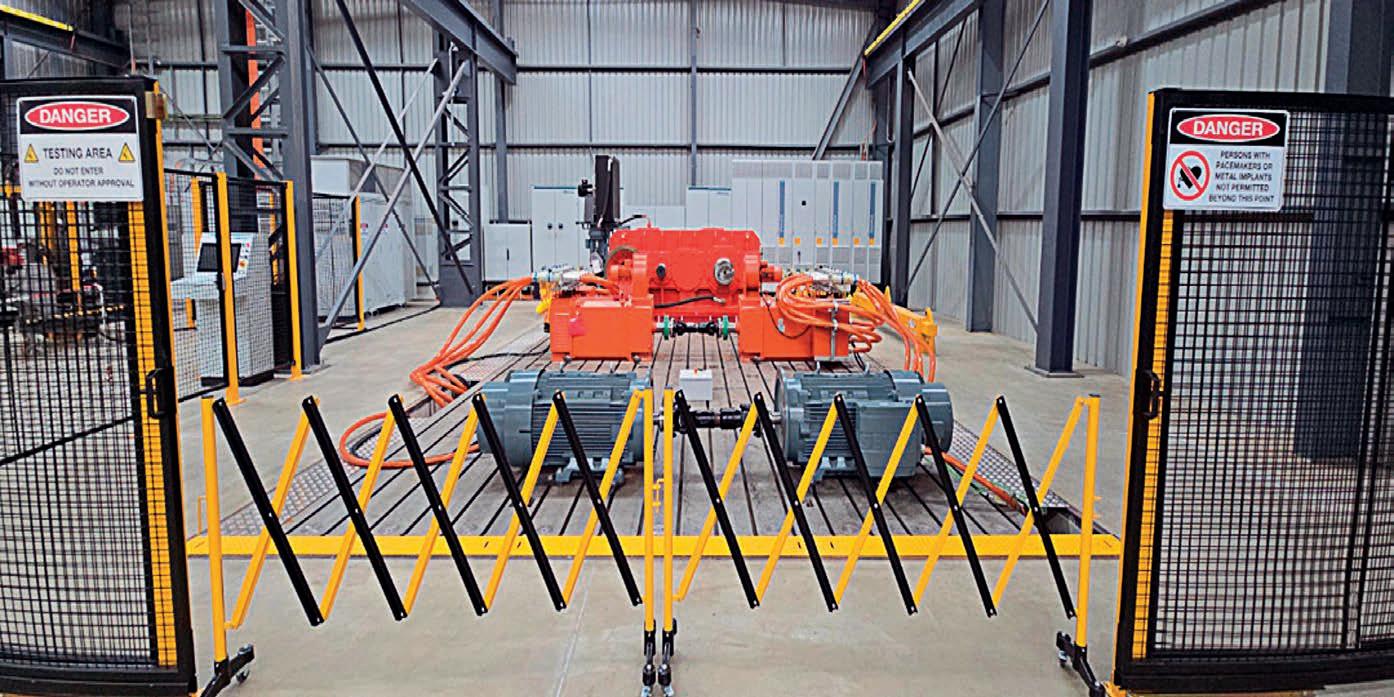
THE MINING SECTOR IS NO STRANGER TO ACCOLADES, BUT THE 2025 AUSTRALIAN MINING PROSPECT AWARDS CARRIED A SIGNIFICANCE BEYOND CELEBRATION.
For the first time, the Australian Mining Prospect Awards took place in Adelaide in 2025, coinciding with the Asia Pacific International Mining Exhibition (AIMEX). This relocation marks a new chapter in the awards’ history, one that underscores their role as a national benchmark for excellence, innovation and industry leadership.
Held at the iconic Adelaide Oval, the Prospect Awards now sit at the heart of AIMEX’s networking and showcase calendar. The alignment is strategic: AIMEX moved to South Australia in 2025 for a decade-long commitment, creating a natural synergy between exhibition and recognition.
As AIMEX drew industry stakeholders, innovators and suppliers to Adelaide, the Prospect Awards amplified that gathering into an evening of spotlight and prestige.
Over more than a decade, the Prospect Awards have grown into

the pre-eminent national program recognising standout performance, safety, sustainability, discovery, technology and leadership in mining. They provide recognition and a platform, shining a light on companies, projects and individuals elevating standards and pushing boundaries across Australia’s resources sector.
In 2025, categories ranged from Excellence in IIoT Application to Environmental Management and Sustainability, First Nations Engagement, Innovative Mining Solution, and Discovery of the Year.
Such a broad slate reflects the complexity and diversity of today’s mining sector. It is not just about extracting resources but about safety, community partnerships, decarbonisation, technology adoption and regeneration.
By celebrating these varied domains, the Prospect Awards have become something of a mirror to the aspirations of modern mining: efficient operations,
lower environmental impact, deeper social licence, and intelligent systems. Winning, or even being shortlisted, brings peer recognition, exposure and validation that resonates across supply chains, capital markets and communities.
A symbolic shift
Choosing Adelaide as the new home carries symbolic and practical weight. The move underscores the awards’ ambition to evolve and energise mining across the nation and not be confined to traditional centres of resources activity.
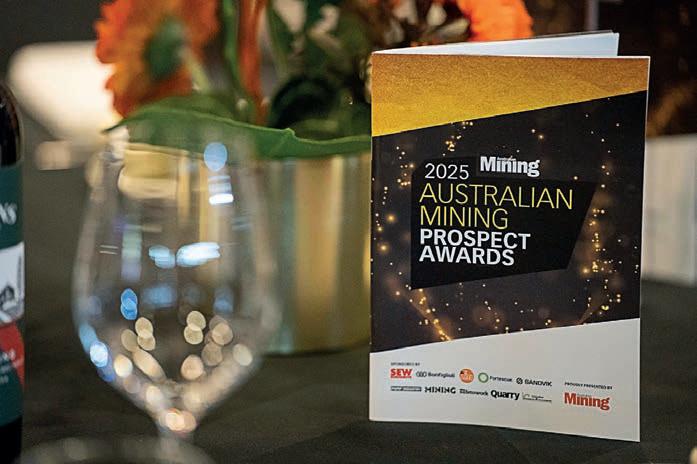



The Adelaide Oval was selected to reflect gravitas and local pride, a landmark location befitting the relocation and stature of the awards. For the local economy and mining community, hosting the awards in Adelaide is a signal that South Australia is increasingly central to conversations about the future of mining.
Alongside AIMEX’s decade-long commitment to the state, the Prospect Awards deepen Adelaide’s status as a hub for innovation, trade, networking and industry thought leadership.
This year’s finalists spanned a wide cross section. Such a strong level of competition underscores how the awards serve as a barometer of where mining is headed, highlighting what innovation, safety and community practice look like at today’s frontier.
The 2025 Prospect Awards honoured standout achievements that demonstrate how the sector is moving beyond plans into execution.
The finalists and winners demonstrate a trend: mining excellence in Australia is being defined not just by scale of output
but also by the sophistication of systems, the integration of safety and digital technology, and the
embedding of community and environmental performance.
The awards’ judging criteria emphasise measurable outcomes, innovation adoption and social and environmental impact, a reflection of contemporary industry priorities.
In a sector under pressure to deliver safety, sustainability and innovation while navigating global demand and social licence, the Prospect Awards provide inspiration, benchmarks
and visibility. They signal that mining companies are placing technology, community engagement and environmental performance at the core of what they deliver, not as add-ons but as integrated operational priorities.
The 2025 Australian Mining Prospect Awards were a genuine statement of confidence and intention, and a rallying point for the industry’s next chapter. AM
AUSTRALIAN MINING PROSPECT AWARDS CATEGORIES
• DISCOVERY OF THE YEAR
• ENGINEERING SUCCESS OF THE YEAR
• EXCELLENCE IN ENVIRONMENTAL MANAGEMENT AND SUSTAINABILITY
• EXCELLENCE IN IIOT APPLICATION
• FIRST NATIONS ENGAGEMENT
• INNOVATIVE MINING SOLUTION
• LIFETIME ACHIEVEMENT AWARD
• OUTSTANDING MINE PERFORMANCE
• SAFETY ADVOCATE OF THE YEAR
• AUSTRALIAN MINE OF THE YEAR


FROM APPRENTICE TO INDUSTRY ARCHITECT, CRAIG PEDLEY’S JOURNEY REFLECTS A LIFETIME OF INNOVATION, LEADERSHIP AND IMPACT ACROSS AUSTRALIA’S MINING SECTOR.
The headmaster’s office isn’t typically the place for a mining career to get its kickstart, but Craig Pedley’s 42 years in the industry have been anything but typical.
After yet another brush with school authority in year nine, his parents were called in and given some blunt advice: “You best find this kid a job.”
What followed was a lifelong immersion in mining, one that would span more than four decades, dozens of sites, and a commitment to innovation, leadership and giving back.
Pedley’s journey was formally recognised when he was awarded the Lifetime Achievement Award at the Australian Mining Prospect Awards, honouring nearly half a century of service to Australia’s mining and minerals processing industries.
As founder and chief executive officer
reshape how modular and mobile plant design is approached in Australia.
“It’s a bit of an amazing award to get for somebody that didn’t decide – just got told – to find a job,” Pedley said.
From his early days as a fitter working fly-in, fly-out (FIFO) shifts to becoming the manufacturing director and eventual CEO of two pioneering companies, Pedley’s career is a story of persistence, hard lessons and steady vision.
Striker Crushing, Screening and Conveying launched in 1998 and has since built a reputation for durability and reliability in the mobile equipment space, while MAX Plant, founded in the early 2000s, set a new standard in modular processing plant solutions.
Both companies grew under Pedley’s leadership into global exporters, supporting mine and quarry operations across the world.
But it’s the local story that defines
high-specification mineral processing solutions remain Australian-designedand-built.
What sets Pedley apart is not just his business acumen, but also his mentorship and commitment to values.
“I’ve had a lot of ups and downs,” he said during his acceptance speech. “I just really, really want to thank every mentor I’ve had throughout the journey … the ones who told me what not to do and led me in the right direction.”
Pedley’s companies are built on the lessons learned from time spent in the field. He has consistently emphasised fast deployment, low maintenance and fit-for-purpose design. This pragmatic, on-the-ground approach has enabled his teams to deliver processing plants quickly, reliably, and in some of the world’s most remote environments.
The Lifetime Achievement Award recognises a broader contribution to community and the national economy. Pedley’s support for apprenticeships, manufacturing capability and regional economic resilience have all played into that legacy.
Pedley closed his speech with gratitude and optimism.
“It’s been a wonderful journey. I wouldn’t have changed it. I’ve had a great time,” he said. “And I look forward to the next generation that comes into the mining industry.”
After 42 years of building, mentoring and leading in the industry, Craig Pedley’s greatest contribution may not just be what he constructed, but what he made possible for those who come next. AM
Lifetime Achievement is sponsored by Australian Mining.
THE LIFETIME ACHIEVEMENT AWARD RECOGNISES AN INDIVIDUAL WHO HAS BEEN INVOLVED IN THE INDUSTRY



BENEATH THE SUN-SCORCHED PLAINS OF SA’S LAKE EYRE BASIN, ALLIGATOR ENERGY UNEARTHED WHAT MAY BE A NEW FRONTIER FOR AUSTRALIA’S ENERGY FUTURE.
It began with a concept, a hunch buried beneath layers of geological data, remote terrain and generations of energy history.
For Alligator Energy, the Big Lake Uranium Project was not a proven resource, but a possibility. What followed was years of analysis, deep stakeholder engagement, and a pioneering spirit that took the company into uncharted territory.
When the drill rigs finally touched down on the parched, windbattered plains of South Australia’s Lake Eyre Basin, they chasing a longheld vision. And that vision has now been rewarded.
Alligator Energy was recently presented with the Discovery of the Year award at the Australian Mining Prospect Awards, recognising the company’s groundbreaking work at the Big Lake Uranium Project, a discovery that could reshape the future of uranium
Alligator Energy chief executive officer Andrea Marsland-Smith was thrilled to have the project honoured across the national mining industry.
“This award is a tribute to the vision and teamwork behind the Big Lake discovery,” she said in her acceptance speech. “We set out to be the first dedicated uranium explorer in the region, and it paid off.”
Located in the Lake Eyre Basin, the Big Lake Project represents a frontier exploration success story. In its first-ever drilling campaign in 2024, Alligator intersected broad zones of anomalous uranium mineralisation within palaeochannel sands of the Namba
Formation, a well-known uraniumbearing geological feature 250km to the south of the Big Lake Project. Follow-up chemical assays confirmed substantial uranium content, validating field observations and marking a significant new uranium discovery in an area that had never had dedicated regional uranium exploration undertaken.
Beneath the discovery lies the Cooper Basin, a historically hydrocarbon-rich zone that has long been a powerhouse for Australia’s energy sector. That same ground, MarslandSmith said, could now support a different kind of energy future.
WE ARE HOPEFUL THAT THE REGION COULD POSSIBLY BE A FUTURE SUPPLY OF URANIUM, WHICH IS POISED TO PLAY A CENTRAL ROLE IN THE ENERGY TRANSITION AND GLOBAL DECARBONISATION.”
“We are hopeful that the region could possibly be a future supply of uranium, which is poised to play a central role in the energy transition and global decarbonisation,” she said. “Discoveries such as this have the potential to make a global impact.”
The significance of Big Lake extends beyond geology. The company’s approach to stakeholder engagement has been central to the project’s progress. Alligator Energy has worked in close consultation with the Yandruwandha Yawarrawarrka Native Title land owners, as well as pastoralists and regional partners, to develop Big Lake with transparency and respect for Country.
Marsland-Smith acknowledged those efforts directly.
“We appreciate your partnership and your presence here tonight,” she said. “This discovery really is a reminder that even in well-trodden ground, there are still new stories waiting to be told.”
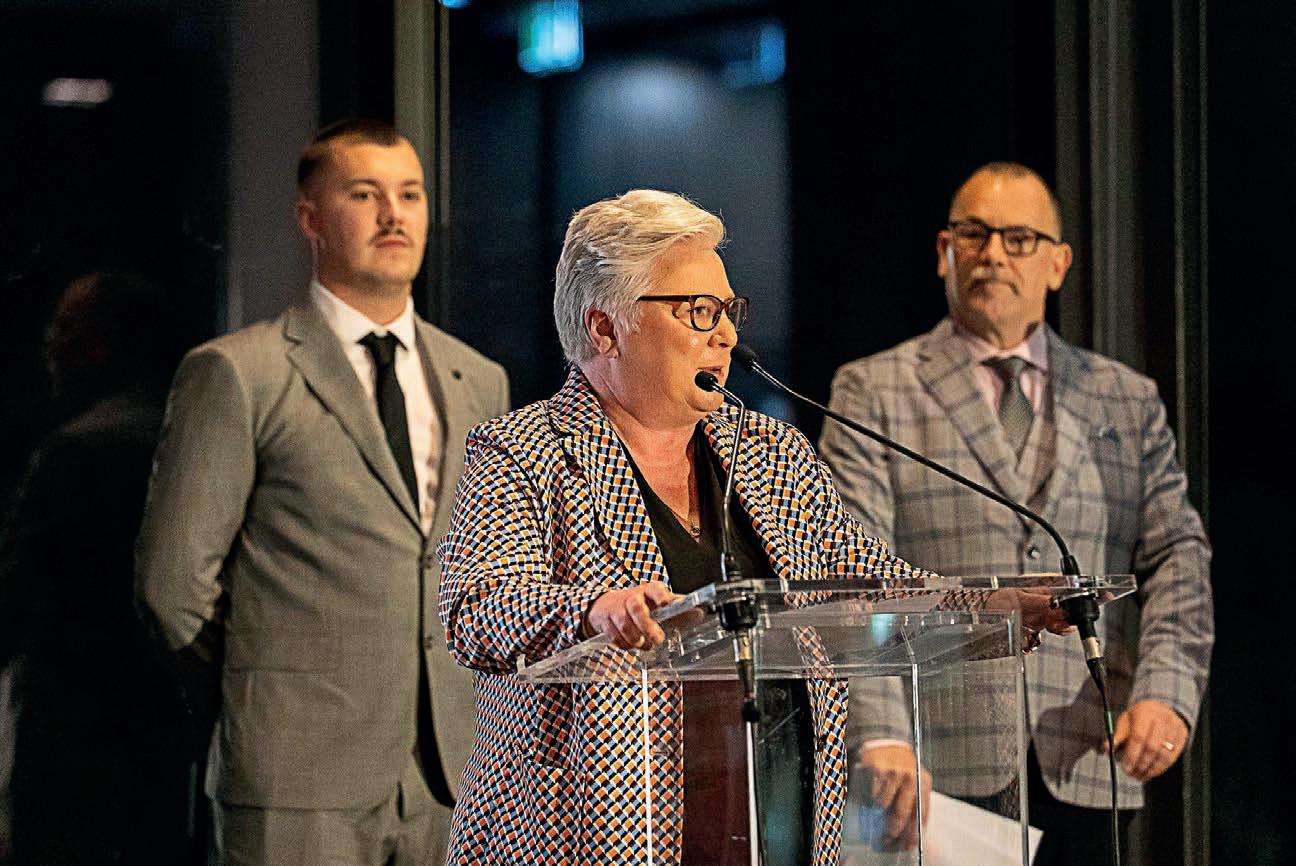
Further drilling is planned for early 2026, with Alligator continuing to position Big Lake as a potential new uranium province, one that not only supports decarbonisation efforts globally but also reaffirms Australia’s role in the future of clean energy supply.
“This started as a very conceptual geological target,” Marsland-Smith said. “Two years of technical analysis, stakeholder engagement and planning went into it. The team toughed it through wind, rain, extreme heat and multiple stakeholders just to get on the ground.”
That perseverance has now been recognised with one of Australian mining’s highest honours.
And, perhaps more importantly, it’s opened the door to a new chapter in uranium exploration beneath the red dust of Big Lake. AM
Discovery of the Year is proudly sponsored by Australian Resources and Investment.
DISCOVERY OF THE YEAR THIS CATEGORY CELEBRATES A SIGNIFICANT DISCOVERY AT EITHER A GREENFIELDS OR BROWNFIELDS SITE. DISCOVERY MUST HAVE BEEN MADE OR RECOGNISED AS SIGNIFICANT FOR THE BROADER AUSTRALIAN INDUSTRY WITHIN THE TWO-YEAR PERIOD OF THE NOMINATION’S CLOSING DATE.

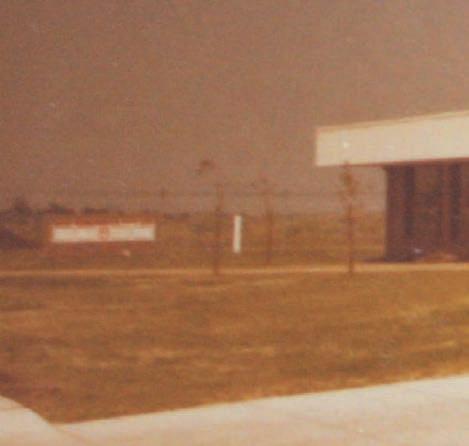




Like its subsidiaries around the world, SEW-EURODRIVE Australia has grown from strength to strength with its unrelenting pursuit of quality, unmatched service capabilities and flexibility across a broad spectrum of solutions. The company also supports its clients by assembling and repairing drive solutions nationally through its network of drive technology centres, spanning from coast to coast.
Supported by a global network of production and assembly plants, we assemble our products locally, according to customer specifications and all regional requirements.
SEW-EURODRIVE has become synonymous all over the world with high-performance and dynamic drive engineering. The vast range of products include gearmotors, electronically-controlled drives and industrial gears.
In addition to these products we offer a full spectrum of life cycle services for your ageing drive technology, including online support SEW-EURODRIVE can reverse engineer, service and repair drives regardless of size or make, including third party products.
With the Heavy Industrial Solutions (HIS) Assembly Centre located in Melbourne and HIS Service Centres in Adelaide, Melbourne, Mackay, and Newcastle, SEW-EURODRIVE is equipped to deal with all aspects of the mining industry. Our extensive expertise and tailored solutions ensure that we meet the demanding requirements of mining operations, enhancing efficiency, safety, and productivity in a challenging and ever-evolving sector.

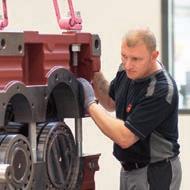

www.sew-eurodrive.com.au

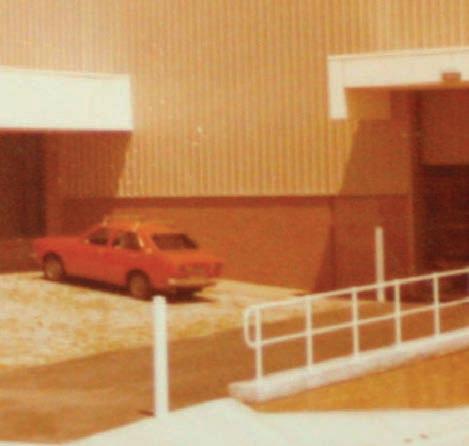




Company snapshot
• Incorporated in Australia 1982
• Head office in Melbourne
• 330 employees
• Industry leading stock holdings
• 7 sales offices
• New units, spare parts and service
• 7 service centres
• 2 assembly plants


SEW-EURODRIVE’s Adelaide office 2024.


AGNEW GOLD MINE’S NEW CRUSHING AND SCREENING PLANT SHOWCASES HOW INNOVATION, INVESTMENT AND TEAMWORK CAN ELEVATE A DECADES-OLD OPERATION TO INDUSTRY-LEADING STANDARDS.
For more than two decades, Agnew Gold Mine’s tertiary crushing circuit had served the operation reliably. But with increasing demand on plant throughput and dependability concerns mounting, the 21-year-old circuit was no longer fit for purpose.
The mine is best known for its underground operations, primarily targeting the Waroonga and New Holland gold deposits in Western Australia. Ore is extracted using underground mining methods and is then processed on-site.
Faced with an expansion into a third underground source at Agnew, Gold Fields teamed up with Sandvik to implement an innovative new plant that is now delivering outstanding results in efficiency, safety and productivity.
“Little old Agnew’s been there for 30-odd years, and it’s a little mine that just keeps on giving,” Gold Fields principal specialist for metallurgy Reg Radford said.
“About four or five years ago, we asked for about $30 million cash in hand to a get a crushing circuit up and running and replace assets that [had] done their time.
“It has been a great achievement for everyone on-site who’s continuing to benefit from some of these investments and this innovative thinking.”
Those efforts have been further rewarded after Gold Fields’ Agnew was named claimed the prestigious Australian Mine of the Year award at the 2025 Prospect Awards.
The award celebrates a site has reached its production goals and developed high-level safety controls, environmental and sustainability programs and has shown capacity to innovate to drive the industry forward.
The mine was chosen after Gold Fields demonstrated how its new Sandvik crushing and screening plant helped set a new operational standard.
Sandvik purpose-built the plant to meet the site’s production and safety needs by collaborating with Gold Fields on an innovative design that resulted in a state-of-the-art facility that enhances performance while ensuring sustainable, safe operations for the future. The project has optimised material handling, reduced downtime, and strengthened site safety protocols.
L–R: THE AWARE WAS A PROUD MOMENT FOR GOLD FIELDS’ TRISTAN FREEMANTLE AND REG RADFORD.

Radford and Gold Fields principal specialist for studies Tristan Freemantle spent months locking in project approval and funding.
It was a delicate balancing act: the site needed a circuit that was low maintenance, reliable and simple to operate while also using crushers and screens that had good after-market support. Eventually, Sandvik came

up with a complete plant design that was modular and comparable to other bespoke options.
Freemantle said the award further vindicated the mine’s decision to invest its crushing and screening solution.
“The project was executed through an integrated delivery approach, with each component strategically contracted to ensure timely and efficient completion,” he said. “We’ve got some of the best technology that Sandvik has been able to provide. It’s certainly a very proud moment, and [this award] is recognition of the effort and work that went into that crushing circuit and really demonstrates the importance of partnering with the right people to make these things happen and sharing a belief.” AM
Australian Mine of the Year is proudly sponsored by SEW Eurodrive.
AUSTRALIAN MINE OF THE YEAR
THE AWARD CELEBRATES A SITE THAT HAS REACHED ITS PRODUCTION GOALS AND DEVELOPED HIGH-LEVEL SAFETY CONTROLS, ENVIRONMENTAL AND SUSTAINABILITY PROGRAMS, AND HAS SHOWN CAPACITY TO INNOVATE TO DRIVE THE INDUSTRY FORWARD.


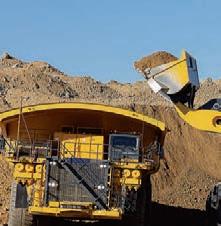








































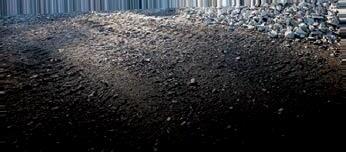















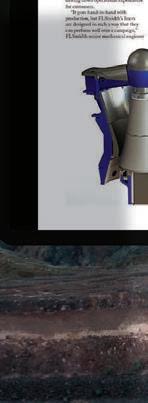




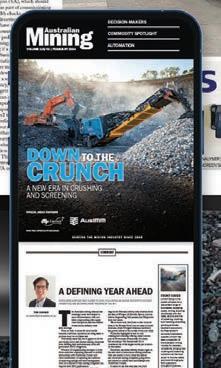



LOOKS LIKE IN AUSTRALIAN MINING.
When Rio Tinto’s Aboriginal Training and Liaison (ATAL) Program was recognised in the First Nations Engagement category at the 2025 Australian Mining Prospect Awards, it highlighted the company’s commitment to reshaping how the resources sector collaborates with Indigenous communities across Western Australia.
Rio Tinto’s ATAL initiative stood out in a strong field for its innovation, inclusivity and deep cultural grounding, redefining Indigenous engagement as a long-term, community-led movement rather than a transactional program.
Originally established in 1992 and running until 2009, the ATAL Program was relaunched in 2023 as a co-designed initiative with Traditional Owner groups across WA. The program’s renewed approach represents a significant shift in Rio Tinto’s engagement strategy – from focusing on employment targets to fostering meaningful, place-based partnerships that deliver lasting benefits.
ATAL’s framework is built around a three-phase model: community-based learning; on-site work experience; and post-placement support.
This structure ensures participants are supported at every stage of their career journey, from initial training through to integration into the workforce and beyond. The program’s emphasis on cultural integrity and collaboration keeps each phase aligned with the values and aspirations of the communities it serves.
ATAL has delivered impressive results since its relaunch; 54 participants have graduated, with 22 securing employment opportunities across Rio Tinto’s operations and partner organisations. Beyond the numbers, the program has fostered tangible outcomes in community
pride, economic participation and personal development.
The ATAL initiative has also been designed for scalability and sustainability. What began as a Pilbarabased project has expanded into new regions, including Perth and Tom Price, demonstrating its adaptability and potential to serve as a cross-sector model for Indigenous inclusion. Its success has inspired similar approaches in other industries, underscoring its role as a blueprint for genuine, long-term engagement between industry and First Nations communities.
One of ATAL’s most notable achievements is its contribution to gender equity within the mining workforce. More than half of the program’s participants identify as women, making it a standout example of how Indigenous-led training and employment programs can also advance diversity and inclusion across the sector. By integrating cultural liaison roles, mentoring networks and employee reference groups, the program creates a supportive environment where participants can thrive professionally and personally. It not only equips individuals with skills and confidence but strengthens community leadership, helping to build a pipeline of Indigenous talent across the broader employment ecosystem.
What distinguishes ATAL is its deep cultural foundation. The program was co-designed with the guidance of Elders, Traditional Owners and
regional implementation committees, ensuring that every decision is informed by cultural knowledge and community priorities. This collaborative governance model reinforces the values of trust and mutual respect, which are central to the program’s success.
The initiative’s recognition at the Prospect Awards underscores the growing acknowledgment across the resources sector that First Nations–led engagement delivers stronger outcomes for everyone. By embedding Indigenous voices into the heart of its operations, Rio Tinto is strengthening its
is a movement that champions cultural connection, community leadership and shared prosperity. As Rio Tinto continues to expand the program’s reach and refine its approach, ATAL stands as a testament to the transformative power of co-design and collaboration.
The First Nations Engagement Award recognises not only Rio Tinto’s achievements but also the collective effort of the communities, mentors and participants who make ATAL possible. Together, they are setting a new standard for how the mining industry can engage with respect, purpose and partnerships in order to create better programs, stronger relationships, and brighter futures. AM
First Nations Engagement is proudly sponsored by Sandvik.


Upgraded 800i crushers with new ACS-c 5
Even the best can always get better. Upgraded 800i crushers with new ACS-c 5 are our smartest, safest and most productive yet – designed around the needs of the people who work with them to raise the bar of what a crusher can be. Combining simple yet robust mechanical design with powerful user-friendly automation, 800i crushers are true workhorses that improve your ability to process more material, more accurately and more sustainably. Discover the upgraded 800i crusher series with new ACS-c 5 today, and see what’s possible when a crusher is designed with you in mind.



HANCOCK IRON ORE IS TRANSFORMING RAIL SAFETY AND MAINTENANCE WITH ITS AI-POWERED TRACKDEFECTX DEFECT-DETECTION SYSTEM.
Hancock Iron Ore’s cutting-edge railway defect detection program TrackDefectX has earned the company the 2025 Excellence in Industrial Internet of Things (IIoT) Application Australian Mining Prospect Award, recognition of a major step forward in rail safety and predictive maintenance.
The application was developed to identify and categorise defects on railway tracks through sophisticated image processing and deep learning algorithms on a range of defect types, including squats, spalling and gauge corner checking.
Specialist track engineer Munish Kumar was on hand representing the multi-disciplinary team at Hancock Iron Ore responsible for the development of TrackDefectX, including head of digital innovation, Chad Burrows, who told Australian Mining that recognition through the award “celebrates the innovation and dedication to unlocking practical and tangible benefits
the detection of rolling contact fatigue [RCF] and other critical defects.
“It’s an adaptive learning model; it continuously evolves, ensuring it stays ahead of emerging challenges by delivering instant, actionable insights.
“Our executive chairman, Mrs Gina Rinehart has long championed a culture of innovation across her businesses to achieve safer, more efficient operations and this has put us at the forefront of technological innovation within the mining industry.
“TrackDefectX isn’t just a tool; it’s a future rail solution that’s setting a new benchmark for rail operations,” he said.
With 350,000 images to filter through every month, automating the process has empowered the rail team to intervene quickly and immediately, preventing derailments and saving costs. A reduction in grinding costs alone equates to approximately $400,000 per year, while Hancock Iron Ore estimates track lifespan will be improved by at least 10 per cent.
its attention to the expansion of TrackDefectX into areas such as track geometry, skewed or cracked sleepers and fouled ballast, leveraging the platform’s flexibility and scalability
EXCELLENCE IN IIOT APPLICATION
to build an even more comprehensive railway maintenance tool. AM
Excellence in IIoT Application is proudly sponsored by ifm.
THIS AWARD RECOGNISES AN OUTSTANDING IMPLEMENTATION OF IIOT (INDUSTRIAL INTERNET OF THINGS) THAT ENHANCES MINING AND MINERALS PROCESSING OPERATIONS.



Accuracy | Reliability | Maximum Uptime





Ideal for mining applications such as conveyor monitoring, vehicle positioning, and level measurement.


Designed to last in harsh environments
Can withstand smoke, steam, dirt, and dust.







• Unparalleled long range with excellent accuracy for precise process control.
• Robust radar technology minimises maintenance costs and downtime.
• Plug-and-work installation with intuitive GUI—no specialised skills required.
• Built-in inclination sensor and internal diagnostics ensure maximum uptime.
• IO-Link ready for seamless integration and smart diagnostics.



GOLD FIELDS’ AGNEW MINE FIXED A CRUSHING BOTTLENECK WITH SANDVIK, EARNING INDUSTRY-WIDE PLAUDITS FOR THE AWARD-WINNING UPGRADE.
Improving production is the name of the game for Gold Fields.
Agnew Gold Mine, located 375km north of Kalgoorlie in WA, boasts a production history that dates to the late 1970s using a combination of underground and surface mining and processes all ore on-site.
However, the mine’s 21-year-old tertiary crushing circuit was becoming unreliable, producing a coarse 8-10mm output that placed significant pressure on the downstream grinding circuit and risked the site’s expansion goals.
Fearing a critical production bottleneck, Gold Fields turned to Sandvik, a multinational mining engineering company that had seen such issues arise worldwide.
“Sandvik really had a solution to every challenge that we threw their way,” Gold Fields principal specialist for studies Tristan Freemantle. “Sandvik was
A new state-of-the-art Sandvik modular crushing and screening plant was designed with “safety-first” as its core philosophy. A key challenge was installing the new circuit in parallel with the old one to achieve zero downtime. Sandvik’s innovative design helped solve this issue, purpose-building a plant that would optimise material handling and reduce operational hazards.
The partnership has been celebrated, with the Agnew Gold Mine winning the Outstanding Mine Performance Australian Mining Prospect Award.
The plant is now delivering exceptional results. The circuit is approximately 18 per cent more energyefficient and produces a finer product, with a width of less than 6.5mm. This immediately increased the downstream mill’s maximum throughput from 155 to 170 tonnes per hour, directly meeting
Financially, the upgrade delivered annual savings of at least $1.5 million and an impressive three-year payback period. A large part of this success, Freemantle noted, was the plant’s new automation.
“The old crushing circuit had its own dedicated control room, and the operator relied heavily on visual line-ofsight monitoring,” Freemantle said.
In contrast, the new Sandvik crushers have an “intuitive automation system” that was easy to integrate.
The upgrade also centralised control room duties, so one operator now manages the automatically running crushers from a single control room, supported by extensive CCTV.
This centralisation was a key factor in the annual savings, as it eliminated the need for a permanent second crusher control technician.
“I’m proud to wander around the new crushing circuit, which
demonstrates that Gold Fields is really committed to maintaining a safe working environment for our people,” Freemantle said.
Freemantle labelled the finished product at Agnew Gold Mine “outstanding”, and the Prospect Awards agreed, duly recognising it with one of the most prestigious awards of the night. AM
Outstanding Mine Performance is proudly sponsored by Bonfiglioli.
OUTSTANDING MINE PERFORMANCE
THIS AWARD RECOGNISES A MINE THAT IS PERFORMING WELL AND HAS UNDERTAKEN AN INNOVATIVE PROJECT, PARTNERSHIP, INITIATIVE OR PROGRAM.
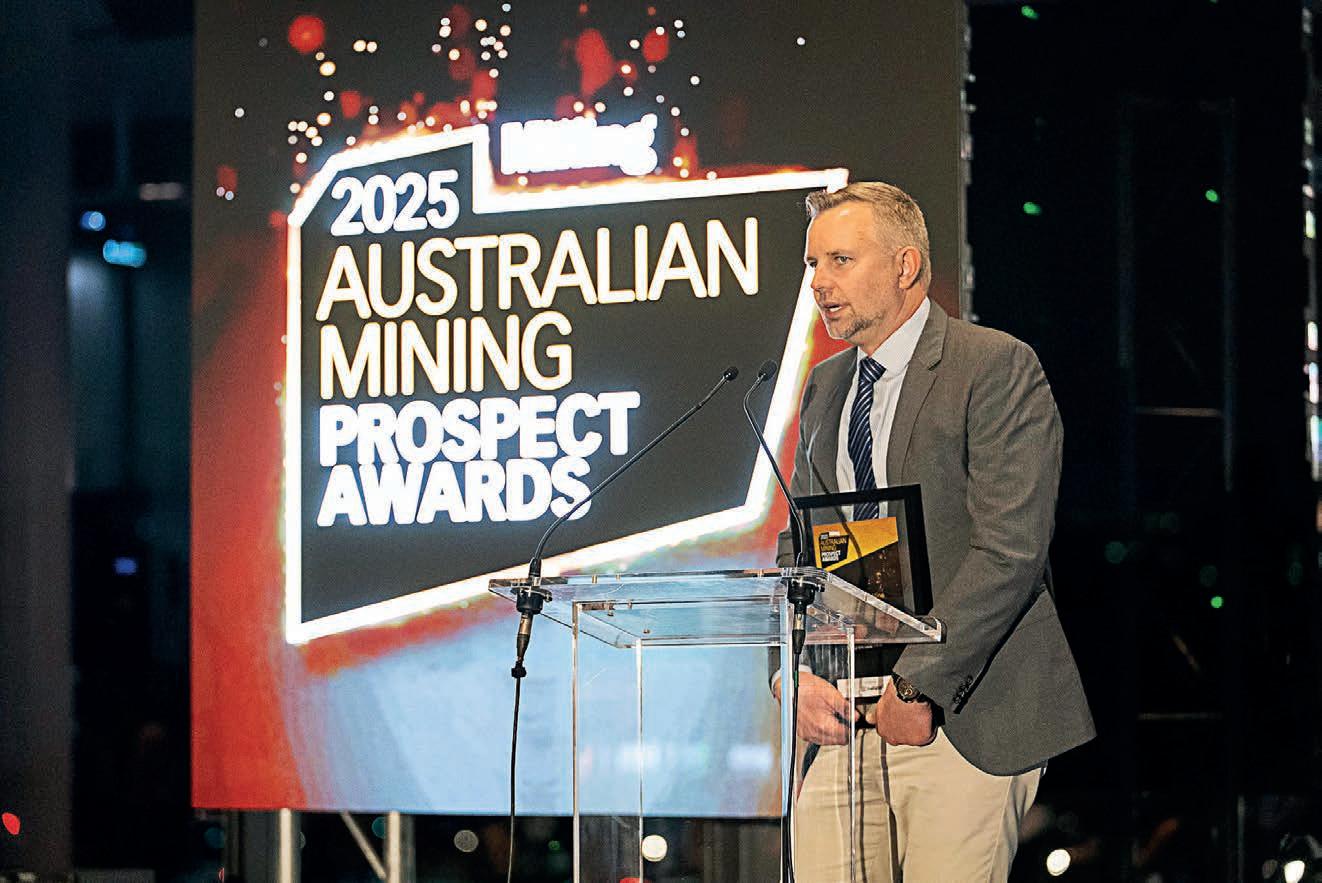





As a valued partner to the mining industry, Bonfiglioli offers a wide range of innovative solutions that effectively tackle the toughest tasks.
Our comprehensive portfolio of gear motors, gearboxes, drive systems, planetary gearboxes, and inverters have been developed over the last 60 years in collaboration with world-leading OEMs, to meet industry requirements.
We’re proud to be a sponsor of the 2025 Australian Mining Prospect Awards Celebrating innovation and excellence in mining and minerals processing.

https://www.bonfiglioli.com/australia/en
https://www.bonfiglioli.com/new-zealand/en


When Hancock Iron Ore chief operating officer (COO)
Dale Harris was named the recipient of the 2025 Australian Mining Prospect Awards Safety Advocate of the Year, he had earned the title by championing a safety approach built on “a culture, a mindset, and a shared responsibility” rather than “a simple checklist”.
Harris’ individual honour was one of three awards presented to Hancock Iron Ore on the night, underscoring the company’s commitment to safety and excellence across the board.
At the heart of this success is Hancock Iron Ore’s flagship health and safety initiative, Brilliant at the Basics (B@TB). Rather than focusing solely on imposed procedures, B@TB integrates employee-led safety processes, relying on strong leadership behaviours and a values-based approach.
I’VE SEEN FIRSTHAND HOW POWERFUL IT IS WHEN LEADERS ENGAGE WITH EMPATHY.”
The program’s goal is to move beyond compliance and embed a culture of care across all levels of the business, empowering every individual to take ownership of safety.
“This is recognition of the commitment of our executive chairman Mrs Gina Rinehart to the wellbeing of our people, along with every person at Hancock Iron Ore who chooses to make safety personal every single day,” Harris said. “For us, safety is not just a system or a checklist.”
This empowerment of personal responsibility has produced impressive results. The B@TB initiative was instrumental in achieving a major reduction in Hancock’s port and rail total recordable injury frequency rate and mine maintenance injuries, as well as a marked improvement in recordable injuries over the high-risk summer period.
“The results we’ve achieved, such as the reduction in injury rates, increased reporting and a stronger psychosocial safety, are a testament to what’s possible when safety becomes part of who we are,” Harris said.

resonate deeply with staff members and their families.
This approach is evident in the small details that make a big impact, including initiatives such as personalised letters
“I’ve seen firsthand how powerful it is when leaders engage with empathy, when teams innovate together, and when we treat each other with fairness and respect,” Harris said.
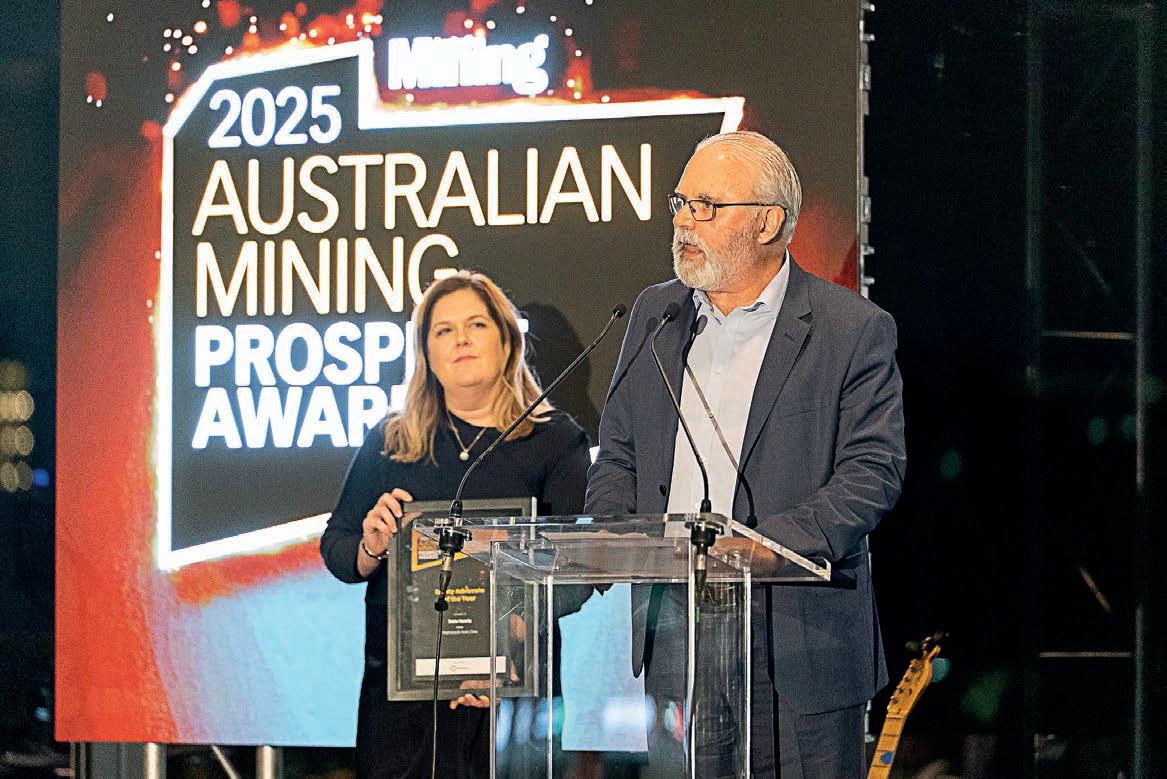
The win marks a significant achievement for Harris’s safety leadership, with the B@TB program taking out the Excellence in Mine Safety, OH&S category. This follows the 2024 Prospect Awards, where Harris’ former team at Roy Hill won the same honour for a campaign he was instrumental in leading, which is a true testament to his consistent, awardwinning approach.
Harris is a 30-year veteran of the resources sector, with a career spanning nearly two decades at Rio Tinto, where he spent 15 years in the company’s iron ore division. He has also held senior positions with Karara Mining and Hatch.. AM
SAFETY ADVOCATE OF THE YEAR
THIS AWARD RECOGNISES AN INDIVIDUAL WHO IS COMMITTED TO ENSURING SAFETY, EITHER FOR AN INDIVIDUAL SITE OR COMPANY, OR FOR THE MINING INDUSTRY AS A WHOLE. DEMONSTRATING AUTHENTIC CONCERN FOR OTHERS’ WELLBEING AND A COMMITMENT TO WORKPLACE SAFETY THROUGH STRONG LEADERSHIP ARE DEFINING ASPECTS OF THE WINNER’S APPROACH TO SAFETY MANAGEMENT.

We’re showing the world that Real Zero is possible and profitable. Real Zero is exactly what is sounds like: zero emissions. That’s good for the planet, for people, and for business.

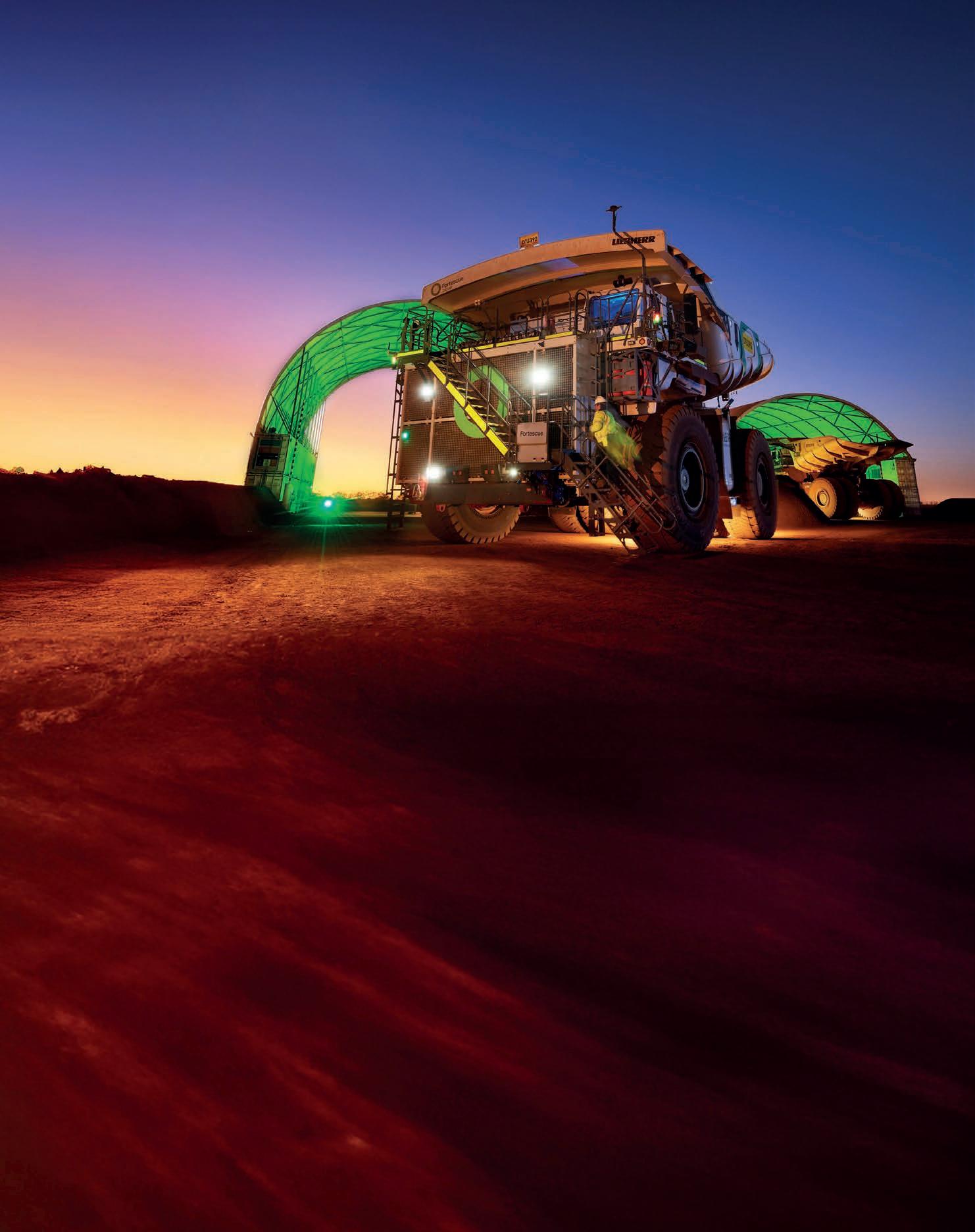
Learn more about our industry leading decarbonisation journey.


HANCOCK’S B@TB CONTINUES TO SUCCEED.
Hancock Iron Ore recently received the Excellence in Mine Safety, OH&S Award, a recognition of its highly successful initiative, Brilliant at the Basics (B@TB).
Launched in July 2024, the B@ TB program serves as the core philosophy for campaigns including ‘My Commitment’ and ‘Safer Summer’, each of which is aimed at reinforcing personal accountability, consistent safety behaviours and teamwide vigilance. Rather than focusing solely on rules or procedures, B@TB brings together critical safety processes, leadership behaviours and a values-based approach to embed a genuine culture of care across all levels of the business.
This holistic focus has produced outstanding results, reducing the company’s port and rail total recordable injury frequency rate by 48 per cent, decreasing mine maintenance injuries by 47 per cent, and achieving a 38 per cent decline in recordable injuries during the 2024–25 summer period.
“One of the things we’ve tried to do with our Brilliant at the Basics program is iron out a lot of variability by focusing on some really fundamental things that allow us to lead through the lens of care, driving accountability,” Slocombe said.
He believes maintaining these high standards requires a relentless mindset, as the B@TB philosophies have become “embedded in our everyday activities”.
“One of the things that we say is safety is like riding a bike uphill,” Slocombe said. “As soon as you stop pedalling, you fall off. So it requires constant energy and effort.”
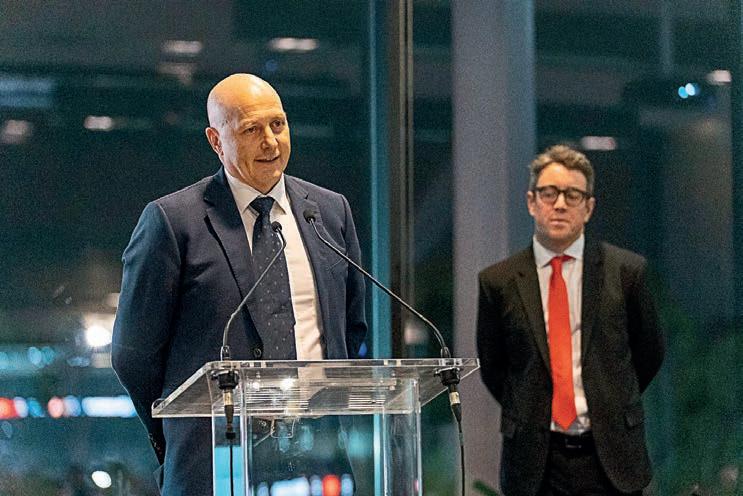
The Excellence in Mine Safety, OH&S Award represents a milestone win for the company, which formalised the merger of Roy Hill and Atlas Iron to become Hancock Iron Ore on July 1, 2025, and continues to focus on producing worldclass iron ore from WA’s Pilbara region.
This award builds on a proven track record of safety excellence. Slocombe said the success ultimately comes down
people has been central to the culture of safety at Hancock Iron Ore,” he said. Slocombe emphasised that the award is an opportunity to “double down” on the team’s work, a commitment that stems from a guiding belief: “The decisions we make are fundamentally driven by our values.” At its core, he believes B@TB’s success, and that
HANCOCK IRON ORE HEAD OF HEALTH AND SAFETY PAUL SLOCOMBE (LEFT) BELIEVES B@TB’S SUCCESS IS MEASURED BY HUMAN IMPACT.
of all Hancock Iron Ore initiatives, is measured by human impact. He expressed pride in the teams embracing the new philosophy, noting that their commitment is what “keeps you safe and gets you to go home safely every day”. AM
Excellence in Mine Safety, OH&S is proudly sponsored by Safe to Work.
THIS AWARD RECOGNISES A MINE, COMPANY OR PROJECT THAT HAS DEVELOPED OR CARRIED OUT A PROGRAM THAT INCREASED SAFETY, REMOVES RISK OR CUTS WORKER ISSUES ON A PROJECT OR MINE.

SLOCOMBE SAID THE AWARD REPRESENTS “FANTASTIC RECOGNITION”.


Dredge Robotics’ recognition as the winner for the Innovative Mining Solution category in the 2025 Prospect Awards is a watershed moment for the Western Australian technology company, which has relied on imaginative thinking to rise from humble beginnings.
“When I first started working at this company [in 2006], we were based in a shed next to a house with only three employees, and we had not much more than of a lot of ambition,” Dredge Robotics chief executive officer Antony Old said. “To be awarded this amongst a pretty heavyweight and impressive field is huge for us.”
Bibra Lake-based Dredge Robotics is helping to transform water asset maintenance in the mining sector with innovations like the Zero Entry Robotic Dredging System. This award-winning product is a remotely operated solution engineered to service ponds, tanks and tailings facilities without requiring manual human entry.
This process has traditionally required shutting operations and sending crews into hazardous, confined spaces, posing significant safety risks and substantial costs, including the downtime that associated with these hazards. With the Zero Entry Robotic Dredging System, this can all now be avoided.
Dredge Robotics, which has now grown to have more than 90 staff members, has revolutionised this aspect of the industry by creating entirely new robotic platforms that leverage advance sonar modelling, allowing operators to create a 3D map of the environment, guiding the robot with precision. This also enables on-the-fly adjustments in live production environments.
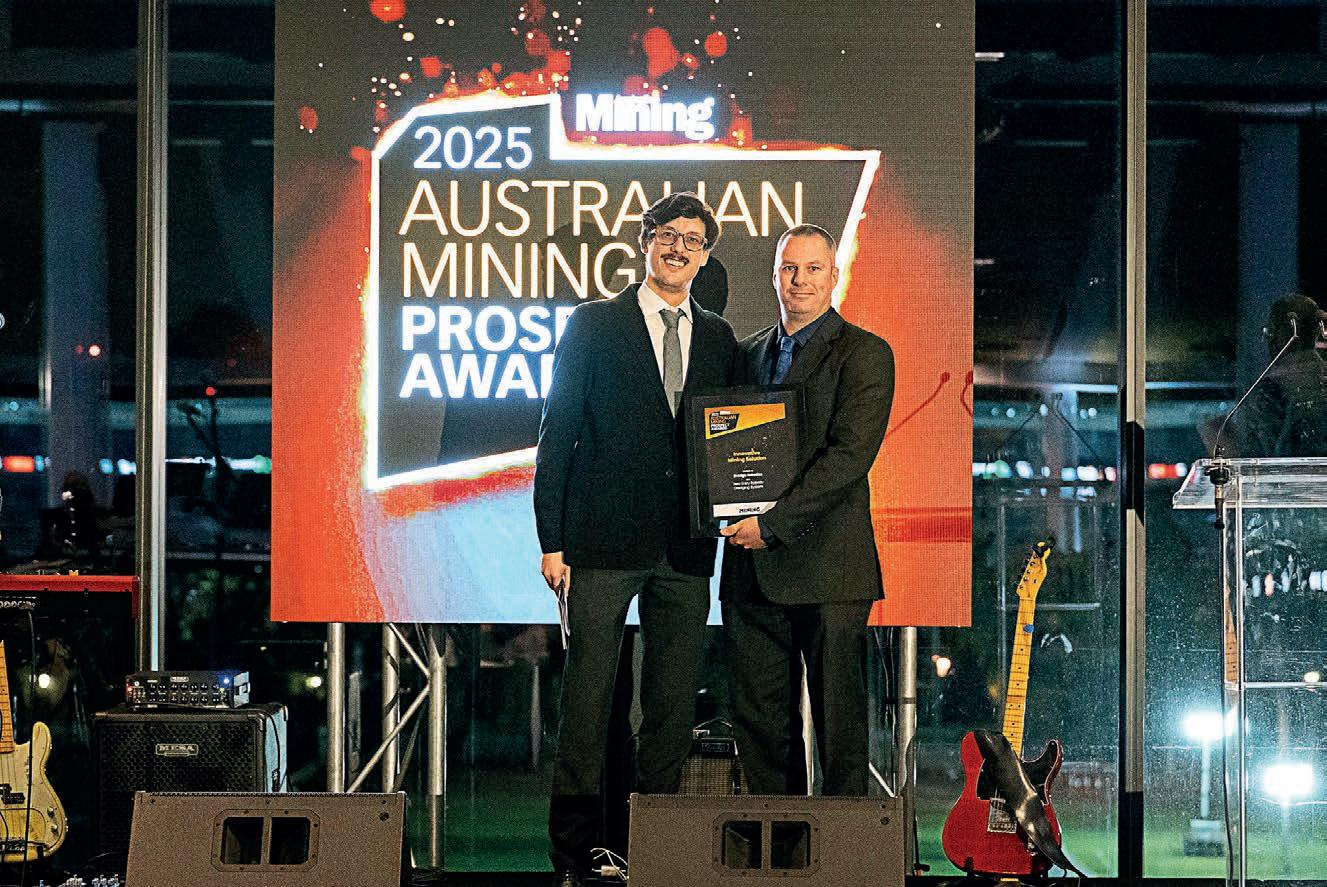
ability to recover valuable minerals that were naturally discarded during the mineral processing stages, and thoughtprovoking questions are being asked of what else the products can achieve.
Old said the company’s suite of technology is only just ramping up, with more hardware in production to take Dredge Robotics to another level.
DREDGE SAID THE RECOGNITION HIGHLIGHTS THE POTENTIAL OF ROBOTIC TECHNOLOGY IN MINING.
The Zero Entry Robotic Dredging System has been deployed at several high-risk sites across Western Australia and other mining hot spots, working with majors such as BHP, Rio Tinto and Fortescue. Old said it’s a huge endorsement for the company to be working with these kinds of Tier 1 mining companies, which have shown appreciation for Dredge Robotics’ solutions-based approach.
“Our clients will tell us what they’re struggling with, and then we’ll realise additional applications we never knew existed before,” Old said. “Suddenly, you’re working with high-value ideas which force you to explore new avenues of development.”
The Dredge team attended the MINExpo in Las Vegas last year, and the company is now exploring international markets, with OId saying it is on the verge of “becoming a burgeoning international success story”.
“[This recognition at the Prospect Awards] highlights not only the potential of robotic technology in mining but also the importance of prioritising safety, sustainability, and smarter operations across the sector,” Dredge Robotics said in a statement.

“Innovation in mining is thriving, and we’re proud to be part of that momentum.” AM
Innovative Mining Solution is proudly sponsored by Mining.
DREDGE ROBOTICS CHIEF EXECUTIVE OFFICER ANTONY OLD.
INNOVATIVE MINING SOLUTION
THIS AWARD RECOGNISES A MINE, COMPANY OR PROJECT THAT HAS DEVELOPED A UNIQUE MINING SOLUTION. THE SOLUTION MUST BE NEW TO THE MARKET OR MAKE SIGNIFICANT CHANGES OR IMPROVEMENTS TO AN EXISTING SOLUTION.



ASPA PROJECT IS “BUILDING A BETTER FUTURE”.
project is pioneering the future of mining land rehabilitation. The site is one of the most significant in BHP’s history and, in 2017, it became the second WA-based iron ore mine to produce one billion tonnes in its lifetime.
The land, located 90km north-west of Newman, is now beginning progressive closure, and doing so in a manner that has been applauded by the wider industry.
The Yandi Seed Production Area (SPA) recently took out the Excellence in Environmental Management and Sustainability category at the Australian Mining Prospects Awards for tackling one of the biggest challenges in mine restoration: a widespread scarcity of native seeds, made worse by a changing climate.
Thousands of hectares of land require revegetation each year. While native seeds have traditionally been sourced from the wild, innovative and sustainable approaches are now emerging to support biodiversity and ensure long-term health, allowing restoration of landscapes without compromising existing ecosystems.
species of Triodia (spinifex), grasses that define the region’s ecology.
“The initial trial was based on building a spinifex farm, basically to see if we could grow and harvest the seeds without going in and destroying a natural ecosystem,” BHP Yandi superintendent of site rehabilitation
Daniel Colbung said. “After that, we sat down as a team and thought about
on site, we can now produce hundreds of seeds per hectare using infrastructure we already have.”
With rainfall becoming less predictable, managed SPAs provide a stable seed supply and reduce pressure on wild populations, supporting climate resilience and rehabilitation success.
“There were no major costs involved, and it was just an innovative project that we implemented from the ground up,” Colbung said. “There was something we thought we could do, something simple and something safe. It was just an innovative idea that was developed from the group up.”
BY GROWING NATIVE SEEDS, WITH THESE GRASSES ON SITE, WE CAN NOW PRODUCE HUNDREDS OF SEEDS PER HECTARE USING INFRASTRUCTURE WE ALREADY HAVE.”
the best ways possible to safely and sustainably harvest spinifex.”
This trial showed spinifex can produce hundreds of kilograms of seed per hectare using existing mining infrastructure, offering a scalable alternative to wild native seed collections.
“What we discovered exceeded our expectations,” Colbung said. “By growing native seeds, with these grasses
Recognising that ecological and social restoration are interdependent, this initiative is linked to the Banjima Land Rehabilitation Partnership (BLRP), one of BHP’s community partnerships that supports Indigenous employment and career pathways through site rehabilitation.
The success of this trial as an alternative to traditional seed collection offers a
triple benefit: a scalable solution that uses existing infrastructure; protection of wild ecosystems; and supporting Indigenous employment pathways.
“Thank you to everyone who made this possible, our team, our project partners and all of you who believe that innovations and sustainability can go hand in hand,” Colbung said.
“Together, we’re not just fixing the land, we’re building a better future.” AM
Excellence in Environmental Management and Sustainability is proudly sponsored by Quarry.
EXCELLENCE IN ENVIRONMENTAL MANAGEMENT AND SUSTAINABILITY
THIS CATEGORY RECOGNISES A MINE, COMPANY OR PROJECT THAT HAS DEVELOPED OR CARRIED OUT AN INNOVATIVE, ENVIRONMENTALLYFOCUSED PROGRAM TO PROTECT, PRESERVE AND/OR REHABILITATE THE NATURAL ENVIRONMENT AND IMPROVE SUSTAINABILITY AND FOCUSES ON DECARBONISATION AND/ OR REDUCING WASTE AND/OR WASTE EMISSIONS.


ROBSON CIVIL PROJECTS HAS BEEN CELEBRATED FOR ITS RECORD-BREAKING REHABILITATION AND LAND MANAGEMENT WORK AT BHP’S MT ARTHUR COAL MINE IN NEW SOUTH WALES.
Robson Civil Projects was recently named the winner in the Engineering Success of the Year category at the 2025 Australian Mining Prospect Awards in recognition of its outstanding work on the Mt Arthur Coal Mine (MAC) rehabilitation and land management program.
The award celebrates a project that has delivered significant engineering outcomes on a mine site, and Robson’s work at MAC represents one of the most ambitious progressive rehabilitation initiatives undertaken in New South Wales.
Since 2022, the company has reshaped, revegetated and restored 297 hectares of land, including a record 145 hectares in the 2023–24 financial year (FY24), the largest single-year achievement in the mine’s history.
Robson’s scope of work under this rehabilitation and land management contract has been extensive. It includes bulk earthworks, drainage construction, weed and pest management, topsoil amelioration, and biodiversity restoration, with more than 14,000 seedlings planted in FY25 alone, contributing to measurable environmental benefits such as improved soil health and carbon sequestration. The project also incorporated the installation of 48 fauna habitats.
Central to the project’s success has been the application of advanced engineering and technology. Robson has deployed geofluvial landform design, precision bulk push analysis, and GPS-enabled machinery to meet strict slope and drainage tolerances.
Despite the scale of operations, logging more than 65,000 work hours, the project has maintained an exemplary safety record with zero reportable injuries.
Robson Civil Projects divisional manager – construction Michael Hanson spoke to Australian Mining about the award and the company’s work in NSW.
“Robson is a civil contractor that’s engaged in the mining sector in the Hunter Valley as well as Mudgee and the Central West,” Hanson said.
“We’ve been engaged in the rehab at MAC for three and a half years now, and ongoing. With MAC’s scheduled closure in 2030, it has been very busy times.
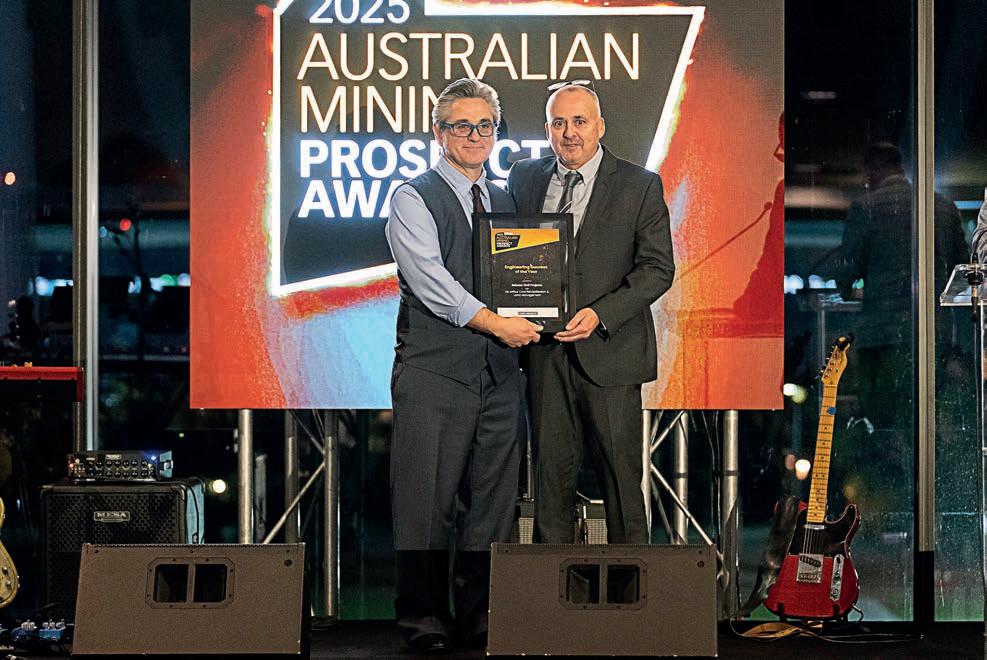
REHABILITATION WORK AT BHP’S MT ARTHUR COAL MINE IS AN OPPORTUNITY TO LEAVE A POSITIVE LEGACY IN THE REGION.

“We started in the mining space doing infrastructure such as access roads and tailings dams, and now a large part of our work in the Hunter Valley is for rehabilitation. With our work at MAC, rehab maintenance goes hand-in-hand with the rehab construction, so that’s been a new element that we’ve incorporated into our scope of works.”
Hanson, who joined Robson in 2014, brings more than 30 years’ experience in civil construction, delivering large-scale infrastructure projects for government agencies and private developers.
Appointed divisional manager for the Newcastle and Hunter Valley region in 2024, he has leveraged his expertise across roadworks, subdivisions, bridge
construction, mining, and water and wastewater infrastructure to guide project teams and ensure works are delivered on time, on budget, safely, and to the highest quality and environmental standards.
Robson’s contribution to BHP’s Mt Arthur Coal Mine demonstrates how civil contracting can successfully evolve into the rehabilitation space, delivering sustainable, non-polluting post-mining landscapes that benefit the environment and the community. The company’s approach and commitment to safety, environmental stewardship and technical excellence set a benchmark for progressive mine rehabilitation. This award recognises not only Robson’s engineering expertise but
also its strategic approach to land management, biodiversity restoration, and sustainable mining practices, reinforcing the company’s position as a leading civil contractor in the Hunter Valley and across the NSW mining sector. AM
Engineering Success of the Year is proudly sponsored by Pump Industry.
ENGINEERING SUCCESS OF THE YEAR
THE AWARD CELEBRATES A PROJECT THAT HAS DELIVERED SIGNIFICANT ENGINEERING OUTCOMES ON A MINE SITE.
The launch of the Atlas Copco X-Air+ 410-12 PACE portable compressor is an important moment for the mobile air power industry. In an era where versatility and efficiency are paramount, the X-Air 410 delivers a single machine solution that rewrites the rules for job site productivity.
Delivering Atlas Copco’s PACE (pressure adjusted through cognitive electronics) technology, this smart system allows operators to electronically set the working pressure from a low of 73psi to a high of 174psi, essentially turning one compressor into a multi-application tool.
Whether doing high-pressure cable blowing or low-pressure shotcreting, the X-Air 410 adjusts to deliver the optimal flow and pressure, maximising tool utilisation and eliminating the need for multiple fixed-pressure units.
This flexibility doesn’t come at the cost of sustainability. The integration of an intelligent ECO-mode provides a significant advantage, reducing engine speed and cutting fuel consumption by up to 50 per cent during periods of no air demand. Coupled with a StageIIIA Caterpillar engine, this commitment to fuel efficiency directly translates into a lower total cost of ownership for the end-user.
From its durable, corrosion-resistant
HardHat canopy to its intuitive digital controller, the X-Air 410 is built to thrive in harsh environments and simplify operation.
This compressor represents a new standard: a robust, intelligent, and highly adaptable workhorse that gives contractors a crucial competitive edge. The future of mobile air power is here and it’s remarkably versatile.
•atlascea.com.au
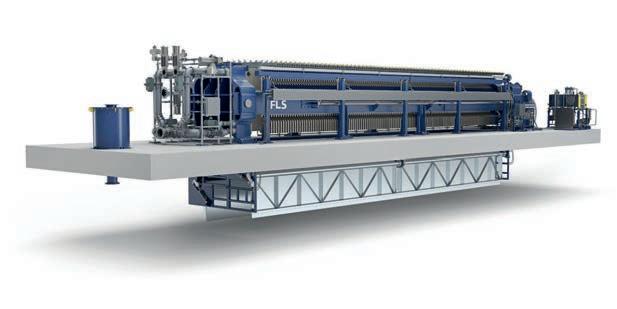

Sandvik Mining and Rock Solutions has introduced its new Sandvik DD312i, joining the company’s i-series range of development drills.
The new compact and automated single-boom jumbo, which capitalises on 20 years of drilling legacy from Axera D05 to Sandvik DD311, can be used for applications such as face drilling, cross cutting, bolting, development and production drilling in room and pillar, cut and fill, stoping or caving mining applications.
The Sandvik DD312i is suitable for medium-to-large sized underground drifts and can fit into narrow confines due to its compact carrier and small cornering profile.
Its new intelligent control system with torque optimised drilling is designed for mines seeking more tonnes with maximum profitability.
Miners can enjoy up to 50 per cent higher drilling accuracy, up to 26 per cent more drilling coverage and up to 20 per cent more productivity when the DD312i is combined with Sandvik’s scalable automation packages for drills.

and leaching, enabling the production of high-purity concentrates for marketable products.
However, the quality and availability of water significantly influence the performance and cost of mining operations.
While some mines use high-salinity water, it can negatively impact recovery rates and require specialised materials to handle the corrosive environment.
This is where FLS, a global mining technology leader, can help.
The company provides comprehensive flowsheet solutions for copper, gold, zinc, iron and lithium operations, among others.
FLS’s filtered tailings technology solution extracts water from tailings to achieve solids content of 75–90 per cent or more, enabling significant water reclamation.
This reduces water costs, minimises tailing storage facility footprints, and cuts closure expenses at the end of a mine’s life.
FLS’s filtered tailings technology solution is an example of the company’s commitment to innovation, efficiency and sustainability.
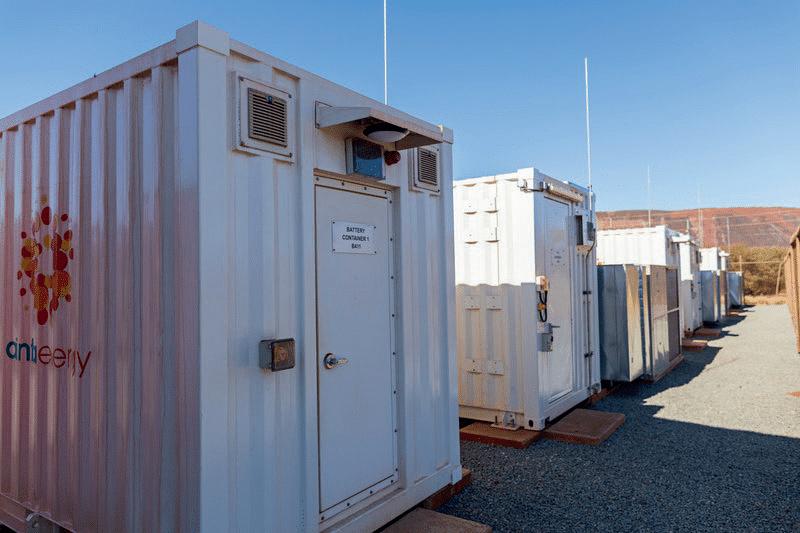
for 15–40 per cent of a mine’s total operating budget.
Most mines – especially in remote, off-grid regions – rely heavily on diesel or gas generators. Mines are also under severe scrutiny to follow local and international environmental regulations while working towards achieving netzero emissions from their operations.
Hitachi Energy helps customers utilise battery energy storage systems (BESS) to address several challenges converging at once.
These include significantly minimising OPEX (operating expenses) through reduced use of fossil fuels, such as diesel and gas, ensuring high power quality to supply off-grid mines with renewables and continuous mine operations, maximising productivity, minimising dependency on the grid power supply, complying with environmental regulations and becoming energy self-sufficient.
BESS solutions can be implemented to improve overall generator efficiency or create a virtual spinning reserve, the latter having one of the most compelling business cases for storage and paybacks typically under five years.
•hitachienergy.co









OUR TAILORED SUPPORT SERVICES KEEP YOUR OPERATIONS RUNNING STRONGER FOR LONGER.
From custom design, production and commissioning, through to predictive maintenance, decommissioning and asset disposal, our Product Lifecycle Services team keeps your assets performing at their peak, every shift.
Find out how you can get more from your load and haul attachments, by partnering with a team dedicated to providing an exceptional experience.
Scan for more information



















